Lifestyle
10 Pillars of a Strong Marriage
Everyone who embarks on the marriage journey wants to be in a union that is long-lasting and has a happy ending. To get to this happy ending requires effort and sacrifice of building pillars that will help the duo get there.


Being a part of someone’s life is one of the sweetest feelings anyone can experience—it could give you the butterflies. The joy of sharing, the warmth of love, the tenderness of shared experiences, and the intimacy of two souls and bodies becoming one are all part of the thrill of joining our lives with another. Beyond these, to find a soul mate—someone to love and who loves you in return; someone who understands you; someone who will travel through the journey of life with you in sickness and in health; through thick and thin; till death does them apart—are the goals of any blissful union. Everyone who embarks on the marriage journey wants to be in a long-lasting union and has a happy ending—at least, that is always the goal. However, it is not perpetually the case as some marriages end up crumbling due to not having strong foundational principles and ethical pillars that hold it up to stand the test of time. Tough times will come in a marriage; however, the aim is to weather the storms of those challenging times together. So, whenever people find that special “someone” that they can celebrate the bliss of matrimony with, they must endeavor to invest their time building strong foundations and pillars to hold up their marriage till death parts them. That is the reason we will be looking at the “10 Pillars of a Strong Marriage,” an article that will add value to your life.
The Golden Gate Bridge is an iconic landmark that dots the landscape of the city of San Francisco. Joseph Strauss is the engineer who designed this beautiful bridge that connects San Francisco with Marin County across the +5000ft (i.e., 1.6 km 0r 1600 meters) wide passage that we have all come to know as the Golden Gate, which unites the San Francisco Bay with the Pacific Ocean.1 According to the American Society of Civil Engineers, the Golden Gate Bridge is daubed as one of the Modern World Wonders.2 In other to maintain the beautiful bridge, do you know that it must be painted continuously? Some misconceptions exist about this fact. “Some say once every seven years; others say from end to end each year. The truth is that the bridge is painted continuously. Painting the Bridge is an ongoing task and a primary maintenance job. The paint applied to the Bridge’s steel protects it from the high salt content in the air, which can cause the steel to corrode or rust.” Like the Golden Gate Bridge, marriage is also a beautiful thing. However, like all beautiful things, the marriage institution must undergo continuous maintenance—just like the Golden Gate Bridge. It must be polished and sustained for it to stay beautiful and strong—year-in-year-out.


From the Christian and biblical perspective, marriage is the first institution God created. His ultimate purpose for this institution is to make sure man is not helpless, lonely, and for humankind’s continuity. In the original blueprint of marriage, it was built to last and stand the test of time—till death parts either of the two partners. From the primordial sense of it all, the institution of marriage was made so that the “man” and the “woman” will become one—enjoying their companionship and ensuring humanity’s continuity. As written in the Holy Writ, “This explains why a man leaves his father and mother and is joined to his wife in such a way that the two become one person.” From the biblical standpoint, that is established as God’s original intent about marriage. However, we know that marriage has become muddied in terms of meaning and intent via sundry subjective interpretations from this perspective and beyond. The institution has become easily disposable with reduced value—separations and divorce have become the norm in many societies today. This has raised the urgent need for both the physical and spiritual aspects to find some synergy. Why? Because a marriage built on a wrong foundation will not last—it will eventually collapse. In the dissolution of the marital union, hearts are broken—of the man, the woman, and the children (i.e., if children are already born into the union).
“In a happy marriage, it is the wife who provides the climate, the husband the landscape.” — Gerald Brenan
In the building industry, the construction’s foundation is the most critical aspect of the project, after which the pillars come second. The foundation is the basis or groundwork of anything. It is the natural or prepared ground or base on which some structure rests. It is the lowest division of a building, wall, or the like, usually of masonry and partly or wholly underneath the ground’s surface. It is the substructure that holds up the superstructure in buildings. These two, the substructure (i.e., the foundations) and the superstructure (i.e., the pillars and walls), ensure that no matter the weather’s storm or intensity, the building will stand the test of time. Building pillars are the vertical shafts or structures that are usually part of the above ground’s superstructure. They are commonly made of stone, brick, wood, steel, or some other materials, moderately slender in proportion to its height and any shape in section. Pillars are commonly used as building support, or they could stand alone when used as monuments. Foundations and columns are vital in ensuring that buildings don’t fall. Buildings collapse when the elements of the substructures or superstructures have been compromised.


We have seen the importance of foundations and pillars in ensuring the stability of a building structure. This also is true about the marriage institution. The foundation of each marriage union needs to be built on a mutual love for God and each other (i.e., the spouses involved). This is the pure love that harbors no hatred or grudge for each other. Establishing this kind of love is crucial before the couple can start erecting the pillars of honesty, transparency, trust, friendship, and all-around loyalty to foster their union’s sustainability. These pillars are formed through shared experiences. As the couple continues to share their experiences, it helps them solidify their union’s bonds, strengthening their marriage foundation. These pillars will be so natural and seamless to achieve for those marriages built on the right foundation. However, for unions raised on the wrong foundation, it will be an arduous process, which will involve extra effort and commitment by both parties. These marriages may survive if the partners realize their foundational errors and correct them. However, a lot of times, even strenuous effort and engagement may not salvage the union.
Also, the durability of a building depends significantly on how strong the foundation is situated. Weak foundations often lead to buildings collapsing—this also applies to marriage unions. Various elements will challenge the marriage institution. However, marriages that will stand the test of time have been built on a solid foundation. How ready a married couple is to ride the storms and challenges that their marriage faces will depend on their values. It will also depend on their belief systems and commitment to the success of the union. These are the things that contribute to the stable and lasting foundation of the marriage institution. So, the question is—who and what is the foundation of your union? On what grounds have you established the foundation of your union? A marriage that is built to last is what everyone craves. This foundation should not just be ordinary, flimsy, or whimsical. Being alone as a man can be lonely; however, having a helper akin to him can be beneficial. God’s objective for setting up the marriage institution was based on companionship. Having a helper who shares the same ideology, value, vision, and one who understands and respects your views, even if they differ from theirs, is the foundation of lasting happiness.


Love is a powerful word; it should not just be an emotion expressed on a whim. The phrase, “I love you” has been made so banal these days. It has been diluted by the variation of impatience that we are now so much accustomed to in our current society. Living in a jet-setting age has made everyone very impatient. We want things to happen in a certain way, and immediately as a matter of fact. However, when it does not pan out as we envisioned, we impatiently abandon the whole project. We are no longer patient to work things out and see how it pans out. As a result, true love is tough to come by these days. We see marriages that quickly come to an end because the two parties involved are unwilling to put in the work to ensure that their union is sustained. When troubles or misunderstandings arise, they become impatient with each other. Rather than work out their differences and allow their marriages to heal, many people are quick to go their separate ways by filing for a divorce. The current day media has not helped matters either. The media have hyped the prevalence of separations and divorces that it has quickly become a norm in society. The true meaning of love has been so diluted that many people no longer have an inkling of what it really is. A lot of couples even enter a marriage contract without the slightest clue of what love really is. If you don’t know what love is, you will lack the capacity to truly value love. So, what is love, really?
True love is glaring via the characteristics that it effuses. Love is very tolerant and gentle—it has a heightened ability to put up with things with every sense of pleasantness. It isn’t jealous or envious. Love doesn’t boast, brag, or strut about—there’s no arrogance in love. It’s never rude, crude, or improper—it’s not self-absorbed. Love isn’t easily upset. Love doesn’t tally wrongs. Love never celebrates injustice, but the truth—yes, truth—is love’s delight! Love puts up with anything and everything that comes along—it trusts, hopes, and endures no matter what. Now, these are the attributes that define true love. Comparing yourself to these attributes, can you say that you have genuine love? Love is often mistaken for lust or passion. No one should claim to be in love with someone because of beauty, physique, or charisma. Love is much more than all these physical attributes or qualities—these attributes fade quickly with age. The truth about love is that we cannot hide our true feelings and intentions for too long though we profess to love someone. In time, people see through this façade to the real person behind the mask—people cannot hide their true natures for but so long. Time reveals all eventually. However, sometimes we play blind, probably because of some short-term benefit we crave within the union that we have prioritized above what our instinct is really saying. Play the long game, see beyond the façade, and connect with reality. If you are blind to the actual substance of things in the interim, you will sooner or later regret it in the long term. If you open your eyes and see beyond the cloak, you will strategically eschew the chances of the negative dagger of pernicious circumstances falling on you. Play the long game, look beyond the smokescreen that is often presented in the relationship macrocosm.


It is easy to get into character when we meet someone new, but it takes extra effort to sustain this character, especially if we are not our true selves. It is only a matter of time before our actual personality comes to bear—we cannot hide our true identities forever. Everything that is hidden under the sun is soon often revealed. So, it pays for people to be real when in the dating and courtship scene. There is no use pretending to be someone else—why fake it, be real. The fact is that the truth will always come to the surface. If you camouflage your identity to be someone else, you are already starting your relationship on the wrong footing. You are assembling the wrong building materials for building the foundation of your potential relationship. Should you end up winning the heart of that special someone in the state of untruthfulness, you would have already started building the foundation of your future relationship on the wrong note. When your true-self bubbles up, you may already be married at this time, and this could potentially become an issue. The marriage begins to suffer—you are never in sync with your spouse. There are constant arguments. There is no sense of understanding between your spouse and yourself. There is no comparable conflux of notions that can help you two forge the perfect vision to channel the relationship forward. It becomes a union of the chaotic or a conflux riddled with the bullets of had I know regrets.
Many people are already in a messed-up marriage, sometimes even before it begins, due to building on the wrong foundation and ignoring the warning signs from the relationship’s inception. Some people indeed see the warning signs at the onset of the romantic alliance that potentially leads to a union. In the act of seemingly being blinded by a supposed “love,” or shall I say, “lust,” they head on wildly on the path towards a future marital rollercoaster. Listen to your gut feeling if you feel that something is not quite right when dating someone to get married to them. Watch their words. Watch their actions. Watch the effusion of their thoughts via their actions. Watch the company they keep. Watch their habits. All these are telltale signs of their true nature. Be wise and pay attention. If there are warning signs at the early stages of the relationship, it might be God allowing these orchestrating signals, performed by the conducting wands of the universe and destiny, to create an alerting and sonorous symphony of caution to warn your inner sense and subconscious to be wise careful. It may be the merciful hands of destiny nudging you like a child not to forge on ahead with the relationship. Do not throw caution to the wind. Shine your eyes before marriage—don’t ever go in blindly. It will allow you to see if you are about to build on the right foundation for your potential future union. After you are married, shine your eyes even more as you erect the pillars that will let the superstructure of your future home stand firm through the space of existence and the test of time.


Start with the right foundation when building a life with your right special someone. It would help if you had a formidable marriage substructure to support a long-lasting present and future matrimonial superstructure. Establishing a sound marital foundation is an investment in your future. A bad marriage can wreck your life, destiny and mangle the prospects of having a golden purpose. The positive return on investment (ROI) of building on the right foundation can be quite colossal, to say the very least. It would help if you began erecting the pillars that will support and sustain your home’s superstructure upon the proper marital foundation. Trust this fact; you will smile at the ROI if you do. However, building these ethical colonnades, to be honest, will never be a cakewalk. It could take months or even years before it will come to perfect fruition. However, it will require the conscientious effort of a deliberate and dedicated duo to form and establish the right foundation and pillars that will help sustain their future union.
“The secret of a happy marriage is finding the right person. You know they’re right if you love to be with them all the time.” — Julia Child
10 Pillars of a Strong Marriage


Building a strong marriage requires effort. In this article, we will discuss ten mainstays of a potentially strong marriage. We offer some potential advice to help the reader in their pillar building process for each point that we discuss. This advice is not professional conjectures but our recommendations of possible ways to help you build the pillars to sustain your marital union’s strength. We also advise that you seek the support of a professional Family Therapist for further counseling in your marriage situation. These ten pillars discussed below will help every married couple look for ways to refocus and strengthen their union.
#1. Know That You Are Not Perfect


The acceptance that neither you nor your partner is perfect is an integral part of creating a healthy marriage. You should expect shortcomings from your partner because it is only human and natural to mess up occasionally. We are prone to err as human beings. However, the goal is for us not to remain in the place that we have fallen. We must rise from where we have fallen, dust ourselves, and move on to better days ahead. However, it is pertinent to note that hanging on to mistakes made in a matrimonial home will eventually destroy the foundation of trust and psychological safety shared between the couple.
Our Advice: If you make a mistake in your marital union—accept it quickly and apologize. The worst thing you could do to your union is mess up but obstinately refuse to admit that you are wrong. Obstinacy or stubbornness is pernicious dynamite that will blast the foundation of your marriage to smithereens. So be advised—stop all that headiness and accept you are wrong, and save your marriage. If you make a mistake, admit it. If you are on the receiving end of the blunder, forgive. The offender part must not prove difficult to an extreme—that itself will help your marriage implode eventually. However, it would help if you never took the forgiving spouse for granted. Don’t keep repeating the same mistake recurrently because you feel that you will always be forgiven. You are crippling the legs of the psychological safety of your union. You may paralyze it to the point that it may never walk again expect a miracle occurs. So, be wise and resolve your issues quickly, and don’t let it fester before it becomes psychological gangrene that infects the relationship.
#2. Don’t Set Limits for Forgiveness


Don’t think that because you have forgiven your partner of an offense today, that it will never happen again. You should be willing to pardon repeatedly. After all, the Holy Writ stipulates that in one single day, we should forgive the offenses of others against us for seventy times seven (i.e., 490 times). That is what happens with people who are genuinely in love. You must have the willingness and capacity to forgive all the time. Cultivating this forgiving nature must be two-way traffic for the couple. Like we addressed in point #1, it does not suppose that an erring spouse continues in his/her errors. If you keep erring, you would only be crucifying the trust you two share as a couple repeatedly time after time.
Our Advice: Forgive your spouse quickly. Do not set a limit on how many times you will forgive your spouse. Some marital unions already have a predetermined number of times that they have set for themselves on how many times they are willing to forgive their spouses. In other words, we could say that their love for their spouse has a ceiling, a limit that they will not go beyond. However, as we have stipulated repeatedly, this does not give the erring spouse the impetus to continue erring because they know that the spouse will always forgive. Never take advantage of the forgiving nature of your spouse. Taking advantage of your spouse once or repeatedly is stabbing yourself repetitively.
#3. Be Truthful


Always be honest with your emotion whenever you are around your partner. Your partner invariably wants to know your real view about him or her. Don’t ever hide how you feel—be honest, be true, always be real about how you feel about each other. Anything short of this is falsehood. Your clarity of thought around him or her makes them feel secure and warm in the glow of your love. This will help create a matrimonial ambiance that is rooted in the firm grounds of psychological safety. A cerebrally, secure ambiance is where true intentions and opinions about a matter are stipulated without the fear of being judged. Your spouse wants to be sure you are not hiding anything behind that smile. Anything contrary to such assertion will erode the emotional security that the two of you share in your relationship. Your openness will assure them.
Our Advice: Truth frees you. It is very burdensome to tell a lie—it is a lot of work to lie to be quite honest. First, you must create a frame of mind to conceive a lie. Second, you must be cautious enough to ensure that you are sticking to the correct brass tracks of maintaining the deception. Third, to do so, you must keep using lie after lie to camouflage the initial lie that you started telling in the first place. Gosh! It’s just so much work to maintain a false state of mind. The truth is not always palatable. However unpleasant it may be, it always lifts a burden of guilt away from you. The truth will initiate the forces of the universe to play in your favor. In the present, the truth may be bitter or sweet; however, when the forces of the cosmos go into play, you will be one smiling at the end of the day. We honestly advise you to put the truth out there already and be free of that weight of guilt that lying will pile on your conscience.
#4. Create New and Exciting Experiences


Don’t let your relationship get stuck in a rut. Make your spouse your partner in adventure and the exploration of life. You only live once (YOLO) here on earth. So, if you two are hitched together in the bonds of holy matrimony, then make sure you make it a lifetime of memorable experiences that you will forever cherish. Be deliberate in the creation of new and exciting experiences. Marriage is meant to be organic and not rigid. No matter how old you are, life is intended to be treasured, enjoyed, and lived to the full. Having fun does not mean that you should break the bank. Creating lifetime memories can be simple things that are fun, memorable, and inexpensive. Live life, and don’t let life leave you and your matrimony behind. Etch your names on the stones of time as the duo that lived and had fun. Create blissful wedlock. Make it exciting.
Our Advice: Many people in marital relationships hide under the cloak of busyness that they forget to live and enjoy their lives. Before couples get married, they go out and have fun. After they get married, and possibly kids come along, their joyous and adventurous life goes out the window. We advocate that couples take care of their business—work, taking care of the kids, taking care of the home, etc. However, they must understand that they should never relegate their marriage relationship to the back burners—that is the recipe for friction and the potential for a looming breakup—schedule time to have fun as a duo in your nuptial union. A lot of people fall in love, get married, and fall out of love. They forget to fan the flames of their union to sustain the sparks of love that first brought them together. Be deliberate in making plans to spend joyful and loving times with each other. Create new and exciting experiences always.
#5. Be Quick to Apologize


Never sleep without making up. It should not matter who is right or wrong. Arguments might dovetail into something more serious, which would end up causing an irreparable rift. Don’t argue needlessly with your partner—it can rupture the bubble of cerebral security in your marriage to your spouse—you don’t want that. Once you begin to lose that security, it starts to erode the trust and freedom that the duo shares. Once you lose that trust, it becomes difficult to regain it back. A wound on the knee can easily be treated at its earlier stages. However, if allowed to fester and get infected, it could lead to gangrene, leading to an amputation. The same could happen to a marriage union—never permit a simple problem that a band-aid could fix to become a problem that you would now need surgery. Never allow a simple fix to spin out of hand. Calm the tempo of the storm before it becomes a devastating hurricane. Be quick to apologize to your spouse. Learn to resolve your issues quickly.
Our Advice: Learn to say, “I am sorry.” Only those who are proud refuse to apologize even when they are the ones at fault. Remember that pride goes before a fall. Such individuals are just so difficult. Some people are so difficult to please. If you offend them in any way, you are in for it because they are swift to hold a grudge. Some who offend others are so obstinate that they still claim to be right while wrong. Learn to be a humble soul when dealing with your spouse. To be humble is an art and must be honed. Never allow arguments and misunderstandings to fester. Allowing resentments to aggravate is very corrosive and quickly impacts the foundation and pillars of your union. Never hesitate to offer an apology where you need to. Saying, “I am sorry” will heal many hurts in your marriage. Also, do your matrimony a favor, and don’t be that spouse that picks a fight needlessly. By hurting the harmony that you two shares in your home via your needless rancor only hurts your union in the long run.
#6. Be Sensitive to Stress


Always watch out for pressure in your partner. On many occasions, people tend to behave quite irrationally when stressed. Don’t place demands or correct your partner whenever he or she is stressed out. Give them some space if you need to. This will allow them to simmer down before engaging them in a discussion to delve into the root causation of whatever is ailing them. Much more, when your spouse is stressed-out is not the best time to criticize him or her—it is like pouring gasoline on an already raging fire. It would be stupid to do so. Keep a close watch on your partner to detect stress. Your partner might not even know he or she is stressed. Research on the signs that indicate pressure, it might be of help. Stress can be dangerous to your union, much more, to either spouse’s health in the marriage.
Our Advice: Stress is not a good thing and should be avoided at all costs. If you sense it always in yourself or your partner, you two cautiously need to get to its root and address it as soon as possible. Stress can be dangerous and can cause the following ailments: headaches, heartburn, rapid breathing, the risk of a heart attack, pounding heart, fertility problems, erectile dysfunction, missed periods, increased depression, insomnia, weakened immune system, high blood sugar, high blood pressure, stomachache, low sex drive, and tense muscles. Irritability, anxiety, depression, headaches, and insomnia are the manifestations that show that someone is under chronic stress. Make sure you are not the cause of stress in your matrimony—eschew stress like a plague. Don’t be the one that aggravates it but rather the one that helps to curb it.
#7. Communicate, Listen, Meditate, and Pray Together


Communication, listening, meditation, and praying together are critical ingredients for success in every marriage. A family that is united in the place of prayer, they say, stays together. Prayer fosters a calm atmosphere and leads to better communication. It helps to soften the heart when there is anger and creates room for both partners to talk, listen, share, and forgive one another where needed. Don’t forget that communication is not complete without feedback. So, whatever the reaction may be, please take it as feedback and be ready to take responsibility. As part of developing a suitable communication link, couples also need to listen and hear each other. Plus, jointly developing times when a couple engages in meditation also helps them develop a sustainable and calm atmosphere that allows them to communicate better.
Our Advice: First, communication is crucial in any marriage. Couples that don’t communicate effectively are crippling their union. Learn to talk about your issues. The big mistake that some couples make is assuming that their significant other knows what they are thinking. This prognostication is usually false. Say what you think and say what you mean. Let your communication be clear. Second, we should also add that developing communication skills in a relationship also requires that you learn the art of listening to your spouse too. It makes no sense of communicating when no one is listening. That is equivalent to no communication at all. Third and fourth, it is also beneficial to meditate and pray together, respectively. From a Christian perspective, meditating on the Holy Writ together and praying does a whole lot of good to married couples. It draws a couple closer to God and themselves. So, it would not hurt to make actively communicate, meditate, and pray together.
#8. Never Keep A Secret


Never keep a secret—always be open with each other and share what you feel with your spouse. Don’t be discouraged by the thought of how your partner will react. No matter how terrible the situation may be, learn not to keep something that is bothering you to yourself. It is quite toxic to do so. In the ideal sense, couples should have personal lives that are open books to themselves. Nothing should ever be a surprise to you and your spouse. It is better to tell your partner than for him to get the information elsewhere. So, be honest and share personal secrets with each other.
Our Advice: If you are keeping secrets from your spouse, you are already going off the tangent, to say the very least. It is a regretful place to be in a marriage situation. Some spouses choose to keep some parts of their lives to themselves because they are not psychologically safe with their spouses. Some say it is because they may have been burnt when being vulnerable to the one they love. Because of present or past experiences of being vulnerable with their partners, they bottle up some aspects of their lives in other to stay psychologically safe. Some spouses say that when they tell it all to their spouses, in the heat of future arguments or misunderstandings, their spouse regurgitates their shared stories of vulnerability in a spate of emotional blackmail—talk about a matrimonial James Bond movie in real life. If your spouse shares their secret with you, don’t use it against them. It is not just right; it is all the way wrong. However, keeping secrets from your spouse is not the ideal state—try and be open always. Failure to share your secrets with your spouse means that the love you share with them is not really at 100%. That is the fact.
“I want a happy marriage and whatever it takes to achieve that. But I think the main prerequisite would have to be respect. He would have to respect me and vice-versa. And, that would be more important than being in love. I think respect really goes a long way. And he would have to keep me happy. And he’d have to be very, very, secure.” — Shilpa Shetty
#9. Sex


The supposed dreaded three-letter-word that is always mentioned in a hush-hush tone and note practically by everyone. (NB. We will address this topic in as much detail as possible without being overly explicit because of our audience). There is continually a negative connotation whenever the word “Sex” is mentioned—even in the marriage prairie. Society satiates itself with various notions of sexuality but somehow still finds a way to avoid discussing it or frowning at it. Sex is a beautiful thing in the right state or frame. Others may choose to define it within the premise of their understanding and credence. However, via the lens of my understanding, as conservative as it may seem—I establish that God created sex for enjoyment, balance, and procreation within the bonds of matrimony between “man” and “woman.” Per my credence, this is the right state of sex, and it is to the benefit and value of humanity. However, no one wants to talk about it could be attributed to the cheapening of sex by many societies today. Because of this prevalent fact in many societies, its value has been gravely diluted. Because of this dilution, sex is seen as dirty, where, in the right sense of the word, it is a pure act, in the right state, as we posited above. Sex is seen as a no-go area that should never be discussed in many arms of society. Unfortunately, this has also crept into marriages.
As a married couple, you need to discuss sex freely. It is a formidable pillar that can make or mar your marriage. The art and act of sex should be addressed without inhibition by the husband and the wife. The goal of sex between a married couple is companionship, satisfaction, and procreation. If a spouse is not satisfied, they should let their partner know without any fear and hesitation. As a spouse in a marriage union, you should never be selfish with sex. Some couples, for reasons best known to them, deprive each other of sex. As sad and selfish as it may sound, it is happening out there. This is not justified, but that is one of the principal reasons people end up stepping out on each other. Sex in marriage is an art. Your goal should be to give and make sure that your spouse is satisfied with the art and act process. It should never be all about you. In the heat of the moment, you must look for all satisfactory and mutually agreeable, and pleasing angles to choose to satisfy your spouse. Learn more about your spouse and what pleases them sexually. However, also learn about being romantic and educate yourself in the fine arts of foreplay.


Always ensure that your partner enjoys the moment more than you do. The goal should perpetually be to please. If the two partners have this ideology, they will end up always satisfying each other. We also mentioned that one of the principal benefits of sex is procreation. When engaging in sex, married couples do so with the aim of companionship, pleasure, and the aspiration to have children in the future. This keeps the population of the world going and growing. At least, this is the original intention of sex. Couples should view sex as a chief responsibility to each other. Anyone of two spouses can make a move—don’t let the request for sex be one-sided. Remember, one might surely be better, active, or crave for it more than the other. So, it is wise you both know your limit and work things out. The consent to engage in the art of sex must always be mutual. However, no matter what happens, the duo should never defraud themselves of each other—that is, creating a loophole for vices to creep into your matrimonial home.
Our Advice: It has been stated in detail in this section concerning the various notions about sex within the home. Despite the incongruous connotations linked to sex, it is nevertheless a beautiful thing. It helps foster a deeper bond between the married couple. Sex should never be perverted. Sex should remain in the confines of its original state—matrimony between a “man” and a “woman.” In so doing, its sanctity, beauty, and purity can be maintained. Married couples need to be forthright in communicating their thoughts with each other when it comes to sex. Be open about it as you discuss it with your spouse. Try not to be selfish about it—be giving and always aim to please. There should be no shyness or reason to be ashamed. It is an art and a journey that is meant to be treasured, respected, and enjoyed. So, for all the married couples out there, have fun as you go at it.
#10. Sacrifice


One of the criteria for love is the willingness to sacrifice. You can’t claim you love someone if you are not willing to put the other person’s needs first. If you are selfish and think only of yourself, you will eventually crash your marriage—that is, if you are married. There is a place for self-love. However, under the marriage institution umbrella, there is also a place for altruism. If you are single and excessively self-focused, you may end up being single for a very long time. Again, there is a place for some altruism in other to attract people to yourself. Marriage is all about sacrificing the “self” to a certain degree. By this, we mean that you must be ready to sacrifice your time, pleasure, resources, pride, and your overall desire for your partner. After you have done all these and more, you could boldly say that you are genuinely in love.
Our Advice: Give your very best to each other. Never go half the distance, go the mile and even go the extra mile in loving your spouse. As earlier espoused, there is a place for self-love. However, in the bonds of marriage, a spouse is bound to share. A spouse is bound to give themselves to their significant other. Giving material gifts to your spouse is a marvelous idea. However, the best benefits that you could ever give your spouse are those moments that you share with them. The pleasures, resources, pride, and an overall desire for your partner are all very crucial likewise. Give these sacrifices to each other, and you would be sowing seeds that will germinate into a long-lasting union, ceteris paribus.
“The secret to a happy marriage is if you can be at peace with someone within four walls, if you are content because the one you love is near to you, either upstairs or downstairs, or in the same room, and you feel that warmth that you don’t find very often, then that is what love is all about.” — Bruce Forsyth
Conclusion


We have seen a lot of facts in the preceding paragraphs of this long-form article. We saw that being a part of someone is the sweetest feeling anyone could ever experience. When a man and woman tie the nuptial bond, it comes with its share of joys and challenges. However, a duo’s goal is to jointly weather the storm together in a robust and beautiful union. Being married is far from being episodic—you must work at it continuously. Maintaining your marital union’s beauty and sustainability is an ongoing task—till death parts the duo. Hence, it would help if you polished your union always to sustain its shine and radiance. The concept of marriage is for companionship and the furtherance of humankind. It is a valuable institution and must be treated as such. It is not to be cheapened as society has done today via the prevalence of numerous acts of separations and divorces in every community. The institution of marriage is not one to be distorted or trifled with. Its sanctity must be maintained across the whole macrocosm.
We also saw that the foundation of any building structure is the critical reason why buildings stand or fall. Despite a building having a formidable substructure, it also needs to have a firm and stable superstructure that is buttressed by pillars and walls for it to stand. A firm building foundation will help the building stand despite all the weather’s vagaries that attack it. Building a stable marriage can be likened to building a house on the right foundation. Sustainable marriage is a mutualistic effort that must be done on the right footing. A strong foundation and supporting ethical pillars are also crucial for a marriage to succeed and survive the weather’s vagaries that attack it. Building a union on the wrong foundation is what leads to frictions, heartbreaks, separations, and divorces. That is why a match formed on the right foundation is crucial, sustained by robust ethical pillars. In this article, we have explored in detail ten posts that can help maintain the superstructure of marriage and help prevent it from collapsing or caving-in to the detriment of all those involved.


The first pillar we looked at is for you to know that you are not perfect, and neither is your spouse. If you commit a blunder, correct it immediately and quickly move on. Don’t let it fester by continually dwelling on it. Second, make sure you are not setting forgiveness limits. A couple must learn to cultivate a long-lasting bond of forgiveness as an avenue to sustain their union. Don’t tell your spouse that he or she has an “x” amount of times that he or she can offend you in the algebra of life. Also, spouses should never capitalize on this fact of always being forgiven based on remaining in perpetual error—you are only digging your own early grave if you do that. Third, couples always need to be truthful with each other. It is a lot of work to tell and maintain a lie. To lie to your spouse means that you are not truthful to yourself—you are technically destroying yourself literally. Always tell each other the truth. Start first by telling yourself the truth and do the right thing. Fourth, always find avenues to create rich and exciting experiences. Marriage is meant to be organic and not too rigid. So, don’t be too stoic; make your marriage a fun adventure. Fifth, you need to be quick to apologize. Those who are hesitant to say, “I am sorry,” will quickly rupture the bubble of their nuptial bond. Those who find it difficult to apologize are proud. And as the saying goes, “Pride goes before a fall.”
Sixth, you should always be sensitive to stress in a marriage union. Do all in your power to eschew unnecessary pressures. The weight of anxiety is not only detrimental to a union but to the life of the person that is involved. So, avoid stressful situations in a marriage situation. Seventh, learn to communicate, listen, meditate, and pray together. Communication is the golden key to sustaining your home. Learn to listen to each other. Learn to meditate and pray together. As the saying goes, “the family that prays together stays together.” Eighth, learn never to keep secrets from each other. This may be a struggle for many; however, in an ideal state, a couple should never keep secrets from each other. The lives of couples should be an open book. Couples should learn to work at it. Ninth, all married couples should have sex often with their partners in the word’s ideal and right sense. Sex is meant for companionship between the “man” and the “woman.” It is for pleasure as well as for procreation. It is not dirty—in the prototypical state of the word, it is supposed to be pure. Finally, tenth, marriage is all about making sacrifices. The best benefits and sacrifice that you could ever give your spouse are those time, pleasure, resources, pride, and an overall desire for your partner.


We have explored a lot of angles in this long-form article. Time and effort have been dedicated to this writing to add value to all readers’ minds concerning the importance of the marriage union. Before we end this piece, here are some final words of significance. Marriage is a thing of value and must be taken as such. It is not an institution that must be trifled with—careful thought and consideration must be exercised before you venture into it. Society has watered it down a lot. People now see it as typical to jump from one union to the other. One could say that it is almost now fashionable to have a string of previous “exes” to parade around in the annals of your life. The subjective perspective that this article promotes is for people to find that special someone—learn to love yourselves, and grow old together in a happy and full life.
Marriage is a marathon and not a hundred meters dash across the field of life. So, if you are single and hoping to get married, think it through. Don’t wait for a lifetime to get married if you wish to be; however, be sure to do so carefully. Please don’t rush into it. Many folks rush into marriage blindly and quickly fly out of it when all does not pan out as they have planned. Shine your eyes before going into a marriage union. Keep shining your eyes even after becoming hitched to your spouse. Are you already in a marriage union? Inspect your union and see if it is built on a solid foundation. If yes, bravo. If no, it is never too late to start building a strong foundation. Start retrofitting your marriage foundations with the pointers that this article delivers. The ethical pillars you build will help you sustain your union’s sturdiness for the long haul. Remember, the pressures of life will surely come. The foundation and pillars you have built are what will keep your union from crumbling. If you see that your foundation and pillars are weak, start today, and construct a formidable foundation. If it can be done on buildings via foundation retrofitting, it can be done in your marriage.


“My parents’ long and happy marriage was a great ideal to live up to, but a tough one.” — Olivia Williams
Adopt these pillars and tell your shining story! We hope that some or all these pillars work for your benefit. Following through with these pillars will require your commitment and hard work. No one says it’s going to be easy. There will be times you may cry and need a shoulder to lean on, and there will be times that you will laugh. There will be times that you will have to tear down unfavorable structures in a union, and there will be times to build foundations and pillars to sustain the union. There will be times of war, and there will be times of peace—we wish you all more times of prosperity, love, and peace. The key to succeeding in the marathon of love is determination. Like I always say, “Determination today will lead to success tomorrow.” Keep at it. Always remember that with determination, you can achieve your desired result—even in your marriage. Have a happy married life. Carpe diem!
(NB. The points that are discussed here are not exhaustive in any way. We welcome all constructive comments that will help our process of adding more value to minds).
References
- A View on Cities. (2018). Golden Gate Bridge. Retrieved from www.aviewoncities.com/sf/goldengatebridge.htm
- Wikipedia. (2018). Golden Gate Bridge. Retrieved from https://en.wikipedia.org/wiki/Golden_Gate_Bridge
Relationships
10 Ways to Improve the Art of Communication in Marriage
Cultivating good communication in any relationship is not a cakewalk. This piece explores various strategies couples can use to improve the art of communication in their marriage relationship. To find out more, please, read all about it!


Every form of relationship thrives on good communication. Without it, no message is passed or received, and no understanding is involved. The cessation of communication in any relationship, especially in marriages, is the sure death of that relationship. Communication is a part of everything we do as humans. Parents communicate with their children, bosses with their workers, and friends share with their fellow friends. However, the most intimate form of communication exists between spouses.
“We have two ears and one mouth so that we can listen twice as much as we speak.” — Epictetus.
Research establishes that poor communication is one of the leading causes of misunderstanding or divorce between couples in marriage situations. For communication to be effective, there must be a mutual understanding between the message sender and the receiver. There must be a clear message from a sender and a corresponding response from the receiver. Effective communication comes to fruition when mutual understanding exists among the parties.


Good communication is an essential ingredient for building lasting and successful marriages, while its absence does the opposite. Marriage counselors and therapists have established that most marital disputes and misunderstandings are by-products of poor communication. Hence, they provide counseling services to couples whose marriages are on the verge of collapse due to a breakdown in communication and other marital concerns.
Many people grew up in families where their wards did not give effective communication its place. Effective communication is an education on its own. When you grow up in a dysfunctional home where appropriate communication is non-existent, you do not know the right way to communicate later in life. Hence, they go on with their lives thinking that such dysfunction is a common way of life. Consequently, they face challenges responding to their spouses, especially with non-verbal cues.


Consider our opinions via this article as a freebie couples therapy session for you. Please, note that the thoughts expressed here are not from a licensed couple therapist. So, suppose you have severe problems in your marital home concerning effective communication or the lack thereof. In that case, Oaekpost advises you to seek the counseling services of a licensed marriage therapist. Let’s get down to the brass tracks and explore ways to improve the art of communication in marriages.
10 Ways to Improve the Art of Communication in Marriage


The goal of every married couple is a harmonious relationship where the communication is hitch-free. Every couple will face communication challenges at some point in a marriage relationship. If anyone says that they always have a smooth ride in their marital communication, then someone is not being sincere. However, a conscious effort toward resolving the communication gap maturely will bring a spark to their love again.
The art of effective communication in marriage is an art. Developing a masterpiece requires effort. What you work on will work; what you don’t work on will warp. Read this piece with an open mind and attitude that seeks to improve and change. So, here are ten ways to help you improve your communication in marriage.
#1. Listen First


Sometimes, it is very tempting to interrupt your spouse or be the only one talking to prove a point in a conversation. Especially when tensions are high, we always want to put in the last word in communicating our point without listening to the other’s point of view. It is often beneficial to calm down, be tolerant, and listen to your spouse and what they say. Cultivating a listening ear would have saved so many relationships and marriages.
Listening to your spouse is another form of respect. In the words of Bryant H. McGill, the American poet, prose author, aphorist, speaker, and activist, “One of the most sincere forms of respect is actually listening to what another has to say.” Listening shows respect for the other person’s opinions and feelings. It allows everyone to express his grievances. Interrupting your spouse may be misinterpreted as arrogance and an uncaring attitude. Mostly, people who don’t listen are those who feel that they are always right or that other people’s opinions do not matter. You would not want your spouse to feel like you are the only one to crow.
#2. Make Eye Contact


Words and other forms of written communication speak to our heads and minds, while non-verbal communication (including eye contact) speaks to our hearts. Staring down while your partner is talking may mean that you are afraid or simply not paying attention. You may have heard people complain that you were not listening to them because you were not making eye contact. Maintaining eye contact for a long time may not be possible. Even if your eyes wander periodically, try to bring them back to look at your spouse while they are talking. It shows that you are present and in the conversation.
#3. Spend Time Together


Couples who enjoy each other’s presence always look forward to spending time with each other. Communicating with each other is often the magnet that brings such couples together. There will always be something to talk about when couples stay together. It could be an experience at work, reminiscing on childhood days, extended family issues, a social cause for concern, or just a chit-chat about anything. Having someone to talk to is enough to dispel any lingering feelings of depression or loneliness, strengthening the marriage bond.
“Learn to spend some quality time with your significant other and be patient enough to listen to them.” — Ogbonnaya Agom-Eze.
The lack of communication in a marriage situation often forms the foundation of couples who do not want to spend time together. When couples have nothing to talk about, they often drift apart and seek the communicative company of others. Such married couples often cultivate relationships with other people to forge a communicative bond. It could be with members of their extended family, social friends, coworkers, etc. Couples in marriages that often gravitate towards divorce usually start with one or two spouses spending time with others, in-person or virtually, in the pursuit of companionship. One thing leads to the other, and then the seeds of infidelity are sown.


Learn to spend some quality time with your significant other and be patient enough to listen to them, even to the boring talks they must share. It shows that you care, and you are present. It can be so frustrating for any party to be laden with so much to talk about, but all they have is a partner who is never available. Julie Baumgardner of First Things First wrote that “The average couple spends only 20 minutes a week talking with each other. Turn off the technology and make it a point to spend 20-30 minutes a day catching up with each other.” Her advice is a stitch in time that could save nine.
#4. Do It Right


Timing is everything in cultivating the art of effective communication in marriages. For communication to be effective in marriage, individuals must know when to bring up specific discussions. They must know how to present them and where to hold a frank talk. The right word at the right time is like precious gold set in silver. The proper conversation tuned at the right time will always produce positive results. But the right or wrong discussion at the wrong time could be disastrous. Hence, when communicating with your spouse, be cautious about doing it right at the right time.
Communication is an art. You must do it right at the right time. Therefore, it has a How, Why, When, and Where. The “How” describes the approach. Beginning a talk with piles of accusations is not going to end well—it is toxic and will eventually eat away at your relationship bond until it breaks. The “Why” is the purpose of discussion, and this should be strengthening the bond of love or settling an existing dispute, not creating another, or proving gender superiority. The “When” describes the appropriate time for any talk. A serious discussion when everyone is groggy will never get the attention it deserves. The “Where” refers to the place. Couples can choose where to have serious meetings and light gist. Most importantly, couples should know where they can resolve the most substantial issue.
#5. Mind Your Language


Language power plays a significant role in communication between lovers. Let your language be appealing and not weak. Focus on being optimistic rather than pessimistic. Let it be a turn-on for more conversation and not a turn-off. Using harsh words like, “I don’t care!” and others that show aggression, dominance, vengeance, or nonchalance will surely discourage your partner from expressing themselves next time.
Also, frequent use of the word “you” suggests that you blame your partner for everything. Constantly blaming your spouse for everything is a narcissistic trait to exclude yourself as perfect and infallible. In the words of Robert Anthony, “When you blame others, you give up your power to change.” Doing this can be unhealthy and will eventually harm your relationship. Balance your language and tone of communication. It will do you much good at the end of the day.
#6. Be Approachable & Accessible


Being available does not necessarily mean that you are accessible or approachable. Some couples stay at home without saying a word to one another. Or some married folks could live together physically but separated in mind psychologically. They are available in person but inaccessible in reason. These kinds of couples are pretty much like roommates living together.
Being approachable gives your spouse the freedom to reach you without fear of counteraction or criticism. Accessibility and approachability mean that you and your significant other are psychologically safe with each other. Psychological safety in marriage means you feel your partner cares about your emotional experience and vice versa. When our partners feel emotionally safe, we can share our hopes, fears, vulnerabilities, and pain. When these feelings are acknowledged, we feel confident that our partners will care for them.


Lack of communication and trust often indicates the absence of emotional safety in a marriage. Not addressing this could lead to a skewed mental health situation. To learn more about this, check out the Oaekpost article “10 Things that will Erode Psychological Safety in Marriage.”
Naturally, people will always tend toward those they know will listen to them and not jump in to judge them at every instance. Being approachable and accessible also shows that you value your spouse enough to give them your time. At least, we are no longer in the era where women sought permission to discuss with their husbands.
#7. Avoid Distractions


Research has shown that couples’ indiscriminate use of gadgets and electronics threatens effective communication in marriages, especially when a spouse wants to initiate a conversation. Some people become addicted to their digital devices (i.e., mobileholics) at the expense of their relationships. It is advisable to turn off the television, mute your social media chats and reduce any form of distraction when having a conversation with your spouse.
#8. Ask Questions


Sometimes, it is not just enough to listen to your partner. Communication is bound to break due to interference from both internal and external factors. However, asking questions can put you back in the flow. Beyond listening, your partner wants to be sure that you understand what they are talking about and that you are not lost in your thoughts and just waiting to have your time to respond. When you ask questions, you won’t get lost in the conversation. It provides clarity.
Research in the Journal of Personality and Social Psychology found that asking questions is a way of showing complete attention. Responding to questions with statements like, “So what you mean is…” or “You had said that…” and other words which affirm your attention reduces breakage in the communication path. It also ensures that you did not only hear but understand what your partner has said and calls for redress if you had misunderstood anything. Hearing is one thing, but proper understanding is paramount.
#9. Observe


We all have different temperaments and peculiar experiences that shape our lives, actions, behavior, and thoughts. And as such, not everyone can express themselves or even spark up a discussion freely. Do more to make yourself accessible in your marriage relationship, as we saw in the preceding paragraphs. Doing so will make you more readable to your spouse.
Observation is key to effective communication. Observe your spouse enough to know when they have something to talk about but need an avenue to speak. In such an atmosphere, help your spouse out by asking if they have anything they want to talk about or starting a conversation that will make it easy to speak up. There is a saying that the best way to prove that you are listening is to hear the unspoken words of your partner.
#10. Be Friendly


Apart from being a lover, be your spouse’s best friend. Friends talk more, communicate, and understand each other better, and are not afraid or ashamed to talk about anything. Make your spouse your friend on all your social media contact lists. Be friends online and offline. Understand when an issue is just for the laughs and when it is severe, and don’t pick on everything. Melanie Curtin, writing for Inc.com establishes that, “people who consider their spouse as their best friends are twice satisfied with their lives than people who don’t.” Is this your story?


The article discusses various methods for improving communication in your marriage. Are you listening enough to your significant other? Are you present when talking to your spouse? How much time do you spend together? How effective are you at communicating the right things at the right time? Are you harsh? Are you approachable and accessible? Do you get easily distracted when talking with your spouse? How often do you ask questions to get clarification? Do you observe and know your spouse? How friendly are you to them? Be candid in answering these questions and take steps in a positive light and improve how you communicate with your significant other.
“Couples must go the extra mile to ensure that they bridge any gap in communication channels.” — Ogbonnaya Agom-Eze.
Finally, the ball is in your court to curb any toxicity in your marriage communication. Improving the quality of communication in your marriage could be the only therapy you need to heal your marriage. Marriage requires the conscious effort of all parties to work. Couples must go the extra mile to ensure that they bridge any gap in communication channels. Applying these few steps wouldn’t be too much to do. Don’t be silent. Seek professional help if you need to. Remember, a closed mouth doesn’t get fed. Speak up and heal up.
Leadership
15 Reasons Why Inspiration is a Core Leadership Trait
Do you wish to learn what it takes to influence or inspire great followership as a dynamic leader? Do you want to understand why we believe inspiration is a core leadership trait? Well, look no further. Join us in discovering these reasons and become an inspirational leader today! Please, read all about it!


Effective leaders express various potentials (i.e., traits or attributes) that distinguish their leadership qualities as exceptional. Traits are distinguishing characteristics or qualities, which may be unique to one’s personal nature. In the leadership macrocosm, there are various theories of leadership (e.g., Contingency, Relationship, Situational, Behavioral, Participative, Management, “Great Man,” Trait, etc.). According to the Verywellmind, the Trait Theories of Leadership assumes that “people inherit certain qualities and traits that make them better suited to leadership.” The Verywellmind espouses the Trait Theory of Leadership spawns from the “great man” theory of leadership that was first proposed by Thomas Carlyle in the mid-1800s.
“Inspiration is the greatest gift because it opens your life to many new possibilities. Each day becomes more meaningful, and your life is enhanced when your actions are guided by what inspires you.” — Bernie Siegel.
Without delving too much into the origins of various theories, so far, in this leadership discourse on Oaekpost, we are establishing that there are core leadership traits (CLTs) that we see in leaders in various industries. So far, we have looked extensively at the following CLTs in leadership—decisiveness, empathy, and optimism. We dove in extensively to explore each of these traits, establishing various reasons why they are CLTs. In the spirit of this leadership discourse, we are moving forward to study inspiration as a core leadership trait.


Inspiration is defined as being mentally stimulated to do or feel something, especially when creative. While various elements distinguish leaders, inspiration also sits confidently as a core leadership trait, among other characteristics that determine excellent leaders: honesty, integrity, commitment, passion, decision-making capabilities, accountability, and empowerment. The facts that we will expound on in this piece prove that inspiration is a CLT. Hence, in this article, we will be looking at fifteen salient reasons why inspiration is a core leadership trait and why it cannot be substituted, unlike every other attribute.
The concept of leadership is all about making a positive effect (i.e., impact) the results in a shift towards good positives (i.e., influence) via animated action (i.e., inspiration). Making maximum impact involves hard and intelligent work that yields results. To attain full results comes from excitement in the work you and your team are doing. Getting your teammates to operate at this level as a leader requires getting them excited (i.e., inspiration). Inspiration is akin to an aquifer that springs from the depths of the soul from within yourself. It requires you to tap into the subterranean wells of positivity deep within your subconscious.
15 Reasons Why Inspiration is a Core Leadership Trait


Creative leadership is a process that has three constituent parts. The first is an electric inspiration. It is an energy that keeps pulling you up when you feel the weight of the world on your shoulders like Atlas. The second is execution, and it goes hand-in-hand with inspiration. Inspiration without hard work can never get the job done. Finally, the third is the release, the product of the invested effort. For leaders to attain the heights of effectiveness and achievement, inspiration and action are vital. Inspiration is the spark that leads the pack/group. Let us now investigate the fifteen (15) reasons why inspiration is a core leadership trait. Let’s go:
#1. Positivity


Inspiration allows discerning leaders to always find the bright side to issues of different nature. Leaders who understand the essence of inspiration understand that gloom and doom only accomplish nothing. Because of this, they find themselves hopeful in all situations, challenges, and adversities. Effective and efficient leaders stay positive by not losing out in the face of unexpected challenges, as doing otherwise communicates a wrong message to their followers. Inspiration as a leadership trait in leaders radiates positivity. While a leader may be very passionate about what he does, inspiration would see them weather storms seamlessly.
#2. Gratitude


In almost all situations, inspirational leaders are found to be grateful. Gratitude is their attitude. They take praises when they should and, in turn, share it with others when they are duty-bound to do so. Leaders like this understand that nothing weakens the commitment and dedication of a team as much as the thought that their efforts go unnoticed. In the business space, leaders who fail at appreciating their employees are always at risk of high turnover, lower output, and decreased commitment, which would only help the business retrograde into nothing. Maybe this is why inspired leaders hand their followers’ some small gesture of gratitude when it’s most appropriate. To be quite honest, a little praise and thank you here and there for a job well done never hurts.
#3. Visionary


Inspiration sees. Many leaders steer positions of leadership with enviable farsightedness and vision. Great leaders are known for their strength in articulating vision clearly that people don’t have any reason to fear or have doubts in their minds. The “I Have a Dream” Speech of Martin Luther King Jr. seems to be an obvious example. Inspired leaders are always convinced about their future and express it through words, actions, and beliefs. Consider inspirational political leaders that are forthright in their disposition; these individuals precisely know the goals they want to achieve for their followers. These passionate leaders go the extra mile to achieve a proposed vision for their people and themselves.
For instance, President His Highness Sheikh Zayed bin Sultan Al Nahyan of the United Arab Emirates (UAE) is undoubtedly a sage and visionary leader. According to the Gulf News, Sheikh Zayed, “in the 265-page book, Zayed a Nation in One Man, is written in English and Arabic, made history by turning an arid and hostile desert into a green and hospitable environment. In addition to his ability to use the country’s resources to bring about enduring prosperity to his people.” His leadership is nothing but visionary. Many countries could emulate his example in accomplishing visionary feats. Organizations lacking visionary leadership will eventually collapse.
#4. Listening


Inspirational leaders are always good speakers, mainly because they can communicate their ideas brilliantly. However, that doesn’t stop them from listening. They are often the best listeners. They understand the difference between hearing and listening. While the former presents someone who isn’t interested in what others are saying, the latter depicts someone who wants to respond appropriately to others’ commentaries. Listening to others is also one of the most significant signs of respect. Hearing people and pretending to listen to them, in other words ignoring them, is abhorrently disrespectful.
In the business space, brilliant inspirational leaders practice an open-door policy, which allows their team members to opine when they want to. Thus, they see them contribute their ideas to achieving organizational objectives. Inspirational leaders listen to their followers and cull information to transform their organizations. No individual is a no it all. These passionate leaders are attentive listeners, and this positions them as accessible. The art of listening to them is an information harvesting farm that allows them to lead with charismatic and transformational effectiveness.
#5. Communication


It is tough to find an inspired leader who isn’t a good communicator. If there is; then, the percentage would be pretty insignificant. The fact is that the inability to channel inspiration into proper communication routes only births nothing. A leader who is incapable of communicating effectively has stopped his own progress. Inspiring leaders understand they have to take the right amount of time to share their thoughts and ideas if there would be growth. The lack of communication can lead to misunderstood messages, hurt feelings, and incorrectly completed projects or assignments, which is not beneficial.
#6. Trustworthiness


One exciting aspect of inspiration is that leaders who inspire are almost always trustworthy (i.e., dependable, or reliable). Leaders who don’t motivate their employees, followers, and partners to always look up to them and tell the truth are doing something wrong. They need to go to the drawing board and begin instilling this vital quality in them. Trust is the crucial link in the success of every organization. When employees and followers respect and admire the leadership they receive, inspiration can follow. Trustworthy leaders are the ones who challenge decisions and actions head-on. They often have a strong bias for action, and other leaders and followers always look up to them for guidance.
#7. Passion


Passion has been known to be one of the most pleasing drivers of inspiration. In the same way, having enthusiasm for a subject or course is totally personal. The excitement that an inspirational leader exudes is also subjective. Passion is the push that propels passionate leaders to inspire their followers. They must light the fire within themselves and unleash the flames on their followers. If a leader cannot explain why he does what he does, his says, his actions, and what drives his decisions, he isn’t fit to be a leader, not to talk of being an inspirational leader. Inspirational leaders keep their dreams, goals, and vision at the forefront of their minds while ensuring their followers aren’t just following but convinced of why they are following.
#8. Courage


Aristotle rightly posited that courage is the first among other virtues that make others possible. Inspirational leaders are almost always bold. In nearly all cases, people are careful in selecting who they follow. They need to be sure their leader is courageous (i.e., bold, brave, fearless, unafraid, daring, spirited, or gutsy). More often than not, stalwart characteristics and inclinations get others going when the going gets tough. The courageous disposition of the inspirational leader is encapsulated in the famous saying, “When the going gets tough, the tough get going.” A phrase often attributed to both John F. Kennedy’s father and the American Coach K. Rockne. It was also popularized by Billy Ocean’s homonymous song.
“When the going gets tough, the tough get going.”
No one is perfect, even the inspirational leader. However, it takes extraordinary courage for an individual that others see as gutsy to accept the weakness that a mistake portrays. However, courage nudge a leader to fess up to his fault when he finds one. They do not start trading blame with their followers or fellow leaders. Embracing that one is wrong may seem like a weakness of its own. As a matter of fact, accepting that one is amiss in an issue is an extraordinary strength on its own.


In the Battle of Thermopylae (480 BCE) during the Persian Wars, it took courage for the Spartan, Leonidas, and his three hundred Greek soldiers to resist the Persian King Xerxes I and his horde of soldiers at the mountain pass of Thermopylae. They fought the advance but failed. They fought to the death! However, this is definitely a lesson on inspirational courage. Whether they lost or won, they inspire us to stay courageous no matter the might of strength of the resistance.
“Spartans! What is your profession? HA-OOH! HA-OOH! HA-OOH!”
Inspirational leaders are risk-averse. Meaning that these leaders courageously take calculated risks. It highlights the leader’s strength of having a strong bias for action. We must note that being risk-averse does not mean that the outcomes of such decisions are always positive. Some may turn out positive or negative. When the former happens, it is a feather of tacit knowledge experience that goes to the cap of this leader. However, when the latter happens, an inspirational leader gets back to the drawing table to work something new out with his team.
#9. Generosity


According to John Maxwell, a good leader takes a little more than his own share of the blame and a little less share of credits. Inspiration does a lot in helping leaders understand this very fact. An inspired leader understands that he needs to celebrate his employee’s or follower’s success as much as he celebrates his, which clearly explains generosity—the inspirational leader gives liberally, many times more than they receive. They are not selfish. They live out the phrase, “We rise by lifting others.” It’s also common among these leaders to inspire their followers to do their very best—not for personal gains, but to show care, love, and affection for individuals.
#10. Humility


It is in the habit of inspired leaders to be humble. C. S. Lewis feels humility is not about thinking less of oneself but in the thinking of bringing oneself down. Inspired leaders don’t allow authority and power to get into their heads, and it doesn’t stand in their way when they make decisions. Humility is the key to success for inspirational leaders. Humility is the compass that prevents them from losing their ways in the macrocosm of leadership. It keeps them grounded and curbs their enthusiasm for overindulgence in the fruits of success. Humility is the barrier that halts arrogance and any self-indulging trap in inspirational leaders.
In the business world, it’s common to find this type of people jumping on the odd jobs, or better still, joining their employees at work. They don’t mind working shoulder-to-shoulder with their followers. They never look down on their followers with an air that they are better than those that follow them. They are never full of themselves. For inspirational leaders, humility is the catalyst that keeps them surging forward. It’s always challenging for them to ask what they can’t do from those they employ. If they send their followers to the trenches, be sure that they will not hesitate to jump into those trenches themselves if push comes to shove. For inspirational leaders, their true north is humility.
#11. Authenticity


Inspiring leaders are authentic in their words, actions, dealings, doing, and undoing. Hubert Humphrey opines that leaders are who they are, and they speak from their guts and heart. Inspired leaders are always honest in their dealings, which they preach to their followers directly or indirectly. Inspirational leaders are authentic (i.e., genuine, or real). Their authenticity is the magnetic draw that keeps their followers following. They don’t send their followers looking to understand their ways on a wild goose chase. That is a share waste of time. Why waste valuable time unraveling the mystery of why their leader isn’t coming out straight to them? Such would quickly erode their confidence and trust in their leader and job. However, it’s important to note that they are not always perfect but earn respect by standing by their talk—they talk the talk and walk the walk.
#12. Approachability
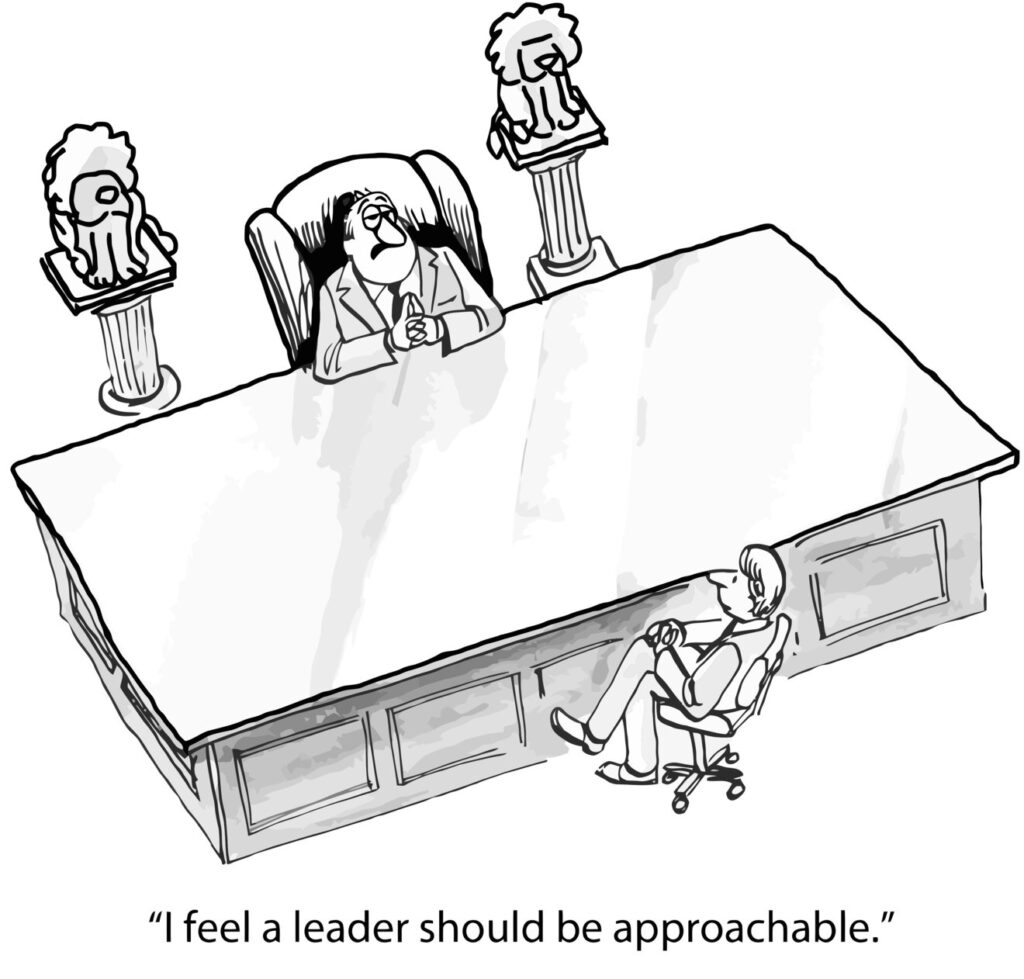

Inspiration help leaders figure out that they should be approachable to ensure their employee and followers’ growth, development, and progress. Also, they are always open to challenges, criticism, and viewpoints different from theirs. Inspirational leaders understand that restrictive workplaces or organizations (i.e., environments where people don’t speak up, offer insight, and ask questions) will stifle progress. Such places often never experience sustainable development and growth, as everyone keeps bottling up their negative notions, where they should be speaking out. Convinced leaders create an atmosphere that relaxes everyone while ensuring the free flow of ideas and thoughts. Their approachability fosters a learning environment culture.
#13. Accountability
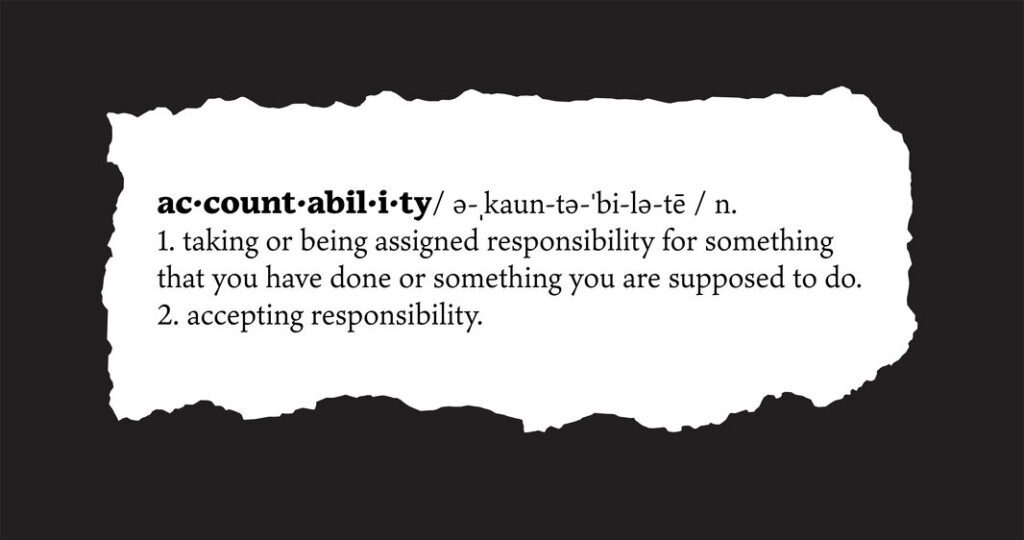

Michael Armstrong explains the connection between inspiration and accountability with a brilliant illustration. He said in Ancient Rome, there was a common tradition with engineers who constructed arches. Whenever they were done creating one, as they hoist the capstone, the engineer who worked on the arch essentially assumed responsibility for it. He does so by standing under the arch. The action shows he is accountable for the stability of the outcome of his structure. It inspires his workers and everyone else on the stable quality of his work.
Inspirational leaders are accountable for their actions. Such accountability shows their transparency and sincerity and drives up their credibility with their followers. Such leaders tend to always have the back of their followers. They don’t throw blame and shield themselves from accountability when the situation calls for it. Inspirational leaders know that they are not above the law. They take responsibility for their action, which draws respect from their followers. One line is standard with this kind of leadership; they are almost always never afraid to say the buck stops at their desk.
#14. Purpose


Leaders with a sense of purpose don’t lead by pointing and telling people the direction. They show their followers by heading to the place and making the case. These are the words of the late Ken Kesey, the American novelist, essayist, and countercultural figure. Inspired leaders understand the difference between a sense of purpose and vision. At the same time, the former involves understanding why you are heading for where you are going. The latter explains the clear idea of where you are going. It’s common knowledge that people are always happy to be a part of something bigger than themselves. Leaders with a sense of intent help materialize the dream—via purpose, they lead the way while others follow.
#15. Stick-to-it-iveness


Considering all the factors above, inspirational leader knows that they don’t just all work out at once. A Big Bang Theory does not happen and causes the manifestation of all these qualities in a whoosh! They understand that they get perfect gradually, adopting the ‘slow and steady wins the race’ mantra. They are adept believers in the stick-to-it-iveness philosophy. No matter the obstacles they face in the way, they persevere. They lean on the staying power of will as they cultivate and grow all the reasons we have mentioned here and beyond. Inspirational leaders have grit, are diligent, have stamina, with a firmness of purpose to achieve. Their cups are always overflowing with Sitzfleisch, and their followers benefit from this flow.


If you must become an inspirational leader, too, then it’s okay if you act on these qualities one after the other. Start by embracing and working on all the traits we have mentioned above. The attributes are—positivity, gratitude, vision, the art of listening, practical communication skills, becoming trustworthy, passion, courage, generosity, humility, authenticity, approachability, accountability, purpose, and a stick-to-it-iveness or persistent mentality. The more instinctive you get, the better you internalize the features.
“If you believe in yourself and have dedication and pride – and never quit, you’ll be a winner. The price of victory is high, but so are the rewards.” — Bear Bryant.
I’m sure you have learned a lot about what it looks like to be an inspirational leader. Are there some reasons you feel should have been on this list? Do you have testimonials or stories of inspirational leadership in action? Please, be sure to comment and let us know. While I’m sure you would improve yourself, note that if you work on stuff you like and are passionate about, you don’t need a master plan. Everything would find its way of falling place. Wishing you every success as you embark on your journey on becoming an inspirational leader!
Parenting
10 Signs that Child Discipline Has Gone Virulent
Discipline is a gift that we give to our children that turns nobodies into somebodies. However, disciplining our children can quickly get out of hand and become abusive. In this piece, we explore various ways that disciplining our kids can go overboard. Please read all about it.


Nature thrives on balance and moderation; when you disrupt that balance, all hell breaks loose. Too much of anything can interfere with its natural course, as well as too little of it. Therefore, the excessive disciplining of a child can cause harmful disruptions in their life. In far more cases, parents guilty of this don’t realize the consequences of their overzealousness in imposing discipline on their wards. In fewer cases, the parents don’t know that they’re over-disciplining their child; hence, the need for balance and moderation.
“Home is, I suppose, just a child’s idea. A house at night, and a lamp in the house. A place to feel safe.” — V. S. Naipaul.
Ultimately, we must educate ourselves about the difference between right and wrong discipline. The Trinidadian-American actor, dancer, musician, and artist Geoffrey Holder once said that “Education begins at home. You can’t blame the school for not putting into your child what you don’t put into him.” There are ways to know that you are going overboard. We must learn when to stop and retrace our steps before we do irreparable damage that we would end up regretting. Parents must be honest with themselves and determine whether they have gone overboard. This way you’d be able to make improvements.


Consider this piece as a freebie in helping you add value to your mind when disciplining your ward and child upbringing. Some people raise their kids the best way they know how to or mirror how their parents raised them. The strategies they deploy may be wrong, but they stick with what they know. So, consider this piece as an avenue for you to stretch the horizons of your knowledge as a parent. You should be ready to make changes where necessary. Should the need arise, you may need to meet with a child psychologist or therapist to wade into an already dire situation. Whatever it takes that is positive to make the necessary corrections must become the answer.
You may have to humble yourself to the point of accepting honest feedback from your children without being arrogant or bossy about it. Some parents find it challenging to be humble when corrected rightly by their wards. Children are very good at observing—they soak up information like a sponge or preferably Sodium Polyacrylate, the water-absorbent material in paper diapers. They learn more by watching what the adults and peers around them do. When a parent disregards their opinion, feedback, or contribution, they take a cue from this and subconsciously learn that their views are unnecessary.


While this may not always be the case, sometimes, children are forced to view things via this perspective because they live in an atmosphere where silence thrives. Parents should learn to communicate clearly with their children. Instructions should be given out of love and not out of anger. Parents must maintain a high level of emotional intelligence at all times when dealing with their wards. Doing so will bar parents from venting their annoyance on their innocent children who may know nothing about what they are doing.
10 Signs that Disciplining Your Children Has Gone Overboard


Some people hang on Proverbs 13:24, which says in the New Living Translation that “Those who spare the rod of discipline hate their children. Those who love their children care enough to discipline them.” There is often a misinterpretation of this verse to mean that physical punishment is the only way to discipline a child—that is not true. A Crosswalk.com study by Kyle Blevins, does a great job expounding this verse.
“Those who spare the rod of discipline hate their children. Those who love their children care enough to discipline them.” — Proverbs 13:24.
The rod does not solely mean instilling discipline via spanking alone; far from that, to be honest. The rod leans more on instruction, teaching kids via guidance and appropriate discipline as the occasion demands. It is more of a process of positively influencing behavior in children, not about punishing them, as many parents erroneously believe. The proper act of discipline should be constructive and never destructive. Solely physically punishing your child will eventually destroy them psychologically. Good discipline should cultivate self-discipline that makes them better. It makes them grow into well-rounded adults who are emotionally and socially stable.


Child discipline that has gone overboard is a sign of negative parenting. You see this evidence when parents constantly fight or quarrel, entertain no negotiations, dishing harsh punishments, speaking down on their wards, being unsupportive, continually yelling, indulging in an unhealthy lifestyle, etc. An unknown author once said that “If a child lives with criticism, he learns to condemn. If a child lives with hostility, he learns to fight. If a child lives with fear, he learns to be apprehensive. If a child lives with pity, he learns to feel sorry for himself. If a child lives with jealousy, he learns to feel guilty…” All that is stipulated here are all products of negative disciplining of children.
However, on the split end of this spectrum, this same unknown author stipulates that “If a child lives with encouragement, he learns to be self-confident. If a child lives with tolerance, he learns to be patient. If a child lives with praise, he learns to be appreciative. If a child lives with acceptance, he learns to love. If a child lives with approval, he learns to like himself. If a child lives with recognition, he learns to have a goal. If a child lives with fairness, he learns what justice is. If a child lives with honesty, he learns what truth is. If a child lives with sincerity, he learns to have faith in himself and those around him. If a child lives with love, he learns that the world is a wonderful place to live in.” Disciplining your ward should be a guide to achieve these grand ideals.
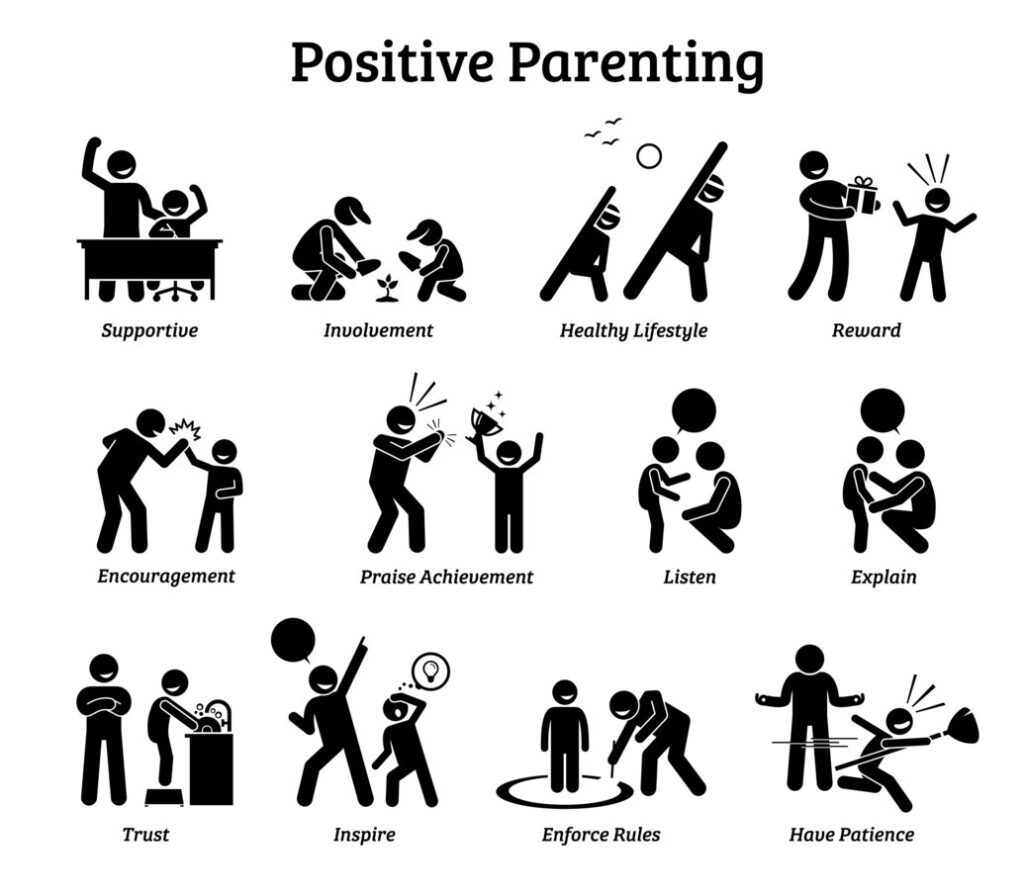

The ability to catch yourself when you are straying from positive parenting is very crucial. That is the core of this piece on discipline, especially when it has gone south and overboard. In the words of Gabriela Mistral (pseudonym for Lucila Godoy Alcayaga), the late Chilean poet-diplomat, educator, and humanist, “Many things we need can wait. The child cannot. Now is the time his bones are formed, his mind developed. To him, we cannot say tomorrow; his name is today.” Today, if you have gone overboard in meting out discipline, there is still a scent of hope. So, let’s look at some of the signs that show that punishment in child upbringing has gone overboard.
#1. You Don’t Give Your Children Room for Expression


Kids are expressive. You want to give them the chance to be themselves as you raise them. Although it is common knowledge that children are inexperienced in so many life matters, it is still relevant to give them the chance to express themselves. When you are too strict on your children, it could lead to them becoming bottled up, and they wouldn’t want to speak up again. Several research and studies have shown that strict parenting produces children who become adults with behavioral problems. Indeed, this isn’t what you’d want for your children, or is it? Think long and hard on this and make a change before it is too late. Give them some room to express themselves.
#2. When You Over Threaten Your Child


How many times have you or someone you know threatened a child that you’d do something nasty to them if they failed to comply? Without knowing it, you are teaching your child to misbehave. Constantly threatening your ward can harden them. The child gets used to the threat and ends up saying to himself, “After all, what is the worst thing that could happen if you follow through with your threat? Hit me? Oh well, I am already used to that,” alluding to the fact of the parent’s habitual threats and actions. For such a child, they’re no longer bothered about the dangers and parental hostility because it has become a pattern for them. A better way of speaking to kids is via a calm and gentle tone and language choice. The core is gentle guidance that speaks to the heart of their subconscious. That will make the most impact, ceteris paribus. A word is enough for the wise.
#3. Intruding into Your Child’s Personal Life


Children grow to become teenagers and then youths and consequently are young adults before they morph into other phases of human existence. Their growth comes with a new sense of responsibility and maturity. For instance, telling a child that they must study medicine, or a particular course of study is the wrong way of doing things. Children want someone who listens and understands them. They should have some sense of independence and freedom of choice. The worst thing you can do to your ward is to rob them of their sense of choice and autonomy. If they don’t get this from their parents, they won’t feel accepted. Curb your excesses, give them some breathing room to be themselves.
#4. Excess Do’s and Don’ts


When you make too many rules, it can lead to information overload. The art of imposing too many restrictions—excess dos and don’ts—comes from an authoritarian perspective—an anaconda leadership style. It is very constricting and stifles the psychological life out of its victims. While this is something that can affect adults significantly, think about the repercussions of this on kids. One of the problems that can come from setting so many do’s, and don’ts is that you find it difficult to follow through on kids to know whether they’re keeping to those rules. When you notice this sort of pattern in your approach to parenting or notice it in other parents, it’s mostly a sure sign that discipline has gone overboard. Taper down on being too restrictive. Give your kids some breathing room just to be themselves.
#5. Not Being Available


Not being available for your children has a way of affecting their inner core. It may lead to a sense of displacement in some children. It may make the child feel unloved. When parents become autocratic in issuing orders to their children, they will find it challenging to comply with particular instructions, as we stipulated in the previous paragraph and point above. Are you the parent who always shouts at your children? And yet you don’t make out time to be there for them! Such children will never confide in you. They will drift away from you and find other people they will confide in, which is never a good sign of positive parenting.
“At the end of the day, the most overwhelming key to a child’s success is the positive involvement of parents.” —Jane D. Hull.
Not being available could mean that you are never there at pivotal moments in their lives. You hide behind the cloak of always working. Because of this, you never attend their school functions that require their parents to be there. You are never there to assist them with their homework. Even when you are home, you never have their time because you are now a victim of Mobileholism—your life permanently revolves around your mobile phone and other handheld devices. You are never present; you are not there in their lives as their childhood quickly passes by. These become lost moments as you end up losing your kids to the confidence of other adults or peers. On many occasions, the influence they get is not always positive. Please pay attention to your wards, do not neglect them. Be present!
#6. Always Monitoring Your Child


Do you often monitor your child’s every move? You always want to know all your child’s friends, where they go, what they do and shouldn’t do, etc. You are overbearing and constantly in their business. You scarcely give them room to learn some sense of independence or discover their individuality. We call such micromanaging parent the helicopter parent. While these things show that you are concerned as a good parent, they can also scare away your child. Children, because they are humans just as adults, also deserve some form of space. However, the kind of space they need isn’t as big as that of an adult.
“Now that I have kids, I’m probably more overprotective than I’ve ever been. My wife’s nickname for me is ‘red alert.’ I sometimes check just to see if the kids are breathing. But I try not to be a helicopter parent.” — Matt Damon.
For instance, while it is good to know your child’s kind of friends. However, it is wrong to prevent your child from having any friends in your neighborhood. Caging them in could be because of the assumption or actual knowledge that most kids in that community are a terrible influence. Or, you may feel that other kids may not come from a privileged class like yourself or whatever excuses you decide to give. As much as there may be wisdom in censoring community relationships, human beings are social creatures—we want to forge relationships with others. No child or human being, for that matter, loves isolation. Children do better in their Education when they have the chance to socialize and play with their friends. Don’t incarcerate your kids to the social cages of lonesomeness.
#7. Is Your Child Withdrawing from You?


We always teach our kids not to talk to strangers, which generally makes them withdraw from people they don’t know. However, it is another thing for children to remove themselves from the parents of their parents. In the latter, it could be that the parents are too strict on the child or children. They don’t allow the child to have friends, speak up, express themselves, and open up on things he’s going through, and so on.
Some parents often spiritualize things in their homes. They teach their children to commit all their problems to God in prayer without striking a balance. That is all well and dandy. However, parents are part of the agents of an answer to a child’s problem. Children should be free to discuss whatever they truly feel with their parents. The validation of their ward’s feelings is part of the answer to those issues. Parents must take proactive steps to address those issues as it builds a deeper child-parent bond of confidence.
#8. Your Kids Don’t Want their Friend’s Home


One of the things that can affect a child’s behavior negatively or positively are actions or inactions that hit at their self-esteem. For instance, when a parent shouts at a child before their friends, they feel awful. Such a child wouldn’t want his friends to come home, or on the other hand, his friends wouldn’t want to go to their house the next time. The reason for this is that that parent’s action has sent a wrong signal to his friends. The parents of your ward’s friends may not want their kids coming over to your house if they learn of your hostile characteristics. Such a scenario will impact the psyche of your child negatively. If this word gets out, it could make your kids become bully victims as other kids will make fun of them for how bad their parents are. As much as you are trying to raise your kids, it would be best if you continued to work on yourself to expunge contrary characteristics that will influence your kids negatively.
#9. Becoming a Control Freak


When a parent affirms a child, it brings out the best in such a child. It boosts their ego and sense of importance. Conversely, using curse words or swear words on a child if they fail to meet a certain expectation or standard is not only cruel but inhuman. Doing this affects the self-esteem of your child. Parents need to watch what they say and need to be cautious of how they use words with their kids, too. Don’t be a control freak with your kids. As much as goals and expectations are set for them to attain, give them a break—let them breathe! Give them some space!
#10. All Work and No Play


“All work and no play make Jack a dull boy,” the famous saying holds for every child. It would be best if you gave children time to unwind. The practice in most parts of the world today in schools is the gradual emphasis on innovative learning. Most of the time, this occurs at the expense of the child’s psychomotor skills. Schools, not just in developing nations but also in developed ones, tend to emphasize computer skills, laboratory experiments, and several other activities geared towards improving the child’s mind without taking cognizance of the child’s need for play.
When a parent emphasizes reading and studying and deprives a child of time to play to instill good discipline, it is clear from such a scenario that discipline has gone overboard. In the words of Mark Wahlberg, the movie actor, “There’s nothing like seeing the smile on my kids’ faces. Laughing together. Playing. It’s the best.” You should seek to strike a balance in this area of your kid’s lives. As much as we want them to work and achieve goals, they must also relax and play.
Where do We Go from Here?


Discipline can go overboard in so many ways, as stipulated in this piece. Yelling at children most of the time before you get your message across to them is part of this. It is a dysfunctional way of instilling discipline. It shows that things have gone wrong and that the parent lacks the capacity for good parenting. Such a parent must develop how to approach parenting (NB. The piece you are reading is an excellent inception point for such erudition).
“Discipline is the refining fire by which talent becomes ability.” — Roy L. Smith.
Hence, a parent must establish the qualities of genuine and sincere affection, sympathy, and empathy for their kid and should be able to know when to bring discipline into the equation as a measure to guide their ward. Learning these qualities is not automatic. It requires parents to become intentional learners. All pride must bow before the due diligence of patient scholarship. Don’t be that parent that claims to know everything even in the face of apparent ignorance of being in the wrong. Be teachable. Remember, the inculcation of the said positive qualities above must be timeous.


Part of the things to be learned will be how to listen effectively to your children, communicate with them, discipline, and overlook certain behaviors. Pointing out all the flaws of a child is a wrong approach to parenting. No one wants to be a victim of a demeaning barrage, not even children. They’re humans, and even if they are young and lack experience, they have emotions and feelings that require validation. Hence, parents must go the extra mile in learning when to take a chill pill when disciplining their kids. You don’t want to become an abuser. It would be best if you learned patience when raising your children. Kids will be kids.
“If you bungle raising your children, I don’t think whatever else you do matters very much.” — Jackie Kennedy.
If their parents remind them constantly of the things, they do wrong, then that’s a problem. The parent needs to seek a solution instead of passing the blame to their wards continually. It isn’t the child’s fault that a parent cannot control their anger or tantrums. Over time, children will see a parent who yells at them much of the time as a weak and insensitive parent. They may not voice this opinion to their parents but do this inward, a seed of bitterness sown. In the long run, they probably may lose trust in that parent and possibly, respect.


We cannot completely rule out discipline; doing so is prepping the societies that we live in for moral decay and dissolution. However, we cannot approach discipline with ignorance. The Holy Writ establishes that “The Lord corrects those he loves.”1 In the same light, we must teach, guide, and correct our wards from a place of love. We must “discipline our children while they are young to learn. If you don’t, you are helping them destroy themselves.”2 You would be doing yourself a tremendous disservice if you shun discipline completely.
“Discipline is the hidden ingredient that turns nobodies into somebodies.” — Unknown Author.
We must approach discipline in positive parenting with wisdom and caution. H. Ross Perot once said that “If you have but one gift to give your children, let it be discipline.” It may be a gift and tool that helps us in giving guidance to our kids. However, we must watch ourselves so that we don’t go overboard as it negatively affects child development. Parents must be mindful of this aspect of raising their kids. We must do everything in moderation, even discipline.
Reference
[1]. Proverbs 3:12. [2]. Proverbs 19:18.
Leadership
15 Reasons Why Optimism is a Core Leadership Trait
Optimism is a positive mental state that propels us to become. It is simply expecting the best possible outcome from any situation. You cannot be a leader and not hone the trait of optimism. In this encephalic long-form piece, we explore fifteen reasons why optimism is a core leadership trait. Please, buckle up for the journey and do read all about it.


Optimism is a mental attitude reflecting a solid belief or hope that the outcome of a particular endeavor will be positive and desirable. It is simply expecting the best possible outcome from any situation. An optimistic person attributes internal, stable, and global explanations to good things. A misanthropic person is not someone anyone wants to be around—someone who has darkness always hanging over them. If such a person is a leader, no one would want to follow them. Optimists make history. Optimists make the resounding difference. In the same light, followers will follow leaders who make history and a difference that shakes the very foundations of mediocrity.
“A pessimist sees the difficulty in every opportunity; an optimist sees the opportunity in every opportunity.” — Winston Churchill.
On the other hand, leadership is the simple method of motivating people mentally and physically to achieve a common goal. Influential leaders must possess certain qualities or traits and skills that can provide direction for their followers. These qualities or attributes include honesty and integrity, good communication, creativity and innovation, passion and commitment, optimism, and confidence. Various leadership styles exist, such as autocratic leadership, laissez-faire leadership, democratic leaders, situational leadership, transformational leadership, etc.


No matter what type of leadership style a leader deploys, if they lack an optimistic outlook, it defeats the whole purpose of what they are looking to achieve with their followers. How many soldiers would follow a cynical general into battle? If such a general does not inspire confidence in his troops, he is straight out of luck as he will fall in action as the enemy will claim a victory. How many of you in organizations want to follow an opposing leader? That negativity spreads like metastasizing cancer that wreaks havoc on the body politic of the organization. After all, said and done, optimism (i.e., a disposition or tendency to look on the more favorable side of events or conditions and to expect the most favorable outcome) always aims to paint a new and bright day!
A. Why Should a Leader Be Optimistic?


Leadership is quite an arduous task and, as such, is not for the faint-hearted. It is a lot of work to be a leader. As a leader, you manage a sleuth of things—emotions, beliefs, varying commitment levels, and buy-ins, performance, conflict, customer satisfaction, to mention but a few. If a leader does not have the true grit or capacity to perform, there is a problem. The dilemma becomes more complicated when a leader does not see the bright side of things. It is harder to lead from a bleak belief when trying to manage a broad spectrum of objectives.
“Pessimism is an investment in nothing; optimism is an investment in hope.” — Author Unknown.
There will be times where circumstances don’t go well as planned, and the leader faces the dilemma of motivating his followers to action or proffering solutions to the identified problem. In the face of troubling circumstances, leaders must stand twice as tall. In situations that make people panic, should the leader buckle under the weight and burden of the problem? Doing so will scatter those already looking up to him as a vector to give them some direction. This very purpose makes optimism a core leadership trait that everyone at the helms of the affair must cultivate.


Optimism is the super telescope that sees through the dark clouds of pessimism (i.e., the tendency to see, anticipate, or emphasize only bad or undesirable outcomes, results, conditions, problems, etc.). An optimistic leader sees the opportunity in every difficulty. That ability to see is the reason why a leader must become an optimist. The optimist must be able to keep their eyes on the prize. By so doing, they can guide others who don’t see the big picture.
“Pessimism is an investment in nothing; optimism is an investment in hope.” — Author Unknown.
Optimists are usually more successful than their pessimists’ counterparts because they see opportunities in every problem and instill courage in their followers rather than give up. Rather than seeing obstacles, they see opportunities. Instead of seeing the pains in a catastrophic situation, they see a pain point needing a solution. Optimists attempt to turn every problem to their advantage to create chances that everyone can benefit from at the end of the day.


Leaders must be optimistic in other to make full proof of the benefits of optimism. Leaders must embrace optimism as a trait that helps them carry the weight of responsibilities that come with the territory of being at the helm of affairs. Optimism is the oasis in the desert of negativity, non-progress, and pessimism. Hence, optimistic leaders are the metaphorical aquifers of institutions and organizations that keep all things green and productive. Accordingly, we can pellucidly say that optimism is a core leadership trait that all leaders need to their quiver full of features.
B. 15 Reasons Why Optimism is a Core Leadership Trait


The vital essence of leadership is to move forward. A leader should courageously lead his followers across obstacles and circumstances to a place of victorious progress. The fact we stipulate here ties into what Nicholas M. Butler, the American philosopher, diplomat, and educator, said that “Optimism is essential for achievement, and it is also the foundation of courage and true progress.” A successful leader must then stand on the core pedestal trait of optimism to forge forward with their followers.
“I believe any success in life is made by going into an area with a blind, furious optimism.” — Sylvester Stallone.
Optimism is a core leadership trait that leaders must imbibe because you cannot achieve anything of significance sans hope and confidence. The spirit of hope and faith is at the very nucleus of optimism. Building monuments for optimism is a norm. You don’t see institutions or organizations erecting monuments to the pessimist. Optimism is like the sun. It is a radiant source of light and power that dispels that dark shrouds of negativity. The leader that is an optimist is the harbinger of a can-do spirit and mentality. So, why is optimism a core leadership trait? Let us look at several reasons why it is so. Let’s go:
#1. Optimists are Innovative


Innovation is one of the greatest keys to the growth of any company. It is what distinguishes between a leader and a follower. Optimists don’t get too comfortable with the status quo. Their can-do disposition is what sets them apart. When others hesitate, they advance on the new ideas that create new opportunities and profits. They constantly come up with new concepts, new business plans, and strategies, bringing about innovation. Because of this, they are always open to thinking outside the box.
“Optimism is essential to achievement, and it is also the foundation of courage and true progress.” — Nicholas M. Butler.
Leaders who embrace optimism as a core leadership trait are always open to a new mindset, leading to new results. Because mindset is everything, a confident and positive one propels creativity, which is intelligence having fun. A new mindset is at the core of innovation. A new mindset thinks outside the box, which ushers one to discoveries. Old ways won’t open new doors, and optimism paves the part to creativity for those leaders that possess it.
#2. Optimists are Future Orientated Thinkers


According to psychologists, optimists are less susceptible to the psychological phenomenon known as the “Recency Effect.” The terminology means that the most recent experiences we go through are the ones that we are most likely to remember. We assume that these experiences will continue in the future. Carmine Gallo, a Senior Contributor at Forbes, establishes in “5 Reasons Why Optimists Make Better Leaders” that “Optimists see the big picture.” They are often immune to the recency effect, and they do so by seeing a more panoramic view of a situation rather than being narrow-minded in their perception. Pessimistic leaders can’t see a clear path ahead. They only see doom and gloom. Hence, optimism as a core leadership trait will battle the recency effect.
“The pessimist sees difficulty in every opportunity. The optimist sees the opportunity in every difficulty.” — Winston Churchill.
For example, if a person keeps applying for a job and keeps getting turned down, there is a tendency that such as person will discontinue seeking jobs or going for interviews. They might be on the lookout for other means of employment (e.g., self-employment) rather than wallow in self-pity. An optimist is a big picture thinker and has a positive view of the future. They would not be looking at what is happening right now or what happened in the past. Leaders that are optimists look at the possibility of the great things that could happen in the future. They glue their eyes to what is ahead of them. The lookback momentarily via the rearview window to the past. They learn from the past, educate themselves in the present, and aspire to a greater tomorrow in the future.
#3. Optimists Go for Gold


Another reason why optimism is a core leadership trait is that optimists go for gold. They get to work on their strengths or talents instead of concentrating on their weaknesses. Optimists focus on what they do. They also focus on what they can learn to do well—call it their opportunity if you like. They focus on what they excel at, which gives them a competitive advantage over others. Optimists don’t concentrate on anything they aren’t. Instead, they highlight the areas of their strength. Leverage their opportunities. Improve on their weak spots, and watch out to eschew anything that is a threat.
“I am a stubborn optimist: I was born an optimist and will remain an optimist.” — Kofi Annan.
Optimists go for gold—they seek the best to win the prize. Based on the facts in the preceding paragraph, a great book that all my readers need to get and add to their book collection is Unearthing Your Latent Potentials: Discovering the Gems of your Subliminal-Self. Call it an optimists manual. I wrote this book to help all my readers to discover their strengths, leverage their opportunities, work on their weaknesses, and eliminate all threats. The Prairies Book Review wrote a great piece on it, recommending it to everyone in their statement, “Urgent and actionable, this passionate manifesto about the unlimited possibilities dormant inside all of us will be a welcome addition to any reader’s bookshelf.” Do yourself a favor, grab a copy and go for gold as an optimist.
#4. Optimists Avoid Negativity


Optimism is a core leadership trait because it allows you to sieve out negativity—that is, negative-minded fellows or pessimists out of your life. Optimists try all they can to avoid negatively adverse environments, people, and circumstances. Once an optimist knows a person to be a faultfinder or a chronic skeptic, who put in effort doing their very best to corrupt your mindset and thinking, optimists do their best to keep their distance. Doing this helps to keep only the most hardworking and positive-minded individual as part of the team and the negative Nancy at bay.
“People deal too much with the negative, with what is wrong. Why not try and see positive things, to just touch those things and make them bloom?” — Thich Nhat Hanh.
Optimists are responsible for keeping themselves, and their followers shielded from harmful or toxic pessimism. In the words of Michael Jordan, we should “Always turn a negative situation into a positive one.” Optimism as a core leadership trait cancels out the negative while bolstering the positive. A negative mindset is like deadly metastasizing cancer that you must eliminate, all things being equal. Inculcating optimism as a leadership trait helps leaders build a shield that protects them from negative influences, and they flourish in turn.
#5. Optimists Have a Winner’s Philosophy


Optimistic people always focus on the positive aspects of a situation. Their view of life is different from that of a pessimist—they have a winner’s philosophy. An Unknown Author once said that “As you travel through life, whatever be your goal, keep your eye upon the doughnut, and not the hole.” What does this mean? Optimists focus on the substance of the matter—the focus is on what adds paramount value. They don’t focus on the void and things of negative value. A success mindset is the terra firma of value.
“Strive not to be a success, but rather to be of value.” — Albert Einstein.
Hence, optimism as a leadership trait allows optimists to focus on what matters. Leaders as optimists have hope and believe in a better future. They focus on opportunities instead of obstacles. They understand what motivates and inspires them to live a successful and fulfilled life. Success to them happens first in the mind before it translates to physical reality. Negativity and fear do not belong in their world, and they see them as inhibitors to their success in life. They transform the obstacles of negativity become stepping stones to greater heights.
#6. Optimists are Problem Solvers


Optimists try to identify what they can change and take action, controlling what they can handle in the face of challenges, failures, and adversity. Pessimists cower at problems, while leaders that lean towards optimism take the horns of the raging bulls of difficulties that they face. Rather than seek an excuse to deflect a problem, optimistic leaders move towards the situation, looking for solutions in the process. Hence, they have a strong bias for action.
“Pessimists are toxic. I love optimists—and by that, I don’t mean people who are unable to see challenges. Optimists are solution-oriented.” Ivanka Trump.
Optimistic leaders also try to look for ways to control situations that are almost beyond their control. Why? Because they believe that no problem is uncontrollable. They are constant solution seekers. Optimism is a core leadership trait because it allows leaders to troubleshoot circumstances that they encounter. They are solution harbingers that You can accomplish great things if you decide to control the things you do have power over.


An optimist seeks to improve situations. They never want to leave a position as they found it, especially if it is contrary to the norms of efficiency and logical productivity. Instead of only analyzing the issues surrounding a problem, they always find solutions. Optimist leaders use a solution-based approach to inspire creativity and innovation.
#7. Optimists Lead from Within


Achievement requires optimism and actual progress, and you build exceptional leadership on the foundation of optimism. Optimistic leaders must “lead from within.” The phrase “leading from within” means leading with a cool, calm, and collected disposition. Optimism as a leadership trait allows leaders to lead from a position of tranquility—when everything is in a state of Brownian Motion or chaos; they remain level-headed while exercising a strong bias for action because they believe in the possibility of a positive resolution.
“I don’t go by the rule book… I lead from the heart, not the head.” — Princess Diana.
Leading from within as a factor of optimism as a leadership trait allows the leader to act rationally and not from a reactive standpoint. When tempers are flaring, and others are anxious, such a leader with this attribute is the calm that placates these emotions. Such a leader is the voice of reason that inputs logic and understanding in the chaotic situation to tranquility. Leading from within allows optimistic leaders to make decisions from facts, not from erratic feelings. Facts have no feelings.


Optimistic leaders who lead from within nudge them to make decisions standing on a neutral, unbiased pedestal. Confident and positively inclined leaders don’t take sides. They listen to all the relevant parties to gain knowledge and understanding about the matter from a neutral position and decide based on facts about the issue. They make their subjective suggestions after comparing parties’ positions to the absolute objective truth about the matter.
When optimistic leaders champion causes from within, they do so from understanding and not from a position of ignorance. They understand the status quo of controlling narratives. Doing so allows them to forge forward with their new and current narratives to move the pack forward. Optimistic leaders who lead from within have a great depth of self-knowledge—they know who they are, what they believe in, their knowledge, or general-purpose.
#8. Optimists Are Apt Communicators
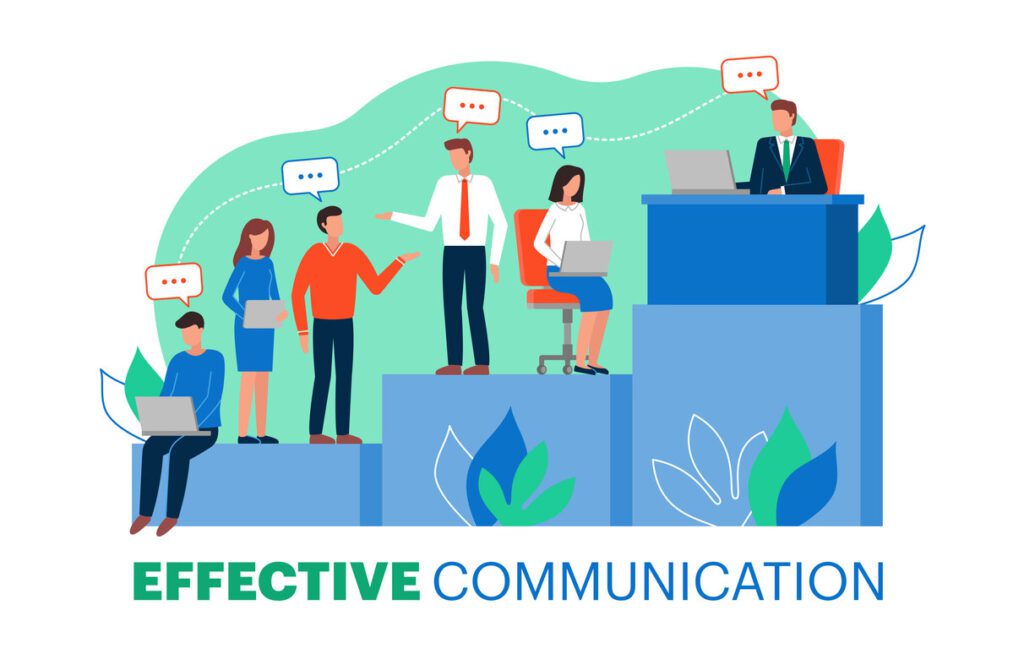

Optimism as a core leadership trait is heavily dependent on the art of effective communication. You can have the best ideas globally; however, having those ideas is futile if you can’t communicate well. Optimistic leaders are intentional and positive in their communication. The keyword and adjective here that qualifies communication is positive, emphasizing what is laudable, hopeful, and of good intention. Pessimistic leaders can be deliberate; however, they often lean towards negative communication that dampens motivation and throws the wrench of skepticism into the wheel of their dialogue.
“As a leader, you must consistently drive effective communication. Meetings must be deliberate and intentional—your organizational rhythm should value purpose over habit and effectiveness over efficiency.” — Chris Fussell.
Optimistic leaders build camaraderie and community via effective communication. In the words of Brian Tracy, the Canadian-American motivational public speaker and self-development author, “Communication is a skill that you can learn. It’s like riding a bicycle or typing. If you’re willing to work at it, you can rapidly improve the quality of every part of your life.” Hence, optimistic leaders must embrace the art of effective communication in other to communicate their positive thoughts intentionally with meaning. The PsychCentral title, “Five Easy Steps to Better Communication,” is a great place to begin learning the art of effective communication.


Optimistic leaders can transfer their energy and motivation to people via effective communication. It also helps them create and keep long-term relationships. They use this tool to unearth the wrong notions that spawn from pessimism. Optimists are comfortable communicating and sharing their desires for a better future or better solutions. They choose to speak ab imo pectore while using data and facts to fortify the foundations of their said meaning.
#9. Optimists are Business Starters


An optimist sees opportunity where others see a closed door, pain point, or difficulty. Others see these variations as obstacles or impossible insurmountable boulders. In contrast, optimistic leaders see these as possibilities for something big. You can’t tell me that the likes of Jeff Bezos, Bernard Arnault, Elon Musk, Bill Gates, Mark Zuckerberg, Richard Branson, etc., are not optimists? These fellows and more not mentioned visualize the possibility of things becoming where others dare even to walk or dream. Their business empires are dominating the world today and creating business economies for the society at large.
“Starting a business is not for everyone. Starting a business—I’d say number one is — have a high pain threshold.” — Elon Musk.
Optimism as a core leadership trait is a hallmark attribute that helps mold the mind of business starters or entrepreneurs. For instance, when the economy is down, and unemployment data is rising, the pessimist uses those factors as excuses to stay still. The optimist refuses to let these macro-economic trends limit their imaginations. For instance, the CBS News report by Aimee Picchi establishes that “Billionaires got 54% richer during the pandemic.” It is their wits and optimism at work.


Nothing will dissuade them from creatively sustaining their businesses in tough times. Optimistic leaders are the maestros at leveraging pain points. Nothing prevents them from starting businesses that ultimately put people to work. Where others see obstacles, they see stepping stones. Where others see the speckled night skies, they see an opportunity for exploring a new frontier. That is the power of optimism as a core leadership trait—leaders who possess this trait move on to become great business influencers and entrepreneurs. Where others are afraid to take a step, optimists take a leap of faith in starting new business ventures.
#10. Optimist Behaviors are Infectious
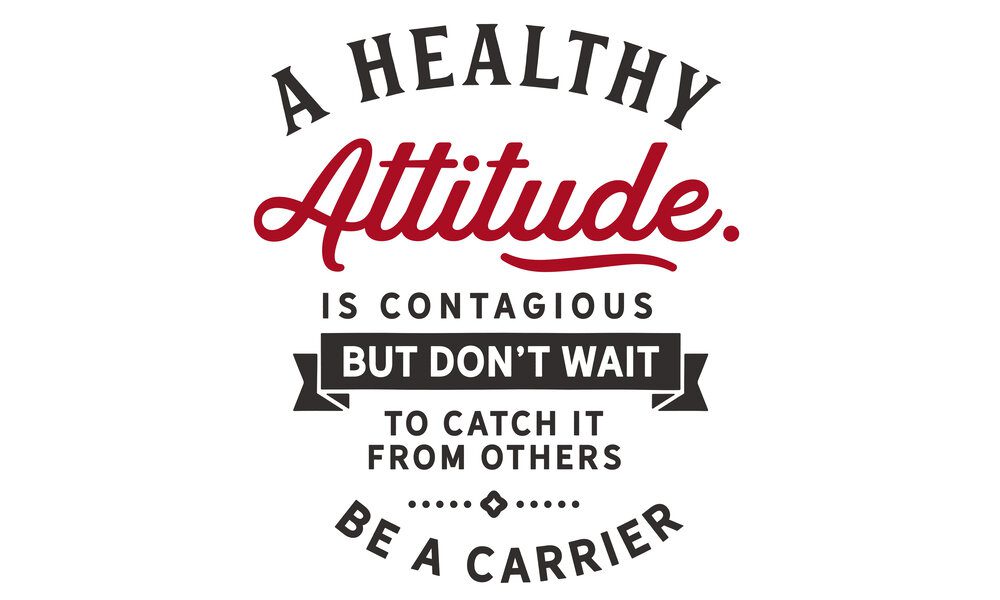

Being rationally optimistic can be contagious. Outstanding positive leaders carry their followers along by displaying positive behaviors that become a significant catalyst of influence. As mentioned above, via good communication, promising leaders can communicate their intentions and mannerisms effectively that their impact and draw becomes organic. People naturally flow towards them. That is the draw that we see with great motivational speakers and personalities.
“A healthy attitude is contagious but don’t wait to catch it from others. Be a carrier.” — Tom Stoppard.
Optimists know that their behaviors and outlook will impact everyone around them, especially their followers. So, they try always to maintain a positive outlook. In the face of unfavorable circumstances, they remain optimistic. This positive outlook will, in turn, have a positive effect on the people around him. Promising leaders invest a lot in developing a healthy attitude, which can be pretty contagious. Sound energy is infectious.
#11. Optimists are Not Risk-Averse


Optimistic leaders are not risk-averse (i.e., the reluctance to take risks or tending to avoid risks as much as possible). An optimist is a risk-taker and is comfortable making tough decisions when it comes to it. We have seen the connection between optimism and entrepreneurship—optimistic leaders take risks to start business ventures and become entrepreneurs. Pessimists are risk-averse. Because of their skeptical viewpoint on issues, they often lean towards avoiding risks as much as possible. Great ventures are a function of risks. How will you know if you can or cannot do something if you don’t even try? From what Mark Zuckerberg said below, we can technically say that ‘failing to take risks is planning to fail.’
“The biggest risk is not taking any risk… In a world that is changing really quickly, the only strategy that is guaranteed to fail is not taking risks.” — Mark Zuckerberg.
Optimistic leaders accept the reality of failure and the possibility of making mistakes. Although promising leaders focus on productivity, excellence, and efficiency, errors are bound to happen. We are not at all perfect; we stumble at times. However, it should be a learning process in the journey of becoming our best selves ever. Optimistic leaders view failure or mistakes as an educational opportunity and a path towards progress. They see failure and setbacks as a part of life, as a part of the necessary process of becoming. So, optimistic leaders encourage their teams to learn from the situation quickly and move forward. The goal is not to make the mistakes a repetitive process. When the mistakes become redundant, then these leaders dig deeper to ascertain the root causation of the problem and the reasons for the failures to learn.


Hence, optimistic leaders don’t come barreling down always at their followers at the first instance of a mistake. That will send a shockwave of fear down the rank and file, making the organization risk-averse. Optimism as a core leadership trait is the root for creating a learning organization (LO) (i.e., an organization that continuously learns through its members individually and collectively to make a sustainable competitive advantage by effectively managing internally and externally generated change).6 Optimistic leadership plays a role in fostering the warm ambiance that bolsters the characteristics of a LO. Such LO characteristics are cultural values, leadership commitment and empowerment, communication, knowledge transfer, employee characteristics, and performance upgrading.6
We make the following reflexive deductions from the study of Yuraporn Sudharatna and Laubie Li that: Optimistic leaders foster a culture that continuously learns. A culture that supports its partners to try new things, whether success or failure, is the outcome. Hence, partners here are not risk-averse, encouraging an ambiance of sharing without retribution, promoting an enhanced sense of psychological safety. Optimistic leadership achieves non-risk-aversion via commitment and empowerment via the funnels of vacillating communication channels that give and receive. All this promotes the osmosis and diffusion of knowledge among employees and leadership alike. Optimistic leadership tracks all this to foster performance and efficiency.
#12. Optimists are Adaptable


Optimism is a core leadership trait because it makes leaders more adaptable (i.e., adjusting oneself readily to different conditions). Optimistic leaders are quick to respond and adapt to the situation at hand. Courageous leadership fosters an atmosphere of innovation and creativity in organizations, where people are not afraid to challenge the status quo and out-of-the-box thinking. The adaptability process creates the wiggle room for mistakes, as stipulated in the points and paragraphs above. It creates a culture of experimentation and risk-taking.
“To create an organization that’s adaptable and innovative, people need the freedom to challenge precedent, to ‘waste’ time, to go outside of channels, to experiment, to take risks, and to follow their passions.” — Gary Hamel.
Adaptability makes optimistic leaders very flexible. In the words of Mandy Ingber, a yoga instructor and a former actress, “No matter what twists and turns your life offers you, your ability to be adaptable and flexible will help you to stay open to all of the hidden gifts that difficulty may offer.” Hence, no matter the twists and turns or curve balls that life throws at the optimistic leader, they never take their eyes off the ball. They adapt themselves and adjust, shifting to counter the effect of the outside force. In Chapter Seven of my book, Unearthing Your Latent Potential: Discovering the Gems of Your Subliminal-Self, I allude to Le Chatelier’s principle of equilibrium. When optimistic leaders shift to adapt to outside forces that disturb their sense of balance, it is akin to what happens in this chemical principle.1
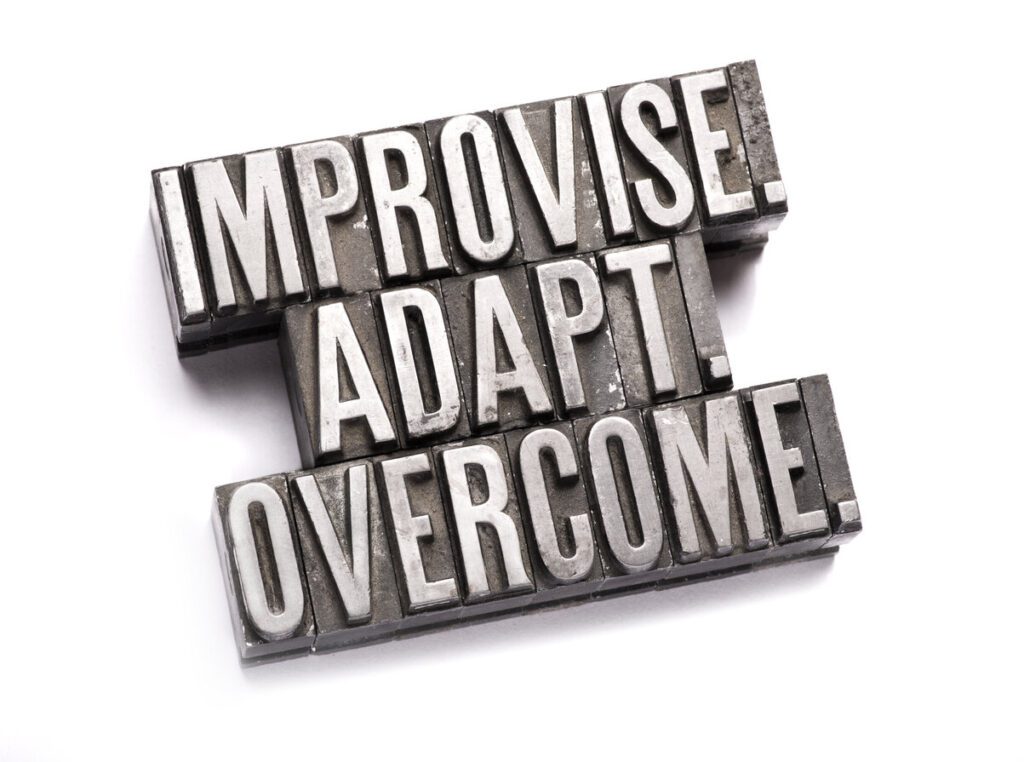

We cannot overstate the power of adaptability as a factor of optimistic leadership. Adaptability ensures versatility, longevity, and resilience. Promising leaders latch on this quality to go the long haul in accomplish greatness. Hence, should something go amiss, they will want to get their teams moving forward and back on track as quickly as possible. If teams make mistakes, these leaders will want to know what went wrong. They want to know what they can do differently to avoid making the same mistakes in the future.
#13. Optimists Embrace Continuous Improvement
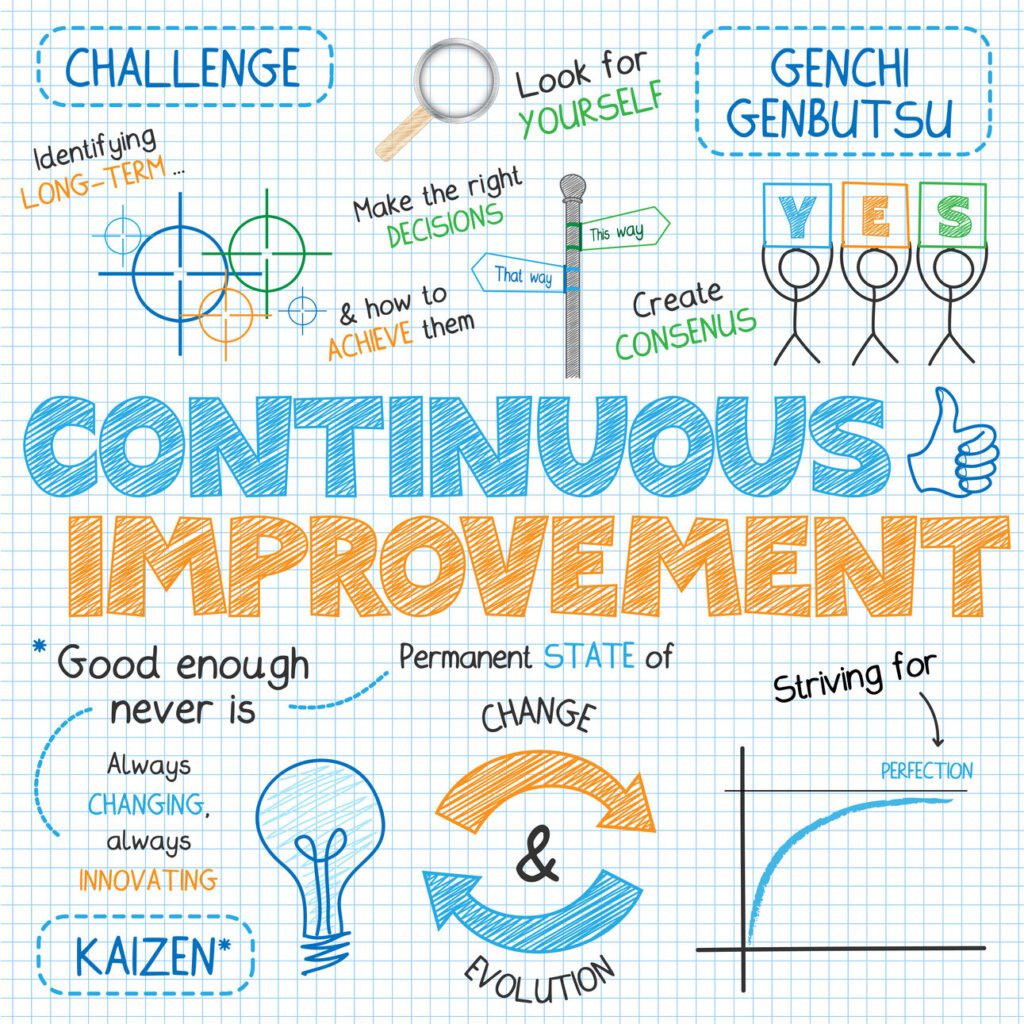

Optimism is a core leadership trait because leaders embrace continuous improvement (i.e., incremental and breakthrough improvements to products, services, or processes). Optimistic leaders never want to stay stagnant. Continuously, they want to be developing themselves and their team. There is absolutely no room for stagnancy. There is an onward ever, forward ever mentality at play. Their ability t look ahead propels them towards giving their very best and motivating their team to achieve the same thing. The goal is to be better than they were yesterday.
“Strive for continuous improvement instead of perfection.” — Kim Collins.
Optimistic leaders leverage continuous effort as the fulcrum that allows them to make a difference. They lean on this as a way to unlock potentials in themselves and their teams. The goal, as the quote by Kim Collins, the former track and field sprinter from Saint Kitts and Nevis, establishes that the goal is not perfection. The goal is, therefore, not ceasing in becoming better daily. For optimistic leaders, you find the secret of their success in their daily routine. Hence, by sticking with it, promising leaders grow their strengths and that of their teams.
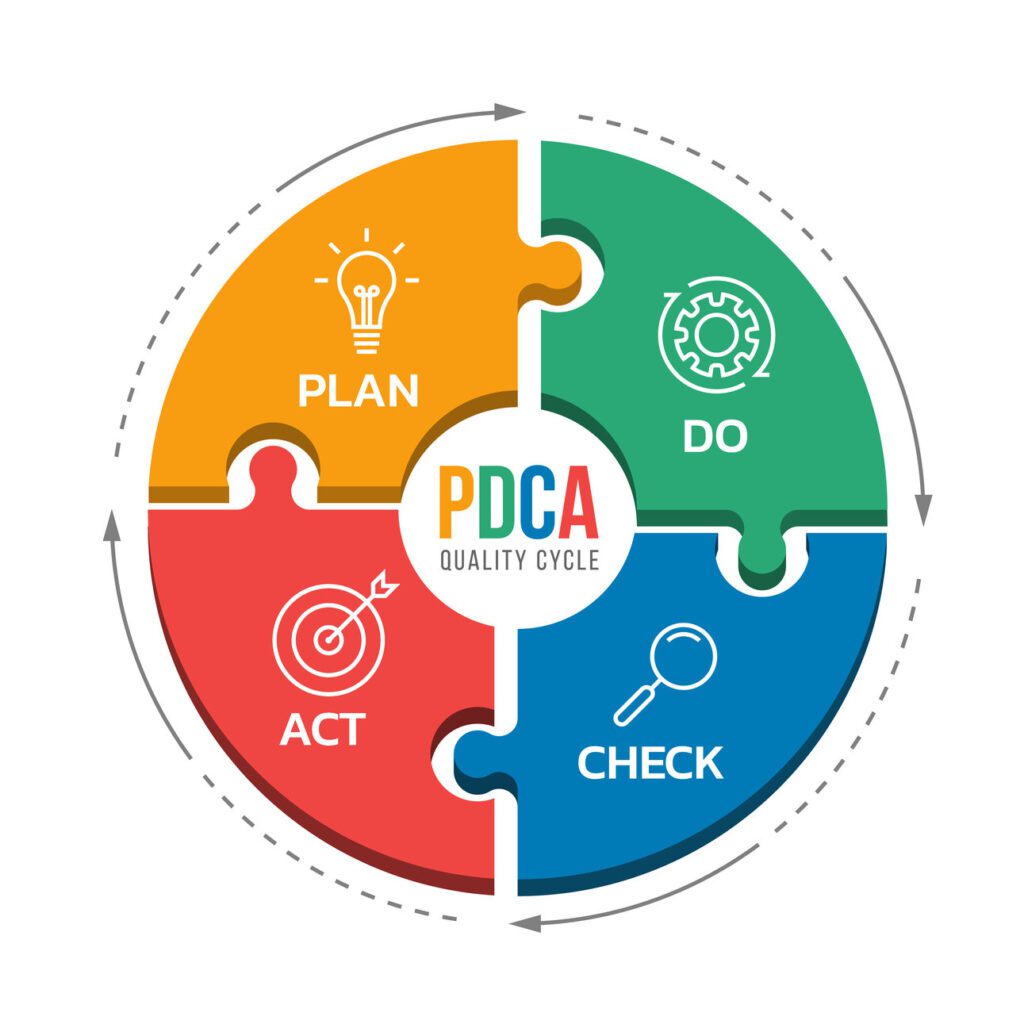

An excellent go-to model for optimistic leaders is the plan-do-check-act (PDCA) cycle. Once again, my book, Unearthing Your Latent Potential: Discovering the Gems of Your Subliminal-Self1, is a personal development PDCA cycle primer that takes you on a journey of discovery. What do you do with your strengths, weaknesses, opportunities, and threats after you discover them? You develop a plan (Plan-phase), act on them (Do-phase), monitor your progress (Check-phase), and keep acting on them if all is well, or go back to the drawing board if something is amiss (Act-phase). Optimistic leaders improve via the PDCA cycle.
#14. Optimists Reason with Uncertainty


Optimism is a core leadership trait because leaders reason with uncertainty (i.e., not definitely ascertainable or fixed, as in time of occurrence, number, dimensions, or quality). Life is full of uncertainties. There are many things that we are not sure of in life. However, we live through these indeterminacies comfortably, albeit with some apprehension. Valid reasoning becomes very problematic when the information at hand is uncertain. Our ability to reason under these conditions as humans are also known as probabilistic reasoning.2
“Exploring the unknown requires tolerating uncertainty.” — Brian Greene.
We can’t avoid uncertainty in our daily life. You don’t know if you will live the next minute. We are often unsure of what to eat, what to drink, and even what to wear. We are uncertain of the stock market. Making decisions usually involves uncertainty for leaders. However, to deal with these uncertainties intelligently, we must resent them well and reason about them.3 The ability to reason often allows us to determine what is happening in the world, how we should react to it, and how the world should behave. Uncertainties complicate reasoning and muddy the waters. We often adopt traditional reasonings (e.g., formal, procedural, or analogical) to make sense of things. However, uncertainties (e.g., noise, uncertain change, ignorance, etc.) can sometimes make formal reasoning difficult.4


Optimistic leaders are willing to go the extra mile through the sundry methods of reasoning with uncertainty. These methods could be symbolic, statistical, or fuzzy logic. Delving into each of these methods would be going beyond the scope of this piece. The summary is that optimistic leaders wish to shun every ounce of skepticism and go the extra mile to deploy unconventional methods to find solutions for themselves and their teams. In the words of Tim Crouch, an experimental theatre-maker—an actor, writer, and director, “Uncertainty is a very good thing: it’s the beginning of an investigation, and the investigation should never end.” The never-ending investigation is the hallmark of continuously improving the status quo, albeit the mechanisms for solution are unconventional via reasoning with uncertainty.
#15. Optimists Believe in the Power of Teamwork


Optimism is a core leadership trait because these leaders believe in the power of teamwork. Optimistic leaders don’t go it alone—they believe in forging ahead with teams. There is power and strength in collaboration. One person can only accomplish but so much; however, when you bring others into the equation, you multiply the chances of achieving more. In the words of Mattie Stepanek, an American poet who died at the age of thirteen, “Unity is strength… when there is teamwork and collaboration, wonderful things can be achieved.” Teamwork fosters strength in the light of vision and purpose. It builds trust, which further builds speed.
“Teamwork makes the dream work, but a vision becomes a nightmare when the leader has a big dream and a bad team.” John C. Maxwell.
Optimistic leaders believe in the power of teamwork and do everything in their ability to build a functional and cohesive team. It does not take one musician to make an orchestra—you need a group of musicians to form a symphonic orchestra. The critical adjective of note here is symphonic. For a team of instrument-playing musicians to produce a melodic tune of note, they must be in sync, knowing their part and timing of when to play their role during the symphony. It does not take a bead of water to form an ocean—you need an infinite number of drops to create seas. It takes teams to build great brands, and optimistic leaders understand and live out this factor.
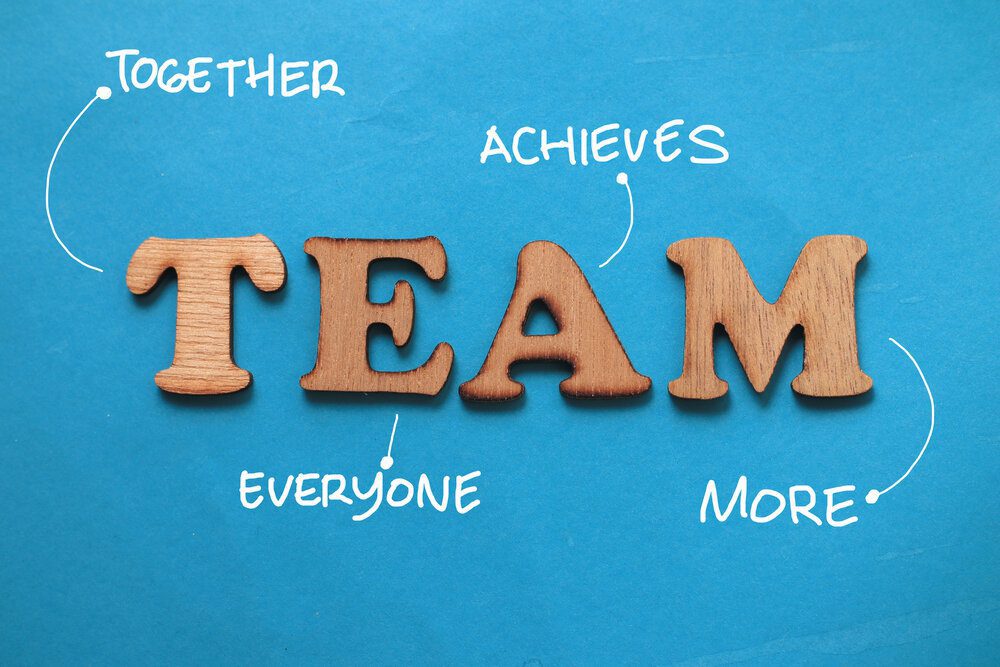

When a house operates in unison, it stands; however, a house divided stands no chance of staying together. An enemy might defeat one person, but two people can stand back-to-back to defend each other. And three people are even more potent. They are like a rope that has three parts wrapped together—it is tough to break. Pessimists, valid to their nature, are already skeptical about anything of note working. Hence, the purity of collaboration for the greater good of a cause is already tainted. Optimistic leaders embrace the benefits of cooperating. They understand that teamwork promotes the sacrifice of selflessness. It supports corporate accountability to the cause of success.
Optimism is a core leadership trait because leaders understand the value of leveraging the team members’ strengths. Every team member contributes something unique that makes the brand or organization a well-lubricated and cohesive unit. For instance, Oaekpost is my dream. However, from the drawing board, as I crafted this platform into reality, I knew that I could not do it all alone. The Oaekpost vision is beyond me, and my sole capacity to deliver cannot make what I envisage for this company a reality. I am now building a team of folks who believe in adding value to minds. Everyone on my team has their specialty. Our success depends on it. If you must gain a competitive advantage in your niche, you must cultivate optimistic leadership with teamwork as your pivot point.
C. Optimism Must Be Rational


In this piece, we have seen “15 Reasons Why Optimism is a Core Leadership Trait.” Despite all these positive reasons that this piece profers, optimism must be rational (i.e., it must be agreeable to reason, reasonable, or sensible). We must strike a balance on how we lead, with our hearts or with our heads. As a leader, you must have a metaphorical sieve of commonsense in your mind that helps you assess when things are going awry. It is a fact that optimism can pose challenges. Hence, we must exercise some sense of caution. On the web platform, Verywellmind, Elizabeth Scott, in her article titled, “What is Optimism?” highlights some potential pitfalls of optimism. Let’s look at them and then some more. Let’s go:
#1. Optimism Bias


As much as optimism is a good thing, there are times that we do not weigh the result of our optimistic choices carefully and rationally. Optimism bias is “the overestimation of the likelihood that one can experience good things while avoiding bad things. There is an underestimation of the risks of experiencing negative outcomes.”5 Although it is excellent to be risk-averse, optimistic leaders must also weigh the costs. While they should always focus on the positives rather than the negatives, they should never underestimate the risk of encountering a negative outcome. Don’t let yourself descend into the quagmire of despondency via a blind and stubborn optimistic outlook that is not working. If the strategy is not working, be humble enough to go back to the drawing board and re-strategize. Optimism must be rational.
#2. Poor Risk Assessment


Elizabeth Scott establishes that “When people are overly optimistic about something, they may be less likely to think about all of the potential risks and take steps to mitigate those issues.”5 For instance, a very recent example is the actions of the Trump Administration at the onset of the COVID-19 Pandemic. The 45th President, President Donald J. Trump, was overly optimistic that the COVID-19 Pandemic would quickly pass. You can give him an A+ for sticking with his message. However, the facts in this scenario were saying otherwise. His administration started making efforts after the Pandemic ran away and became more challenging to manage, wreaking havoc with many deaths in its wake, a clear example of inadequate risk assessment. Optimism must be rational.
#3. The Optimist Pride


Here is an optimistic leader or person championing a cause and sticking to a message. As it stands, things are not going according to the presumed plan. The optimist pride prevents the leader from rolling back and re-evaluating the process and message. Their concern is much more, “What will people say? They will say I am a failure. They will mock the process and my message.” So, they stick to a failing message that eventually leads them to their doom. Pride goes before a fall. So, the optimistic leader needs to shelve their pride and go back to the drawing board and re-plan at this juncture. When it no longer makes sense, make a change. Optimism must be rational.
#4. Toxic Positivity
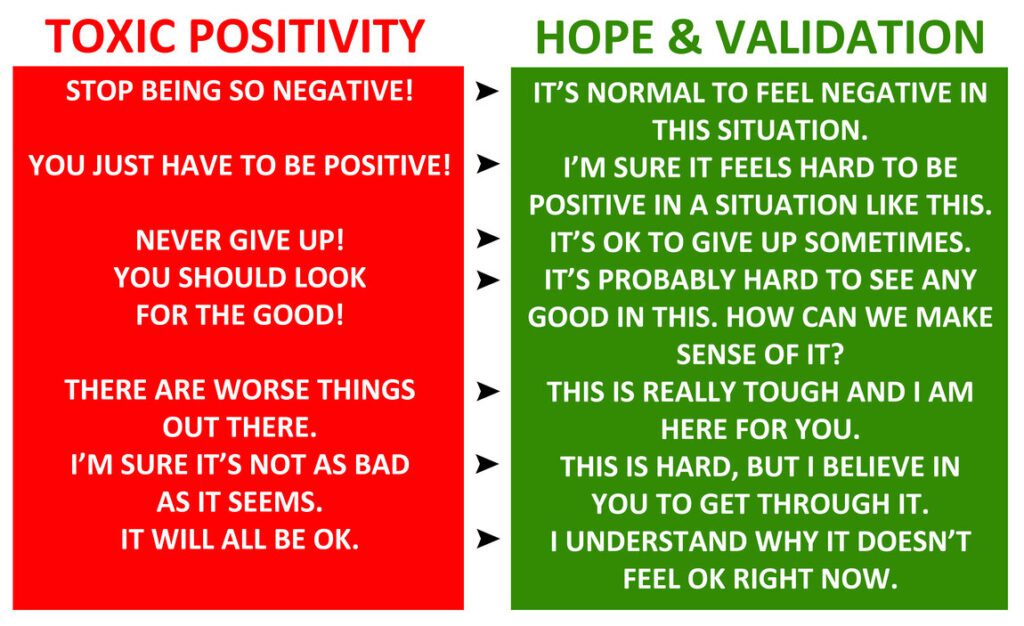

Can optimism become toxic? Elizabeth Scott establishes that “Sometimes people tend to overvalue positive feelings while ignoring or even repressing negative ones.”5 Being an optimist is fantastic. However, we should never invalidate the psycho-emotional feelings of people who are going through the eyes of the needle. Optimistic leaders need to have empathy to understand what others may not be encouraging emotionally. Your goal as a promising leader is to infuse a sense of hope and validation. Optimism must be rational.
“Toxic Positivity (noun): The overgeneralization of a happy, optimistic state that results in the denial, minimization, and invalidation of the authentic human emotional experience.” — The Psychology Group.
In the leadership sphere, optimism is profitable for coping, managing stress levels, reinvigorating physical stamina, and developing resilience to pursue goals and objectives. Optimistic leaders focus on the ‘good’ in life and are grateful for it. However, optimism becomes toxic when we ignore the ‘bad’ in life and suppressing the emotions that ensue. It is like missing a crack in a dam and not fixing it. With time, the gap will continue to grow until it causes the barrier to come crashing down if not caught and resolved timely.


There are times that we experience negative emotions, even in the leadership circle. For instance, optimistic leaders should be careful of suppressing the feelings of their followers. If there is resentment in the rank and file of their organization, then it is best the face is head-on and address it. Using positive speak to suppress emotions will only do more harm than good. A time will come when the emotions under suppression will explode and lead to more catastrophic ends in the organization. It is here that empathy has its way of helping to address these negative emotions. Optimism must be rational.
“Despite all these positive reasons that this piece profers, optimism must be rational (i.e., it must be agreeable to reason, reasonable, or sensible).” — Ogbonnaya Agom-Eze.
Other sources also highlight some of the considerations of optimism. In the title, “3 Times Optimism Does You More Harm than Good,” Amy Morin of the Business Insider posits some concerns of too much optimism. They are as follows: exaggerating the positives, being overconfident in one’s abilities, and overestimating your chances of success, are some matters that characterize too much optimism. We can go on delving into the various cons of optimism. However, it is evident that the positives of optimism far outweigh the considerations.
D. What is the Conclusion of the Matter?


Optimism is a core leadership trait that I urge every leader to invest the time to cultivate. Optimism is a call for us, for leaders to do better, and consider this piece to be that clarion call. Optimism seeds our minds with the seedlings of a can-do attitude, spirit, and mentality. In the words of Dylan Taylor, an American executive, and super angel investor, “There are really four ‘headlines’ for me: honesty, integrity, hard work, and what I call a ‘can-do’ attitude. You could call that ‘can-do’ attitude optimism, but it is not Pollyannaish optimism. Rather, it is a ‘we’ll figure it out’ type of mentality.”
“We should celebrate when optimism and hard work triumph over cynicism, lethargy, and fatalism.” — Sadiq Khan.
Similarly, this piece does not advocate Pollyannaish (i.e., unreasonably or illogically optimistic) optimism. We establish the need for leaders to embrace and cultivate the trait of optimism. However, we also advise that optimism must be rational—it must never be unreasonable or illogical. Leaders must approach optimism with an ounce of commonsense. We are wide awake here, talking about something sensible and practical that leaders can adopt to change organizations. Optimism is an investment in hope; pessimism is an investment in nothing. So, consider the time you have invested in reading this long-form piece as an investment in hope and value.


So far, this piece establishes fifteen reasons why optimism is a core leadership trait. First, optimists are innovative. They don’t get too comfortable with the status quo. Hence, they unleash their innovative and creative genius by thinking outside the box. Second, optimism is a core leadership trait because optimistic leaders are future-oriented thinkers. The recency effect does not truncate their vision—they see the big picture. They are the watchmen standing on the towers of their organizations and see the distance. They can see danger approaching from afar and can prepare their organizations for the onslaught of variations in other to secure a win. Third, optimistic leaders go for gold—they seek the best to win the prize. Fourth, they eschew the negative. Optimism is a shield that protects leaders who possess it from the rain of the arrows of pessimism and negativity. Fifth, they adopt a Winner’s Philosophy—they work towards winning consistently.
Sixth, optimism is a core leadership trait because it makes leaders into problem solvers. They don’t shy away from problems—they are solution seekers. They are leaders that continuously seek to improve situations. Seventh, they always strive to lead from within (i.e., leading with a cool, calm, and collected disposition). They are not erratic and do their very best to be rational always. Eighth, optimistic leaders are apt communicators. What good is it to have great ideas on how to improve your organization, and you lack the craft of efficient, communicative delivery? If you can’t communicate effectively as a leader, then you are just fooling yourself. Optimism will nudge you towards honing the art of your communicative skills. Ninth, optimistic leaders are business starters. They visualize the possibilities of things becoming, and they make it happen. Tenth, promising leaders have contagious behaviors. They will influence their followers to become their best selves ever in the spirit of productivity and profit.


Eleventh, optimistic leadership is not risk-averse—those that are reluctant to take risks never achieve much in life. How will you know if you can or cannot do something if you don’t even try? Twelveth, optimistic leaders are adaptable—they are apt at adjusting themselves to different conditions. Organizations are constantly changing. Hence, you need confident leaders to be the captains of your organizational flotilla. They will help you navigate and sail the forever-changing seas of circumstances. Why? They are adaptable; they can handle the pressure without breaking. Thirteenth, they embrace continuous improvement—they never want to stay stagnant. They always have a forward-looking outlook towards personal, leadership, and followership development. Fourteenth, optimistic leaders reason with uncertainty. They are constantly honing their craft of probabilistic reasoning as they face life and business uncertainties. Finally, the fifteenth, spirited leadership believes in the power of teamwork. You can’t go it alone—teamwork makes the dream work.
Optimism has a lot of solid points back it as this piece establishes. However, there are some considerations that we should note as we study optimism. The first is optimistic bias. Good things happen for sure. However, you must never underestimate the risks of experiencing adverse circumstances. Second, optimism that is not careful could make you neglect proper risk assessment. Third, beware of optimist pride. Stop concerning yourself with what people say. Doing so could nudge you to a place of pride and inaction. Remember, pride goes before a fall. Fourth, beware of toxic positivity. Don’t suppress negative emotions when they arise—deal with it head-on so that it does not fester.


As I finalize this piece, I read William Ernest Henley’s (1849-1903) poem Invictus and the last verse of this poetic piece speaks to my inner optimism. It says,
It matters not how strait the gate, How charged with punishments the scroll, I am the master of my fate: I am the captain of my soul.
Optimistic leaders are the captains of the souls of organizations. They must:
- Mind their decks before any egoism. The matters of the many come first before the issues of self. They address all before they address themselves.
- Look to the considerations of their followership and organizations before their selves. They serve their ship altruistically.
- Embrace knowledge and rationality before making utterances to affect the status quo positively.
- Hold the power staff of veracity and will never allow the Balrog of Cant to pass. And you shall know the truth, and the truth shall set them free.
- Believe in the phrase ‘learning is earning.’ They learn, earn before they leap to action. Knowledge is paramount to the optimist’s success.
- Adapt to change over stasis. From the decks of the organizational galleons, they look beyond the raging Davey Jones Locker of the status quo.
- Believe the phrase, “more act less lag, more act less yap.” They don’t sit around lagging and yapping—they talk the talk but also walk the walk.
All these lie within the soul of the optimistic leader. Optimistic leaders are the captains of the souls of organizations, and these mantras should guide their sail.
“You really need to love something or someone in order to work hard enough to be very successful. You have to believe in something and have a certain optimism. Faith and optimism come from love.” — Maya Soetoro-Ng.
I can say with full enthusiasm that ‘I am a full-blooded optimist.’ My creed is that ‘I have hope and confidence in success and positive future. I expect good things to happen to me in all areas of my life. I am intentional about life and believe that all things are working together for my good. My future is bright—though I walk through the dark labyrinths of life, I always see the glimmer of light at the end of the tunnel. Negative happenstances will not crush me; they are only molding me to become my best self ever. Challenges are not obstacles; they are only stepping stones for my ascendance to greater heights. I am mindful. I am grateful. I am alive. I am a leader. I am an optimist.’ Make this your creed too.
References
- Agom-Eze, O. (2020). Unearthing your latent potential: Discovering the gems of your subliminal self. Ounioae Books.
- Aitken, C., & Mavridis, D. (2019). Reasoning under uncertainty. Evidence-Based Mental Health, 22, 44-48. Retrieved from Evidence-Based Mental Health.
- Halpern, J. Y. (2017). Reasoning about uncertainty. The MIT Press. Retrieved from Google Scholar.
- Huber, M. (2015). Reasoning with uncertainty. Retrieved from ranger.uta.edu.
- Scott, E. (2020). What is optimism? Retrieved from Verywellmind.
- Sudharatna, Y., & Li, L. (2004). Learning organization characteristics contributed to its readiness-to-change: A study of the Thai mobile phone service industry. Managing Global Transitions, 2(1), 163-178.
Home & Living
5 Benefits of Having Plants in Your Home
Plants are not just the food we consume. Plants also come with many benefits that support our physical, mental, and emotional health. Please read all about it here.


Spending time indoors has become more popular, especially since the COVID-19 pandemic started in late 2019 or early 2020 (NB. The World Health Organization (WHO) tracks its start date at December 31, 2019). Many people have had to work from home, especially after the lockdown began in many countries across the globe. Even in places with a reduced number of cases, staying at home was still the paramount emphasis.
“Healthy plants are a critical resource, the natural protectors supporting life on Earth” — International Year of Plant Health.
Technology is fast advancing, and it is now possible to quickly meet many outdoor needs without actually leaving our homes. We can easily shop, make virtual visits, exercise, and many more from the comfort of our homes. As we spend more and more time at home, many people have become aware of what it means to have plants as part of their home décor.


Plants are a crucial aspect of our world, providing us with food, fiber, shelter, medicine, the precious air we breathe, and lots more. The benefits of plants are much more than many of us think, especially when you have them as growing, potted members of your homes. In this piece, we will explore some of the benefits of having plants as part of your home. Hopefully, our point of view will make you believe in using plants as your home decor elements. Let’s go:
#1. Increased Aesthetic


First things first, beauty! If you want an affordable and easy way to decorate your home, then having plants is an excellent choice to achieve that. A plant increases the aesthetic of your home, improves your home’s general beauty. It gives your home an interior decorative look that feels conducive and is pleasant to the perception.
“When your home looks good, you feel good” — Anonymous.
Having plants in your home will give your home a natural look and feel. Such an ambiance stimulates the senses and the mind. Plants brighten up your surroundings and are guaranteed to lift your mood whenever you’re home. From colorful flowery blooms to simple green potted foliage, plants always guarantee to improve your home aesthetic.
#2. Cleanses the Air


Having plants in your home is an excellent catalyst for improving the air quality in your home. It helps refine the air that you take in your home. Studies show that pollution levels are higher indoors than outdoors due to the mix of pollutants (i.e., outdoors and indoors) from substances, like paints, detergents, chemicals, household furnishings, etc. Thankfully, Plants help in cleansing these toxins by taking in the harmful carbon dioxide found in them and exchanging it for oxygen, meaning clean air.
“Use plants to bring life.” — Douglas Wilson.
Research shows that household plants remove harmful chemicals from the air that can cause ‘sick building syndrome.’ Best of the South Bay article, “15 Detoxifying House Plants for Cleaner Air,” lists several house plants that remove toxins from homes. These toxins could come from carpeting (e.g., formaldehyde), plastics (e.g., trichloroethylene), paints (e.g., benzene), adhesives (e.g., xylene), etc. Some examples are Peace Lily (Spathiphyllum), Aloe Vera Plant, English Ivy (Hedera helix), Areca Palm (Dypsis lutescens), Bamboo Palm (Chamaedorea seifrizii), Mother-in-Law’s Tongue, Snake Plant (Sansevieria trifasciata), etc.
#3. Prevents Illness and Helps with Faster Recovery


Plants are proven to prevent illnesses, such as sore throats, colds, headaches, coughs and, flu-like symptoms. Having plants in your home aside from preventing you from getting ill can also speed up recovery from illnesses. Although most researches focus on plants’ healing and recovery abilities in hospitals, it is safe to say that the healing and recovery abilities of plants can also be extended to the home.
“Just having plants around helps with your mood. You feel relaxed.” — Pia Wurtzbach.
In a 2002 research symposium paper by Roger S. Ulrich1, people recuperating from several kinds of surgery needed less pain medication, looking at greenery during their recovery periods. Also, they had shorter hospital stays than people who were not looking at greenery during their recovery periods. The study also posits that plants/vegetation helps heighten patient, family, and even staff satisfaction. Because the views of nature can enhance clinical and medical outcomes, it also leads to a reduced cost of care, hence of positive economic value.


The tradition of taking a bouquet or potted foliage to a loved one in the hospital has become a repeated practice. It is now evident that it helps in their recovery process. The Roger Ulrich Research1 shows that people who had surgeries heal faster and can tolerate pain better when there are plants in their rooms. Generally, health-wise, rooms with plants are less dusty and moldy than rooms without plants, so if you want your home feeling fresh and clean, plants can act as natural filters to catch airborne particles and potential allergens.
#4. Improves Mental and Emotional Health


When you go out in nature, you feel relaxed and less stressed. It is probably because of this reason that you enjoy going on walks and viewing natural scenery. Researchers have proven that being in nature around trees and ornamental horticulture is suitable for your mental health as it reduces your stress levels and strengthens your body and mind. Although taking long walks through parks and gardens may not be the same as having plants at home, the benefits are still the same.
“Plants are the catalysts that help in ushering us into a state of mindfulness. The ambiance they create helps us in evoking the sense of serene presence, attitude, and transcendent altitude.” — Ogbonnaya Agom-Eze.
Having plants at home can help you relax and will reduce your stress levels. Its air-cleansing ability leaves you feeling rejuvenated and generally happy. The better air provided by plants can help keep you mentally awake and alert, and best of all, having plants at home helps in sleeping. There is scientific evidence that lavender, orchids, and the like, through their scent, can lower blood pressure and heart rate, thereby improving the quality of sleep.


“Plants are the catalysts that help in ushering us into a state of mindfulness.” — Ogbonnaya Agom-Eze.
Although nurturing house plants is not an inherently difficult task, learning to do so can help you relax and reduce anxiety. It can also increase your general outlook on life. Also, if you are dealing with trauma, plants can help you recover, which teaches you the virtues of patience, self-control, and peace. Ogbonnaya Agom-Eze once said that “Plants are the catalysts that help in ushering us into a state of mindfulness. The ambiance they create helps us evoke the sense of serene presence, attitude, and transcendent altitude.”
#5. Increased Productivity


In a 1989 research, NASA revealed that indoor plants improve concentration and productivity by up to 15 percent. Researchers from Exeter University reported Daily Mail also found out that indoor plants can improve concentration, productivity, and general well-being by 47 percent. They also found that plants in your home and office can boost your memory by up to 20 percent. When you surround yourself with plants, you increase your attention, boost your mood, and reduce stress levels, increasing productivity.
“Green may serve as a cue that evokes the motivation to strive for improvement and task mastery, which in turn may facilitate growth.” — Dr. Stephanie Lichtenfeld.
Psychologically the color green has been researched to evoke strong emotions. Whenever you look at the color green, you think of growth, renewal, and life. Green evokes feelings of peace, rest, and abundance. The chlorophyll in plants is the precursor of the green color that we see in plants. When we look at foliage, we think of life, freshness, and vitality. Having plants in your home evokes the feelings that we mention above and increases your general well-being.


Reading the benefits of having a plant in your home can look too good to be true. We must never underestimate the power inherent in plants. In addition to the facts here stipulated about the benefits of plants in homes, plants also serve as food for our daily healthy upkeep and well-being. Our choices are what determines the healthy lifestyle that ensues. They seem easy to do, but we find ourselves not doing them.
“I have a lot of plants – my living room is like a jungle. I like the idea of bringing the outside in.” — Samin Nosrat.
The genesis of house plants dates to the ancient world. The 17th century saw the growth of plants indoors. Andrew Faneuil, an affluent Bostonian merchant, was credited to be the first builder of the first American greenhouse in 1737 for the sole purpose of growing, maintaining, and cherishing plants. Some would argue that due to the past generation’s love of plants, they lived and enjoyed life longer. Thankfully in today’s world, the art of having houseplants is slowly being revived. However, this is mainly for aesthetic purposes. We hope that more people will come to appreciate the full benefits of having a plant in their homes.
References
- Ulrich, R. S. (2002, Month date). Health benefits of gardens in hospitals [Paper presentation]. Plants for People, Florida. Retrieved from https://www.researchgate.net/publication/252307449_Health_Benefits_of_Gardens_in_Hospitals
Psychology
11 Ways on How to Make an Effective Decision
We make a ton of decisions in our lifetime. The challenge we face as humans is whether we are making the right decision or not. The fact about decisions is that once we make them, we set in motion a chain of events that begins to steamroll like a bullet train. The essence of this piece is to help us hone the art of effective decision-making. Please, read all about it!


Decision-making is a robust thought process. Every moment of the day, we make tons of decisions. Some decisions we make are inconsequential, and some others life-changing. Whatever the outcome of our decisions is, our optimum target is for a positive result. Therefore, we always want to make sure that we come out top in all the decisions we make. That is the essence of this piece, to help us hone the art of our effective decision-making skills.
“A journey of a thousand miles begins with a single step.” — Lao Tzu.
As powerful as decisions are, they are not always that easy to arrive at, which is why you want to make sure you go about it the right way. We want to make sure we get our decisions right; hence, the need for effective decision-making. Making effective decisions starts with taking the first step, just like Lao Tzu said in the quotation above.
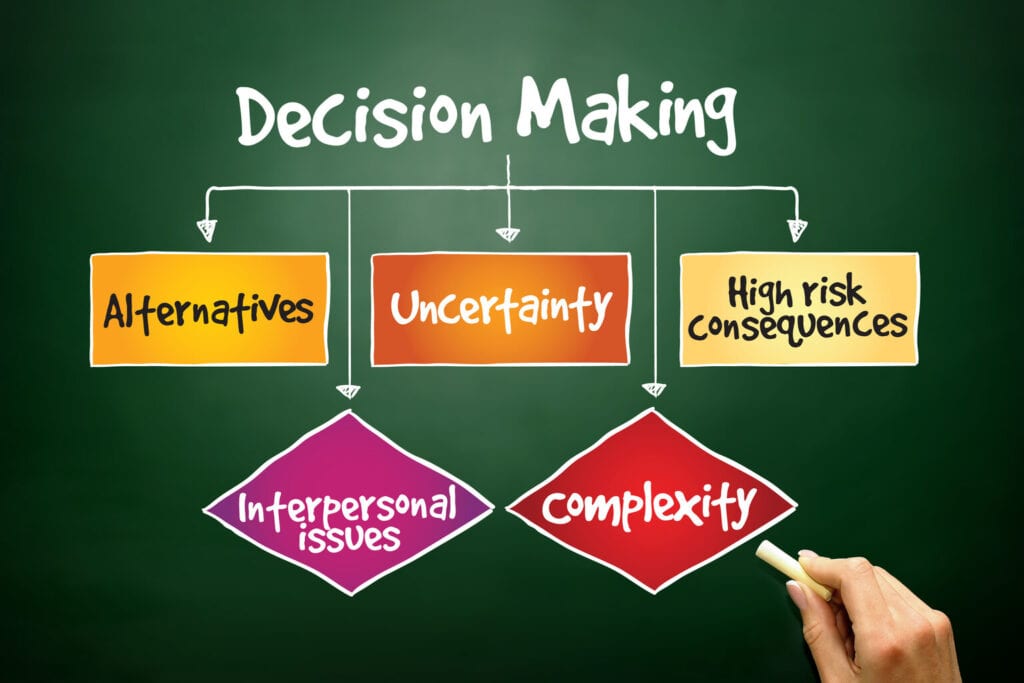

Every inspiration, idea, achievement was born out of a decision. Every step you take towards making that decision counts. You must filter through alternatives, go through the smog of uncertainties, complexities, interpersonal issues, and high-risk consequences to get to the right decision. More so, the truth in itself is that not making the decision is a decision itself. So, would you rather choose not to make the decision or start from somewhere? Your guess is as good as mine; it is better to start somewhere. That is why I have listed thorough steps to take to ensure you make effective decisions.
11 Ways of Effective Decision-Making


It is important to note that we are accountable for the product of our decisions and so must bear the consequences that will come with it, hence why we mustn’t make hasty decisions. Making effective decisions requires tact. We can adopt various ways to ensure that we arrive at the right decision, for the right moment and the right occasion. Lets’ look at some of the ways to help you arrive at a practical conclusion. Let’s go:
#1. Think It Through


Most times, we make decisions without even thinking about what we are deciding on or the outcome, which is alright, all things being equal. But when it comes to a huge life-changing decision, you want to take your time to think about it. By thinking about it, you are weighing your options. You are deciding whether there are other alternatives or ways to go about the situation at hand. Also, you need to figure out the pros and cons and measure out which one has more benefits.
Thinking it through allows you to determine the impact your final decision will have on your future and in the life of those around you. Some people say decide on it quickly to get it over and done with and not lag on the decision process. However, I say that you should think about it thoroughly. Thinking it through so will lead to a more satisfactory outcome. The act of thinking it through an issue could evolve over days, weeks, months, or even through a couple of years.
#2. Sleep It Through


Hmm! Am pretty sure you are wondering why you must sleep through the thought before making that decision. I bet you are also wondering about the difference between this and thinking it through. The fact is that the beauty of sleeping it through lies in the quietness of your mind. We process information better when our mind is at its optimum silence. That era of peace allows our minds to search for answers by connecting deeply with our subconscious state.
Sleeping it through doesn’t have to last that long. It may be a night or two that does the deal in ushering you to the compelling solution you seek. It may even be for a couple of hours during a siesta—a moment during the day when you take a break, and your mind is in a perfect halcyon state. Then, you will wake up and find that you have an answer as to why you decide on ‘A’ over ‘B’ options. What I love most about this process is that your decision comes from a natural state.
#3. Seek Another Opinion


When you are not sure, always ask for other people’s opinions. Doing so will help affirm what your instinct is telling you and will surely help you to go ahead and make a firm decision. Sometimes, when we seek the proper counsel from the right people, we gain a cartload of wisdom from the tacit knowledge experience of the people we are consulting. Maybe, they have had the privilege of going through that particular situation that we are inquiring about and currently going through. Hence, we learn from their experience and then make an effective decision from there.
Seeking another opinion does not require you to call a crowd into the matter. It could be one or two persons that could help give you some insight into the issue. However, in some cases, three could help confirm your decision, especially if everything they are saying is in perfect synchrony. It could be a family member, friend, specialist, or higher authority in the area you seek insight into. The wisdom you gain seeking an opinion from others can allow you to make an effective decision.
#4. Your Value-Based


Sometimes, going with your gut instinct could be the key to making a practical decision. The fact is that your instincts align with your values and is most of the time correct. In “What Influences Your Decisions,” I mentioned that “What you highly believe in is what would drive your decisions and decisions built on your value system is very likely to be the best decisions you make.”
Sometimes you may not have the time to weigh the pros and cons or even have the time to sleep over it. In these instances, many concomitant actions may be hanging on you making that effective decision, especially if you are in a leadership role. Such a time is when you have a strong bias for action, and you are required to decide on the fly. So, let your value-based gut instinct do the work for you in such instances; you become a confident decision-maker by so doing.
#5. DYOR


The acronym stands for Do Your Own Research (DYOR). You’ve thought about it; you asked other people for their opinion on the matter; the next step is investing time and conducting some research. Yes, we said your value-based system/gut-feeling or intuition could be right most of the time. However, the fact is that we live in a world that is constantly evolving world and changing. There is a constant update to policies and laws regularly. You might land yourself in a wrong decision if you don’t take out time to do your own research.
Assuming you want to apply to a university to do a pharmacy course and perhaps your friend got into the same university the previous year. From then till now, things may have changed in the institution. So, without doing some of your current research, you may not be aware of some recent changes that the university has taken on that same course which may not favor you. So, it is essential to do your due diligence! Put in the time and do your research in other to make an effective decision.
#6. Digest It


“Digest it!” That’s right, “Digest it!” Ruminate over it. The digestion stage is the question or the waiting stage. After you’ve thought about it, slept through it, inquired from others, did your research, and you know what your instinct is telling you. Now, it is time to ask yourself if it feels right. If you are about to do the right thing? If it does feel right, then go ahead. Give yourself the green light to make an effective decision.
#7. Put Your Emotions Aside


Our emotions are an integral part of our decision-making process. The fact is that we don’t make the best decisions when our emotions are at play. Emotions affect our thinking and tend to motivate us to act quickly. However, in such a state, we may make rash decisions that don’t augur well at the end of the day. Have you ever decided on something in an emotional state of anger? If you have, I am sure you did later regret that decision, right?
As weird as it may sound, there are times that we also regret decisions that we make out of good emotions. For instance, if you bought that dress because you were feeling happy on that day. But later, due to buyer’s remorse, you now regret your actions because you now think that could put the money to better use on more critical needs. That’s how powerful our emotions come into play, so it is best to put them aside when you are about to decide on something big or small.
#8. Identify the Risks Involved


Acknowledging the risks involved before you decide will help you create a plan to mitigate those risks. One good factor about identifying the dangers is that it allows you to focus less on the consequences. Let’s face it—every decision you make will either make you happy or sad, but fearing those consequences will only push you farther away from making any decision at all. Nevertheless, you can mitigate the effects of ensuing risks via an effective risk management plan when you identify them earlier.
Developing a risk management plan consists of the following steps-identify, analyze, evaluate, and action. First, you must identify the risks involved. Second, analyze your options. Third, evaluate and plan out your strategy of attack. Fourth, act on your choices. By carrying out the steps of your risk management plan, you will make an effective decision in the long haul. Likewise, you can also eschew these risks with a creative project plan.
#9. Visualize Your Achievement Daily


There is power in visualization. Constantly picture in your mind how you will look once you’ve attained your set goal. For example, if you have ever dreamed of owning a coffee shop while putting in all the necessary efforts to set up your business or even still saving up some capital to commence the project, daily picture yourself in your shop. Picture yourself wearing your barista apron. Visualize yourself greeting your customers. Imagine yourself checking them out at the register. There is power in visualization.
The exercise may seem banal at best; however, in the words of Ogbonnaya Agom-Eze, “What you picture in your mind’s eye permeates the fabrics of the universe to become your reality.” This simple exercise increases your motivation and helps to keep you focused on your goal. The activity above also enables you to visualize pending decisions. It also allows you to weigh options on tackling those decisions when they become due. Imagining your achievements will let you make more effective decisions.
#10. Dedicated Effort


Decision-making without dedicating effort to achieve is a waste. Instead, do something every day that will bring you closer to your goal. For example, if you have decided to open a coffee shop, as I said earlier in an instance above, you need to take a step every day towards achieving that goal or dream. If the effort you are putting in is not working out the way you planned, then change your strategy until you reach the result you want. Every effort counts—so take action!
One more thing, in the process of putting effort to make effective decisions that will bring you closer to your goals, always remember Pareto’s Law. It states that “roughly 80% of the results come from 20% of the efforts.” As much as you can apply this law in a larger corporate setting, you can also apply it to yourself in the swat of your effective decision-making skills. Technically, via Pareto’s Law, “80% of your decision results come from 20% of the sum of all decisions you make that are effective.” Do you agree? I would like to hear your opinions in the comment section.
#11. Stay Committed


When you have finally arrived at a decision, you need to stay committed to it as you don’t want all your effort to waste. It is not enough to say, “I will lose ten pounds in three months.” Yet, you walk past the treadmill in your loft every day. Or you drink all the sodas that the store has to offer. You cannot say, ‘I will write a novel before I turn thirty,” and yet you cannot write the first line of your story plot. Or ‘I will own a coffee shop,” and yet you are doing nothing to actualize that dream.
For a decision to be effective and successful, there is a need for total commitment. Effective decision-making requires total commitment. It would be best if you were all in when you make that decision to see it through from the cradle to the grave. Total commitment is a requirement to ensure that decision-making becomes effectual. It is the carabiner that connects effective decision-making to the success that ensues from making such choices. But, then, you must stick with it, persevering while working to make sure it pans out to be successful.


We make a ton of decisions daily. The essence of this piece is to ensure that we hone our skills in the art of effective decision-making, which, to be honest, can be challenging at times. Effective decision-making is the sprockets that answer the questions of who, what, when, why, where, and why? For our decisions to be effective, what do we do? First, we saw that we need to think the process through. Second, we need to sleep it through and make our choices in a calm state of mind. Third, we can seek the opinion of others. Fourth, we can make effective decisions via our gut instincts. Fifth, we need to do our due diligence by doing our research.
“The risk of a wrong decision is preferable to the terror of indecision.” — Maimonides.
Sixth, digest it—take your time to contemplate over it repetitively before committing to a choice. In the words of Muhammad Ali Jinnah, the Founder of Pakistan, “Think 100 times before you take a decision, but once that decision is taken, stand by it as one man.” The “thinking” is the digestion process. Seventh, put your emotions aside and then decide. Eighth, identify the risks involved—develop a plan to mitigate or eschew them. Ninth, visualize your achievement daily—that will channel your decisions towards your dreams. Tenth, put in your very best effort when you commit to a choice. Finally, stay the course after you commit to a decision. Do these, and you will be on the right path towards making effective decisions.
Psychology
What Influences Your Decisions?
We are forever under pressure with various instances of where we need to make a decision. However, the questions are, “What influences your decisions?” What factors nudge you to deliberately make a spontaneous move to pursue a particular line of action?” Please read all about it and find out some of the answers to these questions.


Decisions, decisions, decisions!!! In our daily life, from the moment we wake up till bedtime, we are constantly making decisions. We perpetually knacker ourselves with the questions, ‘Should I, or should I not?’ What to choose, what not to choose. How to choose and how not to. But how many decisions do you think you make daily? Well, I guess a lot for which we are not even aware of, to say the very least.
“You can’t make decisions based on fear and the possibility of what might happen.” ― Michelle Obama.
I have made quite a lot already today. When I woke up, I decided whether to do my daily workout or skip it today. After all, I’ve been excellent at it and consistent at keeping fit. What to wear, type of cereal I should have for breakfast. While having my breakfast am already thinking of lunch for the kids. Before I continued writing on this article, I also had to decide whether I should read first or write or check my emails and make some calls, and the list goes on and on. Decisions, decisions, decisions, and more decisions!!!


We make a Herculean load of decisions a day. Reading the article, “35,000 Decisions: The Great Choices of Strategic Leaders,” on the Leading Edge section of the Roberts Wesleyan College website2 is a great eye-opener. In one study that he cites, he establishes that “an adult makes on average about 35,000 decisions each day, while a child makes about 3,000 decisions per day.”3 The information from this study is nothing but mind-blowing. In another study he cites, he establishes that “we make 226.7 decisions each day on just what we eat alone, per researchers at Cornell University.”4
The type of decisions we make determines the approach or process that we implement. Depending on the kind of decisions we ought to make—some of which are pretty straightforward and some a bit more complex—the approach we implement can range from simple to deep thought approaches, which will result in either good or bad decisions. Furthermore, the decisions we make vary from personal decisions, career choices, leisure decisions, education decisions, political decisions, faith-based decisions, financial decisions, medical decisions, and so many others.1


While we are busy doing things that we love, the things that matter to us, and the things that stipulate our purpose (i.e., our calling, our why for, etc.), our mind or psyche is busy searching for answers to the questions we always ask ourselves. But how we finally arrive at a particular solution is what we often overlook. As human beings, we have the natural tuning to pick and choose what will work best. Hence, in this article, we will look at some contributing factors to our decision-making process. Let’s dig into them below:
#1. Personal Values


Your values are the core motivating factor in your decision-making process. They are an intrinsic part of our lives and therefore support our thoughts and decisions, and actions. Our values portray who we are, the standard of life we want to live, and how we want to live. If you are a Christian, most of your decisions and actions will be based on your Christian faith, as it is the primary driver of your values and beliefs.
Decision-making requires that you use your value-based system regardless of how it worked for someone else. The way you discipline your child will have a firm footing on your values rather than how your friend disciplines their child; thus, it spawns from a personal attribute. What you highly believe in is what would drive your decisions. Decisions sitting on the foundations of your value system are very likely to be the best decisions you will ever make.
#2. Your Childhood Experiences


There is no denying that our upbringing plays a huge part in our decision-making process because it helps to form and shape our beliefs, and this is due to both actions and words used during the child’s formative years. When growing up, you would remember some words said to you by your family, friends, and even teachers. Some or all of these words have come to impact your life. Some of these words have also helped you in your decision-making process.
Our mind is indeed a processing unit. Whatever experiences that we experience in this life go into the storage units of our compartmentalized minds. Sometimes, it may seem like we have forgotten some of these experiences. However, they lay buried in the depths of our subliminal self. It often replays our childhood experiences to us. These thoughts are often the product of triggers that come from sounds, sights, feelings, taste, and scents.


How then does it help us in making decisions? Let’s use taste as an example here. As an adult, you sometimes remember how sweet your mom or gran’s cake tasted as a kid. Or the taste of your most agreeable dish as a child, and you long to have it again. As they might not be near to make it for you, you decide to give it a try and bake it yourself. Of course, off you went and baked, “Hooray!!!” It may not have turned out with the same childhood taste, but at least, the thought of it prompted you to bake. That is the potent power of your childhood experience in action.
Each of our childhood experiences is different. Some people grew up in homes that are very regimented or disciplined. Others grew up in homes where there were constant disagreements and where you had arguments for breakfast, lunch, and dinner. Simultaneously, others come from a home that is open, participative, and welcomes dialogue. Whatever spectrum you find yourself in has a significant influence on our decision-making process and impacts our relationships with ourselves and others.


I want to point out here that children are like sponges. They soak up what they see and hear while growing up. Thus, parents or couples with children must be careful of how they relate with each other because whatever they are saying or doing is sinking into the subconscious of their wards. The Editor-in-Chief of Oaekpost wrote a great piece titled “Let’s Raise Our Children Right.” Let’s do just that, “Let’s raise our children right by acting right.”
Hence, if your childhood upbringing spawns from an environment where you repetitively heard hurtful words, such an experience can also lead to poor decision-making later on in life. Such incidents could cause you to have flashbacks. These are the “recurrent and abnormally vivid recollection of a traumatic experience, as a battle, sometimes accompanied by hallucinations.” These negative thoughts become seared to the minds of children. It scars them and becomes a scab of their undoing when it comes to decision-making as they grow up. Which then takes us to the next point—Memories.
#3. Memories


Memories sprout from experiences we have in life, and these are also very personal to us. Because memories are pretty subjective, it allows us to create our moral beliefs through repetition. Its repetitive nature teaches us how to interact with the world around us, which, in turn, aids in our decision-making process. Because memories are an essential factor that influences our decision-making, it supports positive behavior and offers negative consequences. A child who has gone through the consequences of disobedience will have a robust decision-making will to avoid similar life occurrences later on in life. Repetition is the key here—it helps us to consolidate these memories in our minds. The more we do it, the more it is stored in our memory.
I guess the question then is what makes our mind travel back and pull out those memories? Emotions! Yes, emotions are one of the best triggers of our memory and work exceptionally well in taking us on the journey of remembrance down memory lane. The feelings we took out of past experiences, either good or bad, determine how we react when similar situations occur. You probably won’t like banana cake if you don’t like bananas. The reason could be because of its smell, or its munchy nature makes you sick. However, there is something that registers in your memory banks that forms the foundation of why you don’t like it.


Another trigger is the scent. The smell of a particular thing can quickly bring out a vivid experience. If you are like me (I have a good sense of smell), and therefore cannot stand certain smells like the smell of a sheep and goat and so cannot eat anything made from them. Growing up, my parents had a small farm where we reared goats and chickens. I was ok with the chickens, but goats’ smell disgusts me a lot and has stuck with me to date. Of course, sights, sounds, or even touch are also good triggers of our memories. Once one of these triggers sparks off, it takes us down to a specific timeline.
#4. Community


The community we engage in also influences our decisions. Such communities include gyms, churches, social groups, school groups, and even our local community where we live, move, and have our being as people. We sometimes make decisions based on our group interactions. If, for example, you are in a weight loss group where you all encourage each other and share ideas. You would often go with some of the suggestions given to achieve your weight loss goal. Hence, we can establish that the communities that we belong to help in forging our core values, which we have seen also influences our decision-making skillsets.
#5. Higher Authority


This type of decision is out of our control. It is therefore backed by authority or deemed fit by circumstances. For instance, if you do not like taking part in electoral votes, you may be way out of luck should you live in a country where voting is mandatory (e.g., Argentina, Australia, Belgium, Bolivia, Brazil, etc.). Hence, higher authority is influencing your decision due to this factor. Therefore, you are under obligation to vote, even if it is against your wishes. In another instance, if your eyesight is failing you and you are required to wear glasses when you have no desire to do so, the condition demands that you need the glasses for clear vision.
Our workplaces are also a higher authority that mandates us to make decisions that we might not want to take. Because of obligation and the need for a paycheck, we become obligated to the higher authority of our jobs. Assuming you are a front-line worker during this current pandemic crisis, your workplace might make it mandatory for all staff to have the COVID-19 vaccine. You don’t have any option but to take it if you want to keep your job in such a situation. Despite all the powers that we are subject to, God’s control over all remains the highest authority.
#6. Others’ Influences


Our family, friends, and colleagues also influence our decisions. Because we spend more time with our loved ones and want to make them happy, we will find that we often decide based on their influence. You will find yourself deciding to go party with friends and colleagues at the hint of such suggestions due to their influence. Their recommendations and impact feed your will to decide and act. We often make these decisions in a bid to maintain these relationships. Call it peer pressure, if you will, because that is what it is, by the way. The factor of influence is just one in many; there could be other influences that impact decision-making.
“Truly successful decision-making relies on a balance between deliberate and instinctive thinking.” ― Malcolm Gladwell.
Decisions are inevitable in our lives, and many factors influence our decision-making process. The list we discuss in this piece is not exhaustive. I believe that there are more factors there. I have only mentioned a few here. Please feel free to share your thoughts in the comment section below if you know any other factors. As stipulated in the quote above, be deliberate and instinctive in your thinking-it will enhance your decision-making skills.
References
- Chukwuma, U. (2020). How to unlock the authentic you. Uju Chukwuma.
- Hoomans, J. (2015). Leading the Edge. Retrieved from https://go.roberts.edu/leadingedge/the-great-choices-of-strategic-leaders
- Sahakian, B. J., & Labuzetta, J. N. (2013). Bad moves: How decision-making goes. Oxford University Press.
- Wansink, B., & Sobal, J. (2007). Mindless eating: The 200 daily food decisions we overlook. Environment and Behavior, 39(1), 106-123.
Relationships
15 Reasons Why People Cheat on Their Spouse
There is no justifiable reason why anyone should cheat on their spouse; however, it still happens. On many occasions, we are the architects of our own relationship’s demise. We implode our relationships, which make partners indulge in infidelity. Discover the reasons why people cheat on their spouses. Saddle up! You are in for a long-form piece of a ride!


Cheating is defined only as a physical affair in which two people are engaged in sexual or emotional activities outside of their primary relationships or marriages. Cheating is a relationship variation that has existed for eons. People get into relationships for various reasons. However, the most significant factor that brings two people to become intimate is usually love. In the traditional sense of humanity, a man and woman fall head over heels with each other. From that initial spark, they may go into the union of marriage—a commitment before God and man to stay true to one another.
“When people cheat in any arena, they diminish themselves—they threaten their own self-esteem and their relationships with others by undermining the trust they have in their ability to succeed and in their ability to be true.” — Cheryl Hughes.
Cheating is the art of living a lie. It is an emotional betrayal that stings like whoa—like a double payload delivery of a cocktail of stings from a bullet ant, a warrior wasp, velvet ant, a red paper wasp, to mention a few. Cheating, no matter how the perpetrator goes about it, as we will later see in the following paragraphs, is the crucifixion of your self-esteem and the undermining of trust that one once shared with their partner. In the words of Gemma Halliday, “Earthquakes just happen. Tornadoes just happen. Your tongue does not just happen to fall into some other girl’s mouth!” Cheating is a process that evolves in layers through time. It doesn’t just happen. Cheating is never ideal, nor should it be tolerated for any reason.


Research conducted by the Institute for Family Studies (IFS) establishes that men have a higher propensity to cheat than women. Still, the gender gap in infidelity varies by age. Wendy Wang of the Institute of Family Studies (IFS) establishes in the piece, “Who Cheats More? The Demographics of Infidelity in America,” that “20% of men and 13% of women espoused that they have had intimate knowledge with someone different than their spouse while married.” This IFS data comes from a recent General Social Survey (GSS).
From the above infographics, we make several deductions from the data. Among ever-married adults with the age range of 18 to 29, women slightly trump men to be guilty of infidelity (i.e., 11% vs. 10%). We can also see that infidelity spikes during both genders’ middle age cadre from the data above. We also know that infidelity skyrockets among women in their 60s (16%). However, we see a dip in that share for women in the 70s to 80s age range. On the split end of the spectrum, men in their 70s record the highest infidelity levels (26%). That share for men remains high among men ages 80 years and older (24%). There is an 18% difference between men and women in the most senior age group.


However, there is this erroneous belief that women in their peak period (18-30 years) find it hard to be faithful to a single partner because they are highly sought after by men. At this age range, the credence establishes that their male counterparts at the same age are trying hard to get a degree, get a job, get a life and become responsible men. These males find it hard to concentrate on women at this stage. However, from Infographic A, we see that infidelity starts its gradual spike to overtake infidelity in women between that age range (18-30). However, between the ages of 30-80 plus, affairs are on the rise in men. The assumption is that these men tend to cheat more than women because they are now more settled and have a higher earning power—they have extra monies to throw around on women outside their marriage.
We could keep crunching numbers that depict the age ranges that show how men and women cheat on their significant others. However, that is not the essence of this piece. Our goal is to expound on the reasons why people cheat in the first place. However, before we explore those factors, let us learn about some of the cheating types that exist. Second, we will also look at the types of people who cheat on their partners or spouse.
Types of Cheating


As we established earlier, the art of being intimate sexually or emotionally with another individual that is not your spouse will pass off as cheating, or affair, or spousal infidelity. Talking about marital infidelity or adultery or cheating is usually a gray area or relationship avenue where many people will not willingly go. What some people constitute as cheating may not be cheating to others. Discussing infidelity is treading on murky waters, after all.
“The more people rationalize cheating, the more it becomes a culture of dishonesty. And that can become a vicious, downward cycle. Because suddenly, if everyone else is cheating, you feel a need to cheat, too.” — Stephen Covey.
In an article titled “What is considered cheating in a relationship? The 7 main types,” on the website HackSpirit, he did a good job expounding the various kinds of affairs that could be. He discusses the following types of affairs—Emotional, Cyber, Object, Physical, Micro-Cheating, Financial Infidelity, and Flirting. However, in this piece, I will be covering the following kinds of cheating—Physical Cheating, Emotional Cheating, and E-Cheating or Cyber-Cheating. Let’s get on with it:
(a). Physical Cheating


Physical cheating readily comes to mind when you stipulate that people have an affair outside their nuptial union’s bonds. It usually involves sexual or physical intimacy with someone who is not your spouse or someone you are in a relationship with as a couple. A physical affair could include a tender holding of hands, kissing, caressing, groping each other in inappropriate areas or erogenous zones, or getting to the point of having deep sexual knowledge of each other.
Amusingly, some cheats who engage in sexual behavior outside of their primary relationship try to avoid kissing their cheating partner. They may feel that kissing would be much of an intimate act. In other cases, cheating partners may do everything like kissing, caressing, fondling, etc. but won’t have sex with the other person to feel like they haven’t completely crossed the line. The cheating partner only sees sex as the act that seals the relationship as the affair. To them, all other acts of physical intimacy are not cheating in their book.


Although the definition of physical cheating varies from person to person, the truth is that I don’t think any of us in our proper traditional sense of the word marriage or union would want to imagine our partner touching, caressing, or kissing another person. In the weird and twisted world that we find ourselves in, such stories are no longer an anomaly. You hear of couples who wish to entertain other men and women in their marital bed. It’s a morally decadent and twisted world that we live in today.
(b). Emotional Cheating


Emotional cheating is a form of affair in which the cheating partners try not to get physical with the person they are in cahoots with, not physically expressing the signs of a loving relationship. Such physical intimacy symptoms include handholding, kissing, cuddling, intimate hugging, or more. Emotional affairs usually happen in the communicative realm. A man or woman gets very close with someone of the opposite gender that becomes their listening ear or shoulder when they need someone to vent to other than their spouse.
While there is nothing wrong with communicating heartfelt issues with a friend who may be of the opposite gender, the problem with this is that what you feed will eventually grow. Typically, in a functional union, a man and a woman in the traditional sense of relationship should effectively be free to communicate with themselves to bear one another’s burdens. However, when one spouse leans more on the listening ear of the present shoulder, an outsider, it is evident that such may bankrupt the communicative essence with the person’s spouse. The relationship with the listening ear will grow, while that spouse’s relationship and communication will suffer.


Emotional cheating involves sharing intimate details about your life, about your spouse, or marriage with someone you have an attachment or attraction to in some way or the other. Sometimes these vibrant affairs start as being best friends in a platonic way. There are usually no intentions to cross any boundaries from the onset. Sometimes, it could be co-working relationships that advance into more intimate territories. However, the duo may not be crossing the lines of getting physically close (e.g., kissing, caressing, fondling, and sex but in many cases).
However, we must never be naive to think that in time, that physical intimacy will not follow an emotional affair. Investing in mutually budding communication will consistently build a trust bond between parties. It could quickly spiral into a physical experience between the duo. While it’s not just women who are susceptible to emotional cheating, research shows that they are the most likely to form these emotional attachments.
(c). E-Cheating


E-Cheating or Cyber-Cheating occurs when people seek connections and relationships with people they meet or reconnect with over social networks, dating sites, email, or phones. Sometimes the nature of these electronic messages is sexual, and sometimes they’re more subtle but may still be considered intimate. Cyber-Cheating is a relationship pandemic that is causing a lot of upheaval in relationships. It is a nuanced situation and may appear less severe as everything takes place in bits and bytes on the World Wide Web.
E-Cheating, in a way, is a form of emotional cheating. But like emotional cheating, it may also grow to become physical cheating. It is pretty easy to meet someone new on various social media networks. Constant communication builds fondness. After a while, we find ourselves writing them regularly. It then gravitates to you sharing intimate details about our life. It morphs itself into a solid emotional attachment, and you become fond of them. Sometimes, it may take longer for E-Cheats to themselves. However, once they meet each other, the physical cheating ball begins to roll.


“Soon, he was online every night until one or two a.m. Often he would wake up at three or four a.m. and go back online. He would shut down the computer screen when I walked in. He used to take the laptop to bed with him in the past, and we would both be on our laptops, hips touching. He stopped doing that, slipping off to his office instead and closing the door even when A was asleep. He started closing doors behind him. I was steeped in denial, but my body knew.” — Suzanne Finnamore.
Apart from these three affairs that this piece addresses, I would like to mention the remaining four, Lachlan Brown establishes on HackSpirit. The others worth noting that he discusses are—Object Affairs, Micro-Cheating, Financial Infidelity, and Flirting. In terse terms, Lachlan establishes that Object Affair “occurs when a partner in a relationship becomes overly obsessive in something other than the relationship (e.g., a hobby, an idea, or in many cases, pornography).” Secondly, he establishes that “Micro-cheating is a furtive way that people who are not ready to get their skin in a relationship stay in the game without compromising their existing relationship status with their live-in partner.”
Thirdly, financial infidelity is “when a partner in a relationship makes financial moves without the knowledge of the other.” I have personally heard of these destroying marriages before. Finally, he talks about flirting. According to the Merriam Websters Dictionary, flirting is “to behave amorously without serious intent.” Flirting can be akin to playing with fire. It may seem innocent, but it could quickly spiral into hurt feelings, lost trust, and a broken home or marriage relationship. Those that indulge in flirtatious activities easily cross boundaries via such flirty conversations. Hence, it is a vice that people should stay clear of, to say the very least.
Types of People Who Cheat


Classifying types of people who cheat on their spouses or significant others can be tricky. People of different classes in life cheat for various reasons. People cheat for having clout as they become the center of attraction of others. People who have the privilege of owning many material things could lure worldly people into the beds. In many cases, we see wealthy men drawing women into escapades because they have a lot of money to throw around. We also see this when we turn the tables around where women are the wealthy ones, and the men don’t have as much. Finally, heavy social media users often stray towards the dark side of uncanny relationships on the World Wide Web. Let us look at each of these types of people.
(a). The Rich People


People with substantial wealth are like magnets—they are the point of focus and attraction. Men of significant means are the focus of the appeal of women. Also, women of great wealth are the lure of men. Because they have money to throw around a lot, these folks become targets of the opposite sex, making it very hard for them to focus on a single partner because of the many distractions from others outside.
(b). The Materialistic People


Girls who like material things, fun, and adventure find it very hard to be faithful in a relationship. We can say the same of guys who have the same concept of living. They lean hard on the wants of life rather than that which is needful. Because of all their insatiable desires and demand for fun, experience, and the daintier things of life, they find it challenging to derive satisfaction from a single person who may not be meeting all their worldly needs. Because of this, they spread their tentacles by investing their time in many relationships to satisfy their insatiable thirst for material things.
(c). Wealthy Men/Poor Women and Vice-Versa


Previously, we discussed those affluent people—whether men or women are prone to cheating. However, in this context, the focus is just on the rich men. The rich men can become more verse in extra-marital affairs because they are loved by many. Poor women are more likely to cheat with such individuals than wealthier peers. Some of them cheat in hopes of stepping up their financial status for the sake of their family, especially if their spouse isn’t as financially buoyant as needed.
(d). Heavy Social Media Users


Spending a lavish amount of time on social media could mean different things for different people. Some spend their time on social media for various reasons. Some, for business purposes, others for marketing purposes, and some people use it as entertainment. However, many men and women use it to meet many people, including new admirers or even old-time lovers.
“When a man cheats, it is said it is because he is a dog. When a woman cheats, it is said it is because her man is a dog.” — Mokokoma Mokhonoana.
There is no moral justification for anyone to cheat on their spouse. However, human beings always look for ways to justify their wrong actions. But in whichever way you choose to paint it, cheating is a vice that destroys trust, scatters homes, hurts the psyches of the individuals involved, etc. We live in a tit-for-tat culture. We live in a culture where many people don’t want to work out their issues. We live in a culture where the art of two-way traffic mutual communication is almost dead. Everyone is correct; no one will ever accept to be wrong.


The comic strip above, Comic Strip A, is a clear typification of our society’s tit-for-tat culture. The guy says that the wife says he is lazy, so she is now sleeping with the neighbor. The Judas of a friend in the middle of the comic strip’s first advice is for him to look for a lady and sleep with, at the first instant. The funny thing is that the man is considering it. That is the degraded culture that we live in today. People don’t work out their differences anymore. We live in an age of revenge and social dissonance.


The second comic strip is a digressive joke. A man finds her wife in a cheating situation. Charging with fury, he looks under the bed and behind the curtain and does not find the victim. He looks in the closet to discover the victim who tries to bribe him, and it pretty much worked because the victim was not there either. Funny, right? The real funny thing is that this supposed fictitious comic strip could be happening out there.
My question is, “Why would you involve yourself with someone if you intend to cheat on the person in the first place?” It blows my mind to hear stories of marriages on the rocks and to hear the cheating iceberg scenarios that sunk the Titanic of a relationship. The fact remains that people cheat on their significant others, and something makes them do so. That is the next and last phase of our discovery in this piece.
15 Reasons Why People Cheat on Their Spouse


As this piece establishes, people become unfaithful to their spouse for various reasons. So far, this piece covers three types of cheating—Physical Cheating, Emotional Cheating, and E-Cheating. The preceding paragraphs also cover the different types of people who dabble in affairs (NB. The list of people who cheat is not exhaustive—different things drive different people into being unfaithful to their spouse). All these establish the foundation that will help us delve into the billion-dollar question. “Why do people cheat in the first place?” Let us now look at the “15 Reasons Why People Cheat on Their Spouse.” Let’s go:
#1. Internet Has Made It Much Easier


Since the advent of technology, everything has gone online, both the things of vice and the things of virtues. They are many fun and educative things to find online and many new people to meet. But one of the downsides of the Internet is that the age of online dating has given way to an unprecedented array of infidelity options. There are thousand and one dating sites, pornographic sites, all providing supposed excitement for all people. The Internet has made it very easy to find people of interest in places far away, probably just one click away.
#2. They Make a Lot of Money


In an article by Kali Holloway titled “9 Things You Might Not Know About Infidelity” on Salon, there is a mention of a University of Washington study that points out a finding. The study postulates “that people who make $75,000 and up are 1.5 times more likely to cheat than those whose annual salaries are $30,000 or less.” These people seem to have extra cash to throw around even after they might have catered for their family’s need more than their counterparts who earn lesser and have a family to cater for as well.
#3. Sexual Reasons


Many people tend to shy away from sex. There is no doubt that sexual issues can be one of the most significant causes of cheating in relationships and marriages—sex by far ranks high as one of the most critical subjects in relationships and marriage. Shopping or money doesn’t even come close to the subject of sexual pleasure. Being unable to meet your partner’s sexual needs or desires has an immensely negative effect on relationships and marriages. When these needs are not met or constantly denied on purpose, the denied partners seek people who can meet their sexual desires and needs. They start looking out for people who have the same sexual inclinations as they do.
#4. Age


Age is an essential factor in why people cheat on their partners. Studies have shown that women tend to cheat more when they are between the ages of 18-30 than men of that age. (NB. See Infographic A above). The reason could be that at this time, they are mostly not yet married. Men know they are single, and this makes them have a lot of admirers. The men would try everything possible to outdo the other guy in their sleeping around escapades. The adventure and the thrill of the chase make the ladies not have a single partner. However, men tend to cheat more as they advance in age (i.e., 40-60+ years, See Infographic A). In many cases, this is the age range where they have begun working and must have earned and saved some money to throw around on things they like.
#5. Lack of Attention


In a fast-paced and demanding world where things happen and change so fast, it is easy to get distracted that couples don’t pay attention to each other. Various things like work, school projects, family life, the pursuit of a career or contract, taking care of the children’s needs, etc., can quickly crowd out couples’ time. Thus, they may find it challenging to give each other the care and attention they both need and deserve. One of the spouses may begin to feel lonely, neglected, or unimportant. The neglect can pose a severe challenge when someone else starts paying them all the attention they want. Lack of awareness of each other is a relationship killer that will potently annihilate any relationship bond or union.
#6. Return of an Ex


One day, your once-upon-a-time lover reappears in your life, looking so charming and dear. Situations like these could spark up old flames, especially when those feelings are still fresh in your mind. It usually starts with hitting each other up on social media. From there, they exchange numbers and start calling each other and reminiscing about high school days when they shared love interests. From there, the rest is history. They bond and sometimes reignite the sexual desires they had for each other. Memories of good times past can lead to unexpected situations.
#7. Drugs, Alcohol, and Gambling Addictions


Alcohol is a commonly known intoxicant that can impair judgment. Also, certain drugs (e.g., methamphetamine, cocaine, heroin, opioid pain relievers (e.g., Vicodin and OxyContin), anxiety medications (e.g., Ativan and Valium), to mention but a few) are known to lower inhibition and impair judgment. Married couples that club excessively with their friends in the absence of their significant others raise the chances of cheating on their spouse under alcohol or drugs’ influence.


Gambling addictions could make people do irrational things. Some people crave to gamble but do not have the necessary funds to do so. In the craze and quest to raise the funds they want, they prostitute themselves to raise the liquid cash to feed their gambling craze. Predictably, whether alcohol, drugs, or gambling addictions, the odds of one making a poor choice and cheating on their significant other are much higher under such habits.
#8. Practicing Casanovas


Giacomo Casanova was an “ecclesiastic, writer, soldier, spy, and diplomatist, chiefly remembered as the prince of Italian adventurers and as the man who made the name Casanova synonymous with “libertine.” Sometimes, the reason why some people cheat is to hone their skills between the sheets. They, like Casanova, are amoral and go around sleeping with different people as a ruse.
#9. New Desires


A common cause of adultery is boredom in a relationship—routine kills love. Some people get bored quickly in relationships. Such individuals can be men as well as women. In their boredom with their significant other, they begin looking for new experiences. These individuals are usually sly in the exhibition of their boredom via the expression of unique desires. Some begin to deprive their partner of any form of intimate encounters. Some of them start looking for ways to go out and mingle with friends. Some start staying later at work. Many scenarios show the boredom of such individuals.
#10. Revenge


For women, revenge is one of the significant reasons for cheating. Here is a prevalent instance that we hear of many times. A husband, partner, or significant other has an affair. The wife or partner feigns like she did not notice anything. Instead of picking a fight with the man lying over his head, she schemes a revenge plot. She decides to pay him forward in his coin by cheating in a similar vein with someone else—it could be her ex or someone she admires. That is what we see in Comic Strip A above. That is the tit-for-tat culture that we live in, to say the very least. Like the picture above, she finds a beau she is mutually attracted with, connects emotionally with them, and eventually carries out the physical deed.
#11. Depression


Depression is a psychiatric condition of general emotional dejection and withdrawal. It is a sadness that is greater and more prolonged than that warranted by any objective reason. Depression can lead people to cheat. As this piece earlier postulates, cheating is not all about sleeping with the other person. Infidelity can quickly occur in the emotional sphere. Especially for the womenfolk, cheating spawns from feelings of neglect. Such can send them into a depressive state. In the search for the equilibrium that will draw them out from the doldrums of the psychological quagmire of despondency they are experiencing from the darkness of depression, they look to others for that emotional connection. They seek out others and build a communicative bond with the person. There is no exchange of biological fluids through physical sex. However, mental coitus is already in action. Cheating or affairs is already in the works, whether you believe it or not.
#12. Work, Overwork, and Vegged-Out Scenarios


Work, overwork, and vegged-out scenarios can become a factor that can easily nudge a spouse into an affair. We live in a world where the focus is work. Often, we spend the most time with the people we work with and fewer times with our families. That is how workplace romances occur. People who work together, who also spend many hours working together on projects, tend to grow closer and more acquainted. There are situations where coworkers have become emotionally connected and then developed that fondness into physical infidelity. Vegged-out scenarios are situations when people don’t have enough work to do. Such conditions lead to them having too much time on their hands. Because of this, they dabble into the quest for pleasures from others to fill their time and space.
#13. Communication Gap


A communication gap in any relationship is a significant factor contributing to why people cheat on their spouses, and it is a big one. Any relationship that does not have top-notch communication is a relationship that is doomed to fail; however, you choose to look at it. Relationships that don’t put effort into planning on how to communicate are already planning to fail. Communication is not one-way traffic; it is a two-way traffic process. You are not sharing when only one party wants to be at the giving end—dishing it all out for the other party to remain quiet and swallow the bitter pill of all that flows out.
Communication is an art, so you must perfect the rudiments of this art via practice. It requires cultivation and nurturing. Communication requires a conscious effort for it to grow. Failure to learn communication will be the tipping point of the failure of any relationship. Lack of communication will suffocate any form of intimacy you share with your partner. It will celebrate conflict. It will stifle any form of relational growth. Sans effective communication: with time, you will grow apart from your partner, plain and simple.


One paragraph, two, or even three will never do justice to delving into the effects of a non-communicative relationship. As a result, I will delve more into communication in relationships as its separate piece in the future. I read an article by Elizabeth Earnshaw, a Licensed Marriage and Family Therapist, titled “How Lack of Communication Can Sneakily Ruin Relationships and How to Fix It,” on the mbgrelationships website.
I want to point out some compelling facts that Elizabeth Earnshaw mentions. On the effects of lack of communication in a relationship, she established that there would be the following: “escalated conflict, a negative perspective of your partner and their person, neglect of each other’s attempt to connect, feeling unseen or unknown, loneliness, lack of intimacy, and difficulty setting and reaching goals.” These are some of the facts that she points out about the lack of communication thereof in any relationship.


She also mentions various signs that show that lousy communication is already at play in a relationship. They are: “criticizing and belittling one another, getting defensive, stonewalling, passive aggression, assuming you know what your partner is thinking, cyclical arguments that see no resolution in sight, lack of compromise, fewer attempts to connect, and arguing about “the facts” behind a conflict instead of focusing on what the experience was like for each partner.” That is a lot to digest, but facts are facts.


Hence, effective communication requires work. If you choose not to work on your communicative habits, then be ready to lose your relationship. Where there is a chronic lack of communication, partners often would drift away into the lives, arms, emotional bunkers of those they want to communicate with, to say the very least. That is how emotional affairs start to be built, which could quickly spiral to something physical. In a quest to seek some communicative audience with a listening ear, that is how E-Cheating creeps into a home. As simple as ABC, communicate if you want to salvage what you have with your partner. Don’t communicate if you are dead to the relationship already.
#14. Lack of Effort and Laziness


Believe it or not, laziness can cause infidelity in relationships. When couples are too lazy to work out their relational issues, an affair can become a distraction from dealing with the relationship’s problems. Making a relationship work is an emotional and physical investment. When a partner in a relationship lacks that mental fortitude to work with their partner to resolve issues, he/she could fall into the temptation of infidelity as a mechanism to drown their worries away. The rule of work is that ‘What you work on will work. What you fail to work on will not work.’ The above rule applies to relationships too. Hence, if you are too lazy to put in the effort to make your relationship work, it could be the very reason why your partner will leave you in the arms of another. It’s not time to point fingers; it is time to get your hands dirty and work on your relationship before it walks away from you. It takes two to tango.
#15. Inequity and Disequilibrium of Shared Love


The unequal balance in sharing love in the family can lead to neglecting the other partner’s needs in the relationship. Such situations can push the neglected partner away to seek attention from others outside the relationship’s confines. Such is common when kids enter a relationship. For instance, when the sole focus of attention from the woman in the relationship rests solely on the kids or her career, other aspects of her relational life may suffer. Couples must be discreet in this instance to ensure a similitude of balance in the sharing of love and attention so that no part in the relationship suffers. Focusing solely on things (e.g., the kids, career, hobbies, personal projects, business, etc.) for unreasonable lengths of time without giving heed to your partner’s needs could drive them into emotional, cyber, or physical infidelity. There must be equilibrium in the sharing of love and attention. However, it requires the rule of work to be at play tactfully. Remember, “The rule of work is that ‘What you work on will work. What you fail to work on will not work.’ The above rule applies to relationships too.”
“The rule of work is that ‘What you work on will work. What you fail to work on will not work.’ The above rule applies to relationships too.” — Ogbonnaya Agom-Eze.
So far, we have seen various reasons that lead to spouses cheating on their significant other. The list is not exhaustive. There may be other reasons not here mentioned that lead to infidelity in relationships. However, the fact remains that there is no justifiable reason to cheat on your significant other. The points I have presented in this long-form piece are mine, and I do not espouse myself to be a Licensed Marriage and Family Therapist. However, if you are going through issues in your relationship, find the time to consult one and salvage your union while you can.
People fall in love and fall out of love every day. The essence of falling in love is to ensure that you sustain the love you share with your significant other. A successful relationship is not always a walk in the park. It requires effort and understanding to build a long-lasting relationship forged on the sure foundations of trust and mutual harmony. No matter how you look at it, infidelity hurts. It would be best if you continued to work on your relationship starting from the word, “Go!” As soon as you rest your oars, you have already started the process of sinking your relationship. Row! Row! Row your boat gently down the stream! Merrily! Merrily! Merrily! Merrily! Life is but a dream.
Possible Solutions to Infidelity


Are there possible solutions to infidelity? Yes, there are things you can do to solve the problem of cheating. It requires effort from both parties. However, the ideal is not to ever get to the point of trying to salvage your relationship because infidelity has entered the equation. Once again, I will establish that the issues I have presented in this long-form piece are mine, and I do not espouse myself to be a Licensed Marriage and Family Therapist. However, if you are going through issues in your relationship, find the time to consult one and salvage your union while you can.
#1. Good Communication


I can’t state this enough. I have already established previously in detail that lack of communication in a relationship can lead to infidelity. It is imperative for any two people in a committed relationship to communicate appropriately as and when needed. Good communication fosters a good relationship. When you have a problem with your spouse, take it up to them and talk about it; you will be surprised at how good things will turn out if you and your spouse communicate more. Don’t make stonewalling a habit when your spouse is trying to communicate with you. If you do so, you might as well kiss your relationship goodbye.
#2. Avoid Vulnerable and Compromising Positions


Do your very best to eschew compromising situations that will leave you vulnerable to infidelity. For instance, it is wise to avoid being alone in a room with someone you are attracted to, especially if you already have issues with your significant other. Being in a lonely place with someone you are sexually attracted to is dangerous other than your partner. In the first place, if you are already sexually attracted to someone, and you two are verbally flirting with each other, you have already started on the path to emotional infidelity. Try not to visit a work colleague in his or her house, especially if you are attracted to them. You may end up sealing the deal with physical infidelity.
#3. Curb Your Alcoholic Intake with the Opposite Sex


In the preceding paragraphs, we see that alcohol can block your inhibitions and make you do things that you may not have thought of doing. Hence, we advise that you curb your enthusiasm for drinking alcoholic beverages with someone of the opposite sex. A person who is intoxicated will often do things that are entirely out of character. Instances abound on people who have cheated on their significant other when under the influence of alcohol and sometimes drugs.
#4. Seek Professional Help
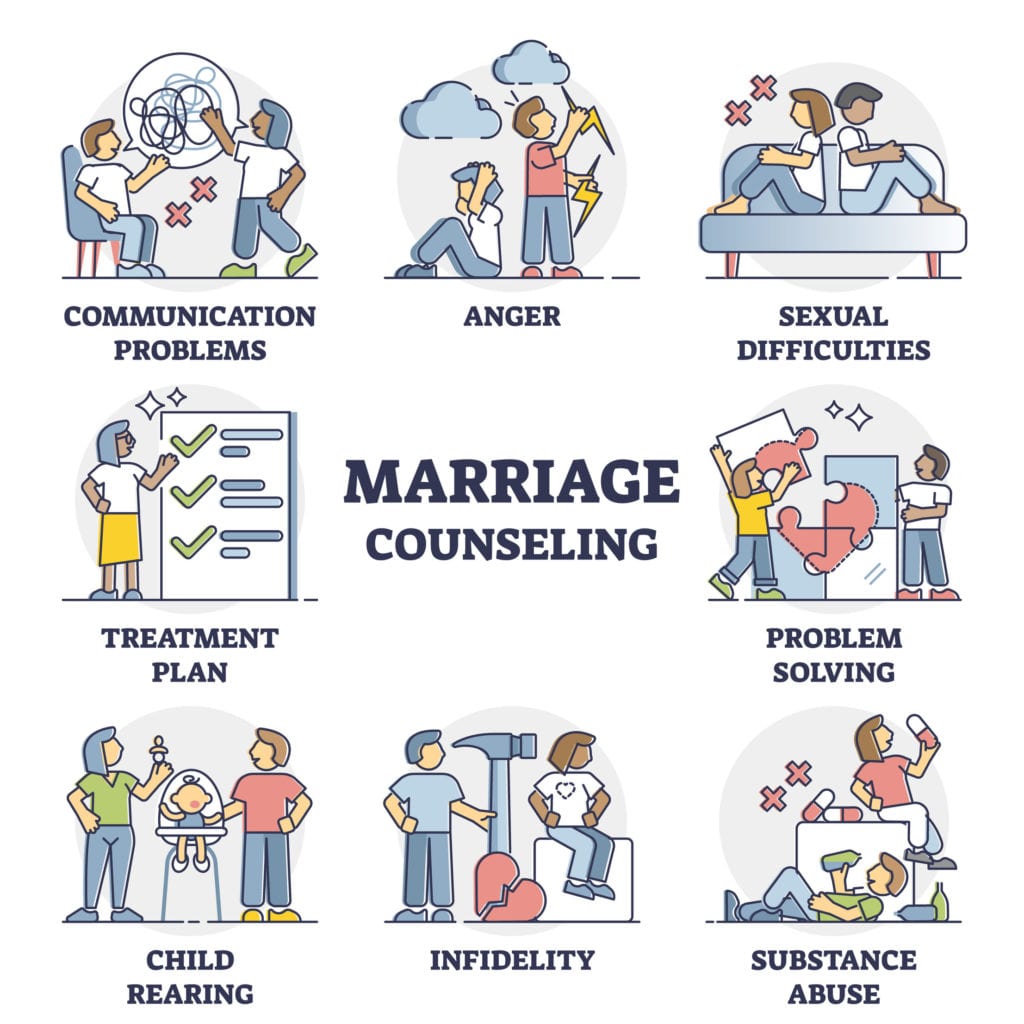

Are you already in an infidelity debacle? Then you may need to seek the help of a licensed therapist if you and your significant other cannot work out your differences. A licensed therapist can help the two of you figure out how to move past the affair by thinking about the factors that motivated one person to be unfaithful. The therapist can also help you develop specific ways to restore trust, maintain a stable partnership, and avoid future reoccurrence.
#5. Burn the Bridge with Your Cheating Partner


The first step to repairing a relationship after infidelity is ending the affair. However, this means more than no longer being physically intimate with the other person. It means cutting off all ties and communication with the person—you need to burn the bridge with your cheating partner. If you don’t, you may not be in any physical affair with the person; however, there could still be some emotional entanglement with the person in question. So, your best bet to stay free of the vice of infidelity is to cut off any communications with the person you were cheating with, to say the very least.
“Cheating and lying aren’t struggles; they’re reasons to break up.” — Patti Callahan Henry.
Once again, there is no justifiable reason for cheating. The sad thing is that it still happens in relationships. Cheating is the unholy foundation of broken trust in homes. Affairs are to blame for many that file for divorce. Whether physical, emotional, or virtual, infidelity is the chief culprit to many relationships’ failure. Whether it be a cheating husband or a cheating wife, couples need to do their best to salvage the love that they share. It all starts from the word, “Go!”
The ideal is for a couple to remain faithful to themselves and never have to deal with the issue of infidelity. Healing from an infidelity situation is possible. The healing of a broken heart that ensues from an affair is very much possible likewise. For that to happen, couples must work out their relationship goals with remarkable tact and tenacity to ensure that it works. Make up your mind to be a faithful spouse. Resolve in your mind that you will never become a narcissistic and abusive spouse. You can do it. It’s all about working on it. Start today. Let’s go!
Philosophy
Succinctly Plato & the Relevance of His Ideas Today
The Greek Philosopher, Plato, played a Herculean role in shaping Western Philosophy and tradition. Here, we look at some of his ideas and their present-day relevance. Read all about it.


Plato was a Greek philosopher born in 428/427 BC into a noble and prominent family. A student of Socrates, and teacher of Aristotle, he was the founder of the Academy in Athens, the first University in the West and the prototype for modern-day University. He is one prominent figure responsible for shaping philosophy and Western tradition. His ideas have stood the test of time through the years and still forging strong in the present and, most likely, in the future.
“The beginning is the most important part of the work.” ― Plato, The Republic.
His interest areas include Ethics, Politics, Metaphysics, Education, Art, Epistemology, Cosmology, Theology, Friendship, Literature, and Love. Many of Plato’s philosophical views are significant today. There are essential teachings from his widely known work, The Republic, which goes beyond Ethics, Business, and even personal development.
Plato’s Ideas and their Relevance


The influence of Plato is far-reaching. However, this article’s goal is not to fully exhaust all the teachings of Plato or examine all their relevance. We will succinctly look at some of the works of Plato and how they apply today.
#1. The Idea that Nothing is Beautiful without a Struggle


Plato, via this statement, speaks to individuals and those who always come up with excuses as reasons not to be responsible. You must sweat before you eat. This line is often used in workshops by motivational coaches. It is the truth, especially when it comes to work, as there must be an effort to get a result.
#2. The Most Important Part of the Work is the Beginning


This widespread opinion is as instructive as it is. Start first! Once you have started, you are buoyed to get to the finish line. This statement is the mantra of innovation. The essential thing in all that one does hinges on starting first. If you don’t begin something, you will never know how far you will be able to go.
#3. Teach Women the Same Thing as Men


If women are expected to do the same work as men, they must be taught the same thing: this idea can support the campaign of allowing them (as they choose) into any system and not stereotyping gender roles. As such, this notion promotes gender equality.
#4. The Need to Think More


Despite all technological advancements and innovations, there is still that sense of loss of our self-awareness. Most people will go with the crowd and not think much about their actions. Common sense is not so common these days. This affirms Plato’s argument that there will be “wrong values, careers, and relationships” because we get carried away with emotions and do not expend the energy needed to make rational decisions.
#5. The Ideal Society


The ideal society Plato spoke of is a community with skilled individuals who are happy with their lives. People who can think for themselves via ruling their minds will proffer solutions for the good of society. Those who tell the stories of reasons will bear the rule of their societies. Today, many societies lack this factor. Many have become entitled, whiny, and overly dependent. We are not solely to blame. The government bears most of society’s ire. Societal reformation is necessary to change mindsets to create a better community for all.
#6. Division of Labor


The first person who came up with the concept of the division of labor is Plato. The theory of his book The Republic revolves around society’s nature, focusing on labor division. The division of labor also forms one of the bases of the economic and marketing system. The division of labor, as he suggests, is because production capacity between individuals differs; specialization improves artistry and a well-timed result. His theory of this concept goes beyond consumer goods to include producer goods such as agricultural production, livestock, clothes, etc. This proposition isn’t limited to a particular setting, but he suggests collaboration with other societies.
#7. The Father-Son Relationship


Another relevant idea of Plato’s is that of the father-son relationship where the father’s role in the son’s life influences the son’s success. The relevance of this theory in today’s world makes a lot of sense. It is still a consistent philosophy today as children always look up to their parents. The idea of an ideal family as we use to know it has become distorted with a much watered-down value system from what it used to be. For instance, many single mothers keep the home together with the fathers missing in the children’s lives.
“The object of education is to teach us to love what is beautiful.” ― Plato, The Republic.
Despite making many contributions to philosophy, some of Plato’s ideas have been queried, debated, and ruled off. But it doesn’t take away how influential his works have been in the modern world and their relevance in man’s day-to-day life. This has been succinctly Plato!
Leadership
11 Reasons Why Empathy is a Core Leadership Trait
Empathy is simply “putting yourself in the other person’s shoes.” It strengthens the bond between people. It’s a rare quality to have in today’s organizations. Read all about it.


Empathy is simply “putting yourself in the other person’s shoes,” a straightforward definition at best, to say the very least. People often mistake sympathy for empathy, but they are two different concepts with some similarities. Sympathy is the ability to care for and understand another person’s sufferings or experiences, while empathy is the ability to feel their experiences. For instance, when a mother sees her child quiet and sitting on the ground, she may know what the child is going through and feel the same emotions by some level of deep emotional connection. A manager who sees one of his staff going through some difficult moments and responds with the right words and acts of care can show sympathy and transcend to the level of empathy.
“Empathy begins with understanding life from another person’s perspective. Nobody has an objective experience of reality. It’s all through our own individual prisms.” — Sterling K. Brown.
Empathy strengthens the bond between people. Leaders need this trait more than ever in a fast-paced world where feelings and human affection are gradually eroding. Most organizations today are driven by numbers of how the organization can add money to their bottom-line. The push for profit aggrandizement pushes aside all empathy as many organizations become heavily transactional. To these organizations, empathy is a sign of weakness. To them, there is no time to feel the emotions of their workers. However, there is always time to peel layer upon layer of profits to add to the bottom-line.
Empathy is a rare quality to have in today’s organizations. It is the hallmark of nurturing and sustainable leadership that still drives organizations’ profitability but does so from a culture of care. When a leader exudes this quality, he or she gains the respect, trust, and cooperation of his followers. Connecting with your workforce from a position of empathy creates a motivational ambiance that propels them to do their very best for that leader; hence, increasing productivity. Thus, at the workplace, their staff will feel loved; at the home front, children will feel loved and cared for and, most importantly, understood. In this article, I shall be addressing ten reasons and then some on why empathy is a core leadership trait.
#1. Empathy Helps You Define Purpose


Think about a company that doesn’t know what its customers want. A company that doesn’t ask their customers questions. An organization that is not sensitive to its customers’ experiences but keeps making a particular product or offering a service that its consumers are no longer willing to buy. Think of a teacher who keeps on giving explanations in a classroom of students where many of them are complaining of ill health, and he or she does nothing about it. There will be a disconnection. And when this happens, it will affect the purpose or mission of such a leader. Empathy helps leaders define the purpose of their organization.
#2. Empathy Elicits Support


When a leader shows empathy, it is likely to elicit his/her followers’ support and compliance. One of the underlying needs of man is the need to socialize. Followers want to know that they matter to their leadership. Empathy towards followers instills a sense of belonging and inspires motivation. When you show care and concern for people, you win their loyalty, love, and support. Followers tend to become more committed when they have a leader who shows concern for their feelings, needs and wants. Their commitment begins to wane when leaders are just highly official, diplomatic, and no more. An empathetic leader will evoke the support of his/her followers.
#3. Empathy Puts You in the Present


Leaders must remind themselves that it is their responsibility to take care of their people and their priority. To get better at this, you must keep observing and then connecting with your people in the present. That is where the leader’s empathy comes to play in the way they relate with their followers. The leader must be in the present to understand the emotional status quo of their followers. He/she must be here in the now with them. What makes them excited? What makes them feel bad or experience stress? When you develop your level of empathy, your subconscious mind rises to the occasion, and you can sense when your people are satisfied or dissatisfied with you per time.
#4. Empathy Helps Leaders Develop Emotional Intelligence (EI)


With empathy in place, you can develop your Emotional Intelligence (EI), which helps you in your relationship with people. According to Kendra Cherry, Emotional Intelligence (EI) refers to perceiving, controlling, and evaluating emotions. Emotional Intelligence (EI) creates a cycle of benefits. It improves decision-making, decreasing occupational stress, reducing staff turnover, increasing personal well-being, increasing leadership ability, and increasing team performance. Hence, with EI, you can understand people by their body language and the things they say, and you can act accordingly in the present without throwing things out of control. Without emotional intelligence in place, you may be doing things wrong, and people would never want to connect with you transparently to tell you where you’re getting it wrong as a leader.
#5. Empathy Builds Your Communication Skills
Every leader must know how to communicate clearly and effectively. Without this ability in place, it becomes challenging to meet and understand the needs of your people. When you develop empathy, you know just the right words to use in your communication with people under your care and control as their leader. Empathy will help you in building effective and potent communication skills. Far often than none, most leaders have been known to use harsh words on their followers, thinking that this is the way to get results, but this doesn’t last long. Being autocratic in communication will eventually erode the trust that your followers have in you as a leader.
#6. Empathy Makes You Prioritize the Needful
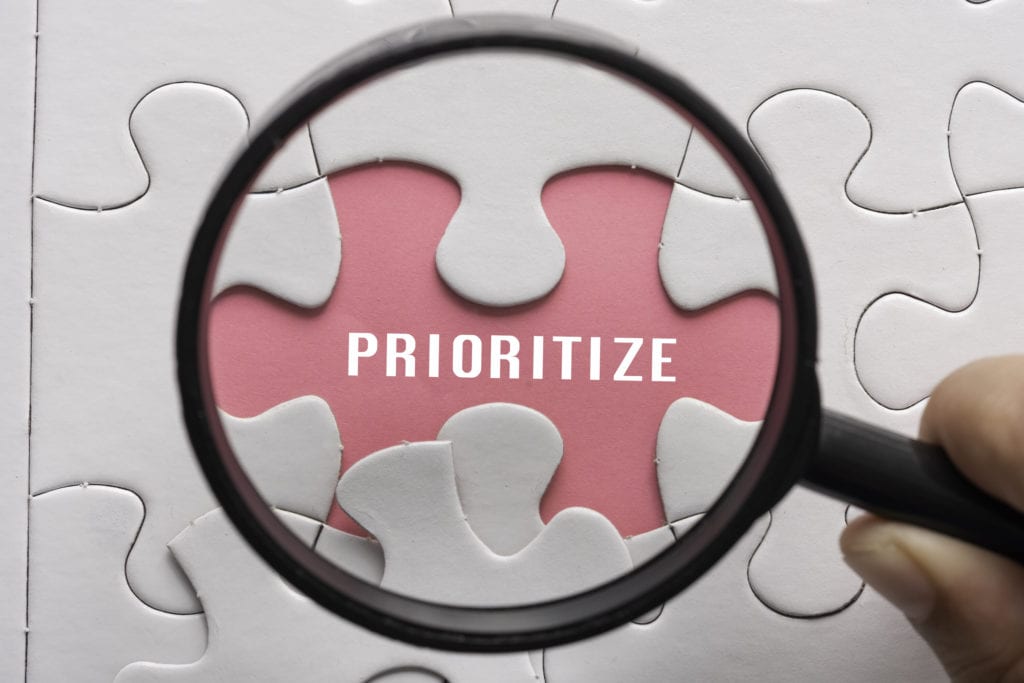

What matters most in life isn’t always the results, as people are prone to thinking. Prioritizing the needful is knowing what matters most. To the leader, what matters most is building and sustaining a connection with followers. The need for success in a family shouldn’t drive the head of the family to search for money at all cost disregarding his people’s feelings in the process. The need for success shouldn’t make a corporate leader disregard quality conversation. He shouldn’t ignore the need for connection with his followers to focus on profit scalability as if that’s all that matters in the long run. People love a leader who cares, not one who is money-driven only.
#7. Empathy Makes You More Human


Scientists have proved scientifically that our brains’ mirror neurons help us feel intuitive and even experience others’ feelings. What this shows is that every human being has the capacity for empathy. We are not robots; we are designed to feel. We are made to have compassion towards others. We all can grow our empathy towards others. Regrettably, not all leaders have been able to harness this ability. Leaders must begin to do this to bring to the fore this human part of them so that their followers will feel loved and cared for. Empathy fosters the growth of our humanistic tendencies. This, in turn, encourages more excellent followership that leads to greater productivity.
#8. Empathy Reduces Conflict


When a leader develops his empathy, it’s way easier for him to relate with his people effectively. It makes him know how to lead people in a way that reduces the possibility of endless conflict. A leader with empathy will find it easy to mediate or intervene between one staff and another in a dispute to bring about an agreement or reconciliation. That is the power resident in empathy and why it is a core leadership trait. It is an excellent diffuser of tension in organizations. With this good quality in place, he doesn’t jump into taking sides but considers both parties’ feelings and then intervenes wisely.
#9. Empathy Ensures A Good Legacy


When a leader leads his people with empathy, it is easier for them to continue with this standard even in his absence. People would be too willing to continue doing the right thing even in the leader’s absence. But when a leader is concerned only about profits, compliance, results, or numbers going to the bottom line, such a leader always leaves such an environment more tense than average. When they leave, the standard may fall below standard because people may react against the status quo and how things have been done. Hence, empathy will help a leader leave a good legacy after their tenure as a leader is long gone.
#10. Empathy Leads To Better Growth Trajectory


When there is empathy in place, people comply with leadership more quickly and give their best toward the growth of an organization, a system, or even a family setting. Followers in an ambiance full of empathy flowing from the leadership don’t feel like a number. Followers feel more like a number that the organization can easily get rid of in organizations that lack empathy. Growth may seem unbridled because of transactional leadership, but it will only be a matter of time before it all comes tumbling down like Humpty-Dumpty, who sat on the wall of his ego and seeming accomplishment. For instance, a father who loves his family and understands how they feel will be leading them aright, and they will, in turn, do the right thing by contributing their best to the organization’s growth. The same thing applies too in organizations apart from the family setting. Empathy is a crucial factor for leaders in the world today.
#11. Empathy Improves You
Finally, empathy improves you as a person. When a leader has empathy, it leads to a better him or her. The import of this is that he/she keeps working on this ability in them. They keep on tweaking this advantage to near mastery. While mastery is relative, it is something that each leader can arrive at in their own time. Sometimes, you may not be adept at it, but this should not get you worried or worked up, neither should it make you abdicate thinking that empathy isn’t worth it. Compassion is worth it all and then some. It is a continuous improvement éclair that helps you transcend to the heights of a one-of-a-kind leadership status. There are cases where your followers may want to take undue advantage of you due to how you empathize. Nonetheless, keep empathizing and don’t look track of the result. Empathy improves you—your only limit is your mind.


For someone to develop their empathy, there are certain qualities that they must build within themselves. They must work on their endurance level and self-awareness. Going forward, leaders should begin to observe and listen carefully to their people to get feedbacks per time so that they don’t treat their people with indifference or a lack of empathy. Be adept in developing the art and science of listening. Conversation or free speech should never be one-way traffic.
Another thing leaders must do is to eschew working on assumptions. Stop playing ignorant and telling yourself you don’t know how people think or are oblivious to what they say. Instead, start to observe appropriately so you’d get better at observing people. Also, ask questions. When your followers act strangely and don’t understand what they are saying or trying to communicate through their language, ask them if they are okay or have any issues. Another thing is to avoid distractions and be in the present, as I explained previously. Be there for your people, be there for your followers.


Empathy is a core leadership trait that you mustn’t play with. Understand this and keep working on yourself as a leader. Listen when your people are trying to communicate something to you. Don’t be too busy getting results and adding zeroes to your bottom line that you forget to know how your people are doing—to understand how they truly feel. Don’t get distracted to the point you don’t have time for your followers. Parents should listen to their children always and know what they are saying all the time, likewise corporate leaders.
“An exchange of empathy provides an entry point for a lot of people to see what healing feels like.” — Tarana Burke.
Sometimes when leaders multitask, it takes their mind away from effective and deep relationships with the people under their care. Parents who are too busy doing so many things in the rat race of life may have little time for their children. This can affect the quality of the relationship they have with them. While multitasking in itself isn’t bad, it comes with its downsides. This calls for caution. However, in rare cases, there are leaders who, despite multitasking, can still empathize at a deep level with the people under their care. Sometimes, I wonder, how do they do it!




























This design is spectacular! You obviously know how to keep a reader
entertained. Between your wit and your videos, I was almost moved to start
my own blog (well, almost…HaHa!) Excellent job. I really enjoyed what you had to
say, and more than that, how you presented it. Too cool!